Interdisciplinary Conference
TABOO - TRANSGRESSION - TRANSCENDENCE
in Art & Science
26-28 November 2020, University of Applied Arts Vienna/Online
PARTICIPANTS
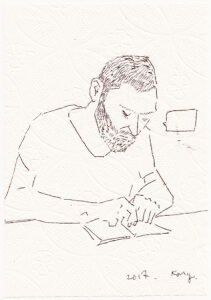
-
11. untitled (-)
Stefan Riebel was a concept artist living and working in Berlin, Leipzig and Athens. His works are process-driven, performative, poetic and often operate in series. His practice focuses on interventions in existing infrastructures as well as designing social spaces and interactive events.
-
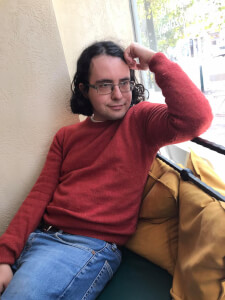
Adam Lovasz
92. Death as Absolute Transgression in the Philosophies of Michel Foucault and Claire Colebrook (Adam Lovasz, Mark Horvath)
Adam Lovasz is an Australian-born philosopher based in Hungary. Currently Lovasz is a PhD student enrolled in the Ethics and Political Philosophy Program at Eötvös Loránd University, Budapest. His interests include Continental Philosophy, embodiment, phenomenology, posthumanism and speculative realism. Lovasz is author and co-author of numerous books, most recently the first Hungarian-language textbook on Speculative Realism and New Realism, and is also co-founder (with Mark Horvath) of Absentology, a center for international collaboration and interdisciplinary philosophical inquiry.
Adam Lovasz
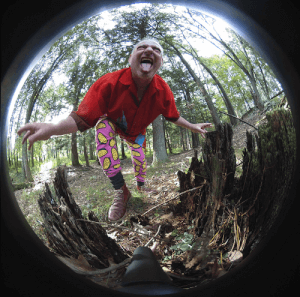
Adam Zaretsky
173. Interpersonal Protective Equipment: The Libidinal Economy of Aseptic Containment (Adam Zaretsky)
182. Body Shopping – challenging convention in the donation and use of bodily materials through art practice (Tarsh Bates, Isabel Burr-Raty, WhiteFeather Hunter, Charlotte Jarvis, Hege Tapio, Adam Zaretsky and Miriam Simum)
182. Body Shopping – challenging convention in the donation and use of bodily materials through art practice (Tarsh Bates, Isabel Burr-Raty, WhiteFeather Hunter, Charlotte Jarvis, Hege Tapio, Adam Zaretsky and Miriam Simum)
Adam Zaretsky is a Wet-Lab Art Practitioner mixing Ecology, Biotechnology, Non-human Relations, Body Performance and Gastronomy. Zaretsky stages lively, hands-on bioart production labs based on topics such as: foreign species invasion (pure/impure), radical food science (edible/inedible), jazz bioinformatics (code/flesh), tissue culture (undead/semi-alive), transgenic design issues (traits/desires), interactive ethology (person/machine/non-human) and physiology (performance/stress). His art practice focuses on an array of legal, ethical, social and libidinal implications of biotechnological materials and methods with a focus on transgenic humans. Dubbed the Lenny Bruce of Bioart, Adam is known for his outspoken verbiage and acts of uncommon quandary. Transgenic Humans as Bioart: https://www.youtube.com/watch?v=bgRkqh2DFLY On the Role of Artists in the Human Germline: https://vimeo.com/73838256 Superplants: https://www.youtube.com/watch?v=6LrJ2UBxM6E
Adam Zaretsky
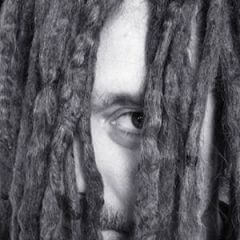
Adnan Hadzi
46. Mindless Futurism (Adnan Hadzi)
Adnan Hadzi is currently working as resident academic in the Department of Digital Arts, at the Faculty of Media and Knowledge Sciences, University of Malta. Hadzi has been a regular at Deckspace Media Lab, for the last decade, a period over which he has developed his research at Goldsmiths, University of London, based on his work with Deptford.TV. It is a collaborative video editing service hosted in Deckspace's racks, based on free and open source software, compiled into a unique suite of blog, cvs, film database and compositing tools. Through Deptford TV and Deckspace TV he maintains a strong profile as practice-led researcher. Directing the Deptford TV project requires an advanced knowledge of current developments in new media art practices and the moving image across different platforms. Hadzi runs regular workshops at Deckspace. Deptford.TV / Deckspace.TV is less TV more film production but has tracked the evolution of media toolkits and editing systems such as those included on the excellent PureDyne linux project.
Adnan Hadzi
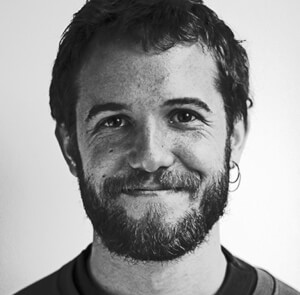
Adria Guardiola Rius
91. Taboo and capitalism. About incest, Youtube and profanation in contemporary capitalism. (Adria Guardiola Rius)
Cinematographer from Barcelona. Shooting and working in fiction, documentary, tv and video-essay films. Also PhD student in the Department of Communication in Pompeu Fabra University. Researching about the form of the whale in contemporary cinema as an allegorical image.
Adria Guardiola Rius
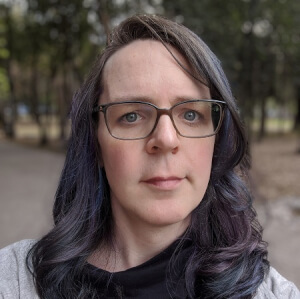
Adriana Knouf
102. Tranxxeno Entanglements: On the Audacity of Imagining Transgender People in Space (Adriana Knouf)
Adriana Knouf, Ph.D. works as a xenologist, as an artist-scientist-writer-designer-engineer. She engages with topics such as biological art, space art, radio transmission, non-human encounters, drone flight, queer and trans futurities, the voice, and papermaking. She is the Founding Facilitator of the tranxxeno lab, a nomadic artistic research laboratory that promotes entanglements amongst entities trans and xeno, and is an Assistant Professor of Art + Design at Northeastern University. Adriana is the author of How Noise Matters to Finance (2016) and other written work on topics like bioart, queer and trans existences, and weird temporalities. She has been selected for a number of prestigious residencies, including a Biofriction residency (SI) and participation in Field_Notes (FI), and regularly presents her work around the world.
Adriana Knouf
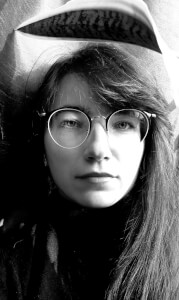
Agnieszka Wolodzko
18. Biodemonological re-enchantments – or how to contaminate through intimate stories of commons without consensus (Agnieszka Wolodzko)
Dr. Agnieszka Anna Wołodźko is a lecturer and researcher at AKI Academy of Art and Design, ArtEZ where she established and coordinates BIOMATTERs, an artistic research program that explores how to work with living matters. Her research focuses on affect theory, posthumanism and intersection between art, ethics and biotechnology. She is an artistic and a public curator of exhibitions and events on art working with living matters and art and science relations. Her recent relevant publications are: "Forgotten Rituals of Yearning," Capacious: Journal for Emerging Affect Inquiry; “Materiality of affect. How art can reveal the more subtle realities of an encounter,” in This Deleuzian Century: Art, Activism, Life (eds.) Rosi Braidotti and Rick Dolphijn; currently working on her book “Bodies within Affect. Practicing Contaminating Matters through Bioart.”
Agnieszka Wolodzko
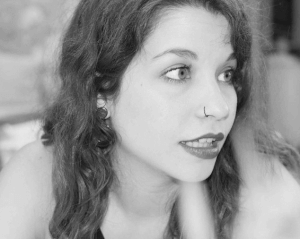
Aikaterini Papakyriakopoulou
52. The Gendered Machine in Science Fiction Film: Transgressing the Boundaries (Aikaterini Papakyriakopoulou)
Katerina Papakyriakopoulou is a PhD candidate in Film Studies at the Department of Communication and Mass Media of the National and Kapodistrian University of Athens. She obtained her Master’s in Cultural and Film Studies in 2016 (Grade 1st, scholarship awarded) and her Bachelor’s in Communication and Mass Media Studies in 2014. She also has a Piano Degree from the National Conservatory of Athens. Katerina did her internship at the Athens Digital Arts Festival as a Communications Administrator. Since 2011, she has worked as a journalist in several online media, including Avgi Newspaper Agency, while she has also volunteered in ERT Open as a radio producer. In May 2016, she participated in the 10th Audiovisual Arts Festival. In tandem with her PhD studies, she is currently working as a Project Administrator at the University of Manchester, UK. She speaks Greek, English and French.
Aikaterini Papakyriakopoulou
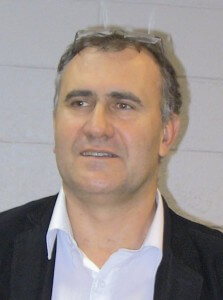
Alain Lioret
95. Deconstructing the isolated artist-astronaut paradigm. (Ioannis Bardakos, Eirini Sourgiadaki, Alain Lioret)
Alain Lioret is a Generative Artist and an Associate Professor in the Department of Arts and Technology of the Image at the University Paris 8 in France) within the laboratory INREV (Digital images and Virtual Reality). He has been working and researching for several years on the applications of complexity and artificial existence (connectionism, evolutionism, cellular automata, etc.) in an artistic and media theoretical context. Alain Lioret’s artistic work also explores motion in simulated beings and general aspects of artificial life, using biological inspiration, neural networks, genetic algorithms and programming, fractals, crowd simulations, etc. He is the author of the books ‘Émergence de Nouvelles Esthétiques du Mouvement’, and ‘L’Art Génératif’. Specialist with research & development (innovative techniques in 3D animation, use of dynamics, etc.), and he has participated in many projects (virtual actors, Attitude Studio R&D, etc.).
Alain Lioret
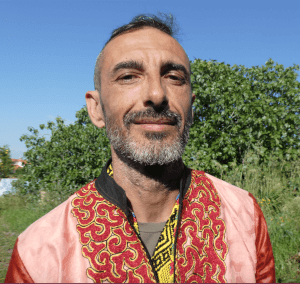
Alan Tod
23. Forest Art : The artist is indigenous from the forest. Introduction to Law Art and Shamanic Art. (Alan Tod)
Born in 1977, Alan Tod is the artistic name of Julien Alain Louis Isoré. Julien Isoré began painting at age 10 and was interested in biology and the history of art. At the age of 24, after a master's degree in public law and a post degree in comparative intellectual property , Julien works for the National French television in entertainment as an artistic collaborator. At the age of 28, Julien Isoré opens his first painting studio in Paris and launches his first work of Total art: the international advertising campaign for love (LOVE: www.artforlove.fr). In 2007, he joined the School of Fine Arts in Lisbon (cieba) with his project: "Comparative LAB" (https://dessinisore.blogspot.com/) in collaboration with the School of Medicine of Lisbon and the School of Sociology of the “Imaginaire” of the University of La Sorbonne. He produces and organizes international exhibitions, collective performances, published articles and festivals on the theme of the collective imaginary and its relationship with art. He is particularly interested in the process of building new cultures and finding new spirit of art. Since 2014, Julien works under the name of Alan Tod and has been proposing the FOREST ART (FOREST IS ART) and collaborating with the biologist Fernando Souza (Bazel, Switzerland) and with the artist Marta de Menezes (Lisbon, PT) to develop bio-arte works. The forest embassy is exhibiting in remarkable shows in New York, Mexico or Lisbon. In 2019, Alan is a PHD Candidate in Fine Art (Arte Plasticas).
Alan Tod
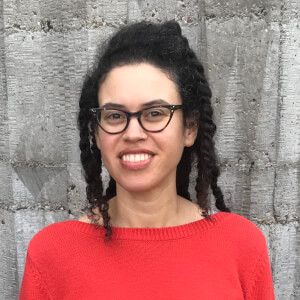
Alanna Lynch
110. Volatile Effluvia: ‘Bad’ Smells as Resistance (Alanna Lynch)
Alanna Lynch is a Canadian artist and researcher based in Berlin. She works with living organisms and biological materials, along with their messy, visceral, ephemeral states and pungent smells. Recognizing the interdependence of our collective bodies, minds, and emotions within systems of power, a focus of her work is on contagion and the politics of affect. With a background in Biology and textiles, and degrees in Psychology, Information Studies and Fine Art, she has exhibited and performed internationally. Most recently she has exhibited at Access Gallery (Vancouver), Le Commun (Geneva), Whose Museum (Malmö), Art Laboratory Berlin, La Centrale (Montreal), and the Gothenburg Konsthall, and she has performed at Tempting Failure (London). She is a founding member of the artist collective Scent Club Berlin. She was awarded the Berlin Art Prize (2018), and her work has been supported by the Canada Council for the Arts. www.alannalynch.com
Alanna Lynch
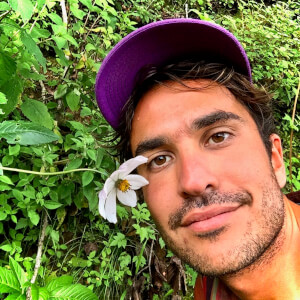
Alejandro Chellet
177. One must have a bone, not be afraid to show the bone, and to lose the meat in the process (Alejandro Chellet)
Alejandro Chellet is a Mexican multidisciplinary artist, curator and permaculture designer. His art addresses the misplaced core principles of coexistence, the loss of connection with Nature and the political and environmental context of urban societies. From social practice to site specific, urban interventions and performances he is using permaculture, artivism, improvisation, somatic movement, politics, altruism and shamanism. His art has been shown at festivals, museums and galleries in Europe, Asia, North, Central and South America. In 2014 Alejandro started co-designing together with Grace Exhibition space an ongoing art and permaculture summer residency program in Rosendale, NY. In 2015 he ventured into opening Casa Viva Gallery, an artist-run space for contemporary art in Mexico City with five years of programming. Lastly in February 2020 he launched a broader art residency program at the community space Huerto Roma Verde in Mexico City, his current Art-Life base after the pandemic breakout.
Alejandro Chellet
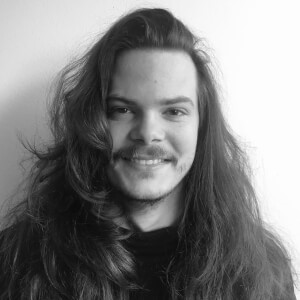
Aleksandar Jevremovic
157. Good and Evil Beauties: An Essay on the Relationship Between Moral and Aesthetic value (Aleksandar Jevremovic)
Aleksandar Jevremovic is a master student of Aesthetics (Ästhetik) at the Goethe University in Frankfurt am Main, Germany. He completed the BA studies of philosophy at Belgrade University with the focus points history of philosophy, aesthetics, and philosophy of science. In January next year, he is starting his Ph.D. under the mentorship of Prof. Vinzenz Hediger on the aesthetics of propaganda film. Aleksandar's main interests include the history of aesthetics with a focus on 18th-century aesthetic theory, aesthetics of film, and the relationship between moral and aesthetic evaluation.
Aleksandar Jevremovic
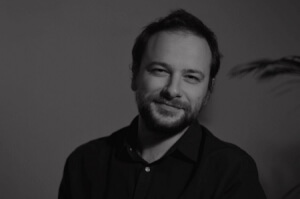
Aleksandar Vejnovic
33. Entertaining Death: Hologram and the looming loss of culture (Aleksandar Vejnovic)
Aleksandar Vejnovic (*1991) is a lecturer, media theorist and cultural facilitator based in Berlin. His area of interest are acoustic ecology, media philosophy, media art and intercultural audience development. Vejnovic studied Digital Media and Media Culture in Corfu and Darmstadt. He also worked as a research assistant at the Soundscape & Environmental Media Lab of Darmstadt UAS. Their research focus were new media communication, media aesthetics, acoustic ecology, culture of perception, 3D Audio and Fulldome Cinema technology. Currently, Vejnovic runs lectures at the University of Ústí nad Labem (CZ), University of Rijeka (HR) and Darmstadt UAS (D).
Aleksandar Vejnovic
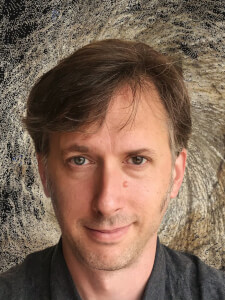
Alex May
87. Fermenting Futures (Diethard Mattanovich, Anna Dumitriu, Alex May, Özge Ata)
Alex May is a British contemporary artist whose practice focusses on the cultural and societal impact of digital technologies, and forges creative links between art, science, and technology through a wide range of digital new media, including virtual reality, photogrammetry, algorithmic photography, robotic artworks, video projection mapping, interactive installations, generative works, performance, and video and sound art. His international exhibition profile includes Tate Modern, Ars Electronica, The Francis Crick Institute, LABoral (Spain), the Victoria & Albert Museum, Royal Academy of Art, ZHI Art Museum (China), Wellcome Collection, Science Museum, Bletchley Park, Eden Project, Goldsmiths, One Canada Square in Canary Wharf, the Museum of Contemporary Art in Caracas (Venezuela), the Science Gallery in Dublin (Ireland) and Bengaluru (India), Princeton University, University of Calgary (international visiting artist 2016), Texas A&M University, and the Beall Center for Art + Technology, University of California, Irvine.
Alex May
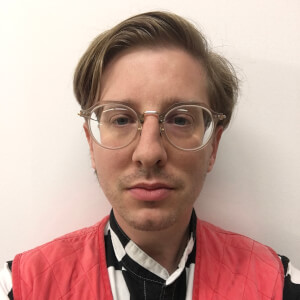
Alex Young
168. Ruderal Futures (Alex Young)
Alex Young is a multidisciplinary artist, writer, and curator who explores the interplay of both human and non-human actors as they engage in the collaborative shaping their environments. Young’s solo and collaborative works have been presented at numerous venues internationally including Conflux at NYU, Brooklyn International Performance Art Festival, and Flux Factory in New York, NY; Kiasma Museum and Alkovi Galleria in Helsinki, Finland; ACC Galerie in Weimar, Germany; Stadtische Museen Zittau in Zittau, Germany; Spanien 19C in Aarhus, Denmark; SDAI in San Diego, CA; Beyond/ In Western New York Biennial, UB Art Gallery, and Hallwalls Contemporary Arts Center in Buffalo, NY amongst others. Forthcoming and past curatorial projects include: Ruderal Futures at SixtyEight Art Institute, GROPING in the DARK at Museum of Contemporary Art Tucson, and Universal Dissolvent: Fragments from the Southern California Megalopolis at the San Diego Art Institute.
Alex Young
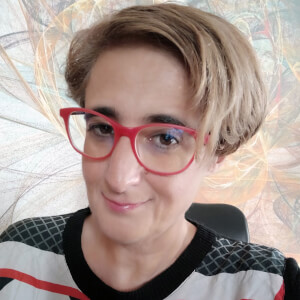
Amalia Foka
43. Breaking the Silence: Machine Learning Identified Taboos (Amalia Foka)
Amalia Foka (b. Greece) is a Creative Artificial Intelligence Researcher and educator who explores the intersection of computer science and art. Her work makes use of different artificial intelligence technologies and social media data to generate and study art. She is currently an Assistant Professor in Computer Science: Multimedia Applications for the Arts at the Department of Fine Arts & Art Sciences, School of Fine Arts, University of Ioannina, Greece, where she teaches courses on creative coding, creative interactive systems, and generative AI art. She holds a BEng in Computer Systems Engineering (1998) and an MSc in Advanced Control (1999) from the University of Manchester Institute of Science & Technology (UMIST) in the United Kingdom. She also holds a Ph.D. in Robotics (2005) from the Department of Computer Science of the University of Crete, Greece. She lives and works in Greece.
Amalia Foka
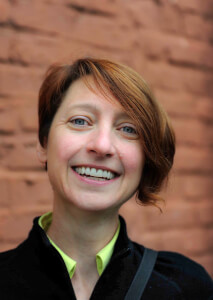
Amy Youngs
30. Mud Workshop (Nicole Clouston, Amy Youngs, Jenifer Wightman and Jennifer Zackin)
Amy M. Youngs creates eco artworks that explore interdependencies between technology, plants and animals. Her practice involves entanglements with the non-human, constructing ecosystems, and seeing through the eyes of machines. She exhibits nationally and internationally at venues such as the Te Papa Museum in New Zealand, and the parks in New York City. She received a BA in Art from San Francisco State University and an MFA from the School of the Art Institute of Chicago. She is an Associate Professor of Art at the Ohio State University where she leads interdisciplinary grant projects and teaches courses in digital art, eco art, and art/science.
Amy Youngs
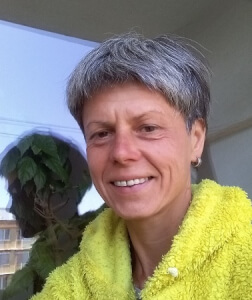
Andrea Gogova
155. Cyborg – author (Andrea Gogova)
Andrea Gogová is currently a PhD. candidate of Multimedia and Design at FMK Tomas Bata University in Zlin, Czech rep. She was born in Martin, Slovakia. Andrea Gogova was educated at Academy of Fine Arts and Design, Bratislava Slovakia and graduated both a master’s degree in design and bachelor’s degree in Visual Communication. In 2019 she was an Erasmus doctoral student in the Metatechnicity research group at Cardiff Metropolitan University in UK and also a Freemover doctoral student at Ionian University in Corfu in Greece. As the part of her research she practised at “f.e.a” - Forum Experimentelle Architektur – Museums Quartier in Wien in the position of Erasmus doctoral student. In her transdisciplinary research, spanning Art & Design, Science, Technology and Electronic Literature, she focuses on the ‘process based’ theoretical paradigm in digital typography and creative possibilities of a digital text layout which are based on the transition from grid to rhizome. In her arts practises she is interested in an intermedia creative space.
Andrea Gogova
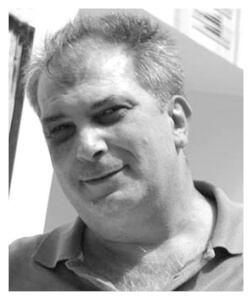
Andreas Giannakoulopoulos
149. Like Real Friends Do: Communicating in Social Media with Sophia the Robot (Laida Limniati, Dalila Honoratο, Andreas Giannakoulopoulos)
Dr Andreas Giannakoulopoulos is an Associate Professor at the Department of Audio and Visual Arts of the Ionian University, where he teaches courses related to Internet Communication, New Media and the Web Technologies. He holds a BA in Economics, a BA in Communication and Media Studies and a Master of Arts in Communication and Media Studies from the University of Athens (NKUA), and a Master of Science in Logic from the University of Amsterdam. His doctoral dissertation, approved by the University of Athens, was in the field of web accessibility. The main areas of his academic activities include computer mediated communication, web technologies and e-learning systems as means of effective digital communication. In relation to his academic interests and activities he has extensive experience in practical web development especially for academic and scientific projects.
Andreas Giannakoulopoulos
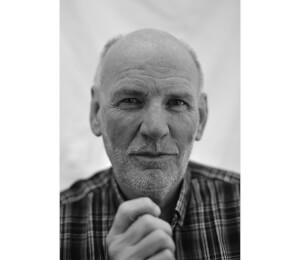
Andrew Carnie
59. Self - Illuminated (Andrew Carnie)
www.andrewcarnie.uk Andrew Carnie is an artist and academic. His artistic practice often involves a meaningful interaction with scientists regarding themes and ideas. A starting point is often recent scientific studies on the brain and neurology. His overarching concern is how we get a sense of our-selves, through science theory, ideas, and images. He works in a variety of media and scale, from watercolor to large installations. The work is most often time-based in nature, involving slide projection using dissolve systems or video projection onto complex screen configurations. In a darkened space layered images appear and disappear on suspended screens, the developing display absorbing the viewer into an expanded sense of space and time through the slowly unfolding narratives that evolve before and around them. This work has been exhibited widely from the Daejeon Museum in South Korea to Exit Art in New York.
Andrew Carnie
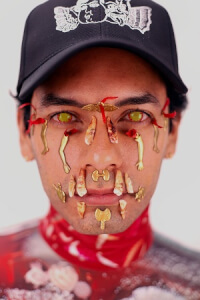
Angel Lartigue
100. Science at the Club (Angel Lartigue)
Angel Lartigue is an artistic researcher born and raised in Houston Texas. Lartigue's work explores the relationship between the body and land through the use of "putrefaction" matter as raw material. This concentration has led them to experimenting with processes of decomposition into artworks, incorporating fungi, insects, and even odors captured during fieldwork, including research training in human remains recovery at Texas’ “body farms” in 2018. Designer of 2017 label book, "La ciencia avanza pero yo no" is part of the Museum of Fine Arts Houston’s Hirsch Library rare books collection. Lartigue was accepted as honorary research fellow to artistic laboratory, SymbioticA, part of the University of Western Australia Perth for 2020. Photo credits: Tere Garcia
Angel Lartigue
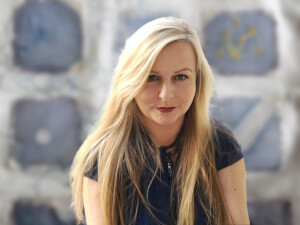
Anna Dumitriu
87. Fermenting Futures (Diethard Mattanovich, Anna Dumitriu, Alex May, Özge Ata)
Anna Dumitriu works with BioArt, sculpture, installation, and digital media to explore our relationship to infectious diseases, synthetic biology and robotics. Exhibitions include ZKM, Ars Electronica, BOZAR, The Picasso Museum, HeK Basel, and MOCA Taipei. She holds visiting research fellowships at the University of Hertfordshire, Brighton and Sussex Medical School, and Waag, plus artist-in-residence roles with the Modernising Medical Microbiology Project at the University of Oxford, and the National Collection of Type Cultures at Public Health England. She was the 2018 President of the Science and the Arts Section of the British Science Association. Her work has featured in many significant publications including Frieze, Artforum International Magazine, Leonardo Journal, Nature and The Lancet. Current collaborations include the Institute of Microbiology and Microbial Biotechnology at BOKU in Vienna, the EU CHIC Consortium, the University of Leeds, and the Institute of Epigenetics and Stem Cells at HelmholtzZentrum in München. https://annadumitriu.co.uk/
Anna Dumitriu
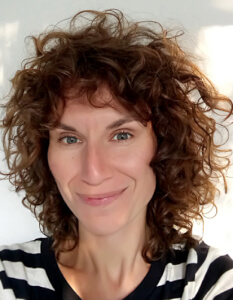
Anna Kedziora
111. Hætta - on the edge of a disaster (Anna Kedziora)
Anna Kedziora (PhD), born in 1982, lives and works in Poznan, Poland. Visual artist and curator. Assistant professor and a former head of Photography Part-time Program (2016-2019) at the Photography Faculty (University of Arts in Poznan, Poland). Co-founder and manager of an international photography competition Poznan Photo Diploma Award. Her field of artistic research embraces a wide scope of what might be called „Conflicted Landscapes”. She has worked i.a. on the notions of Landscape & Power, Landscape & Trauma, and most currently Landscape of Loss. Her main medium is photography and video, she also experiments with ceramics and installations. Her work often involves field research eg. during research journeys to Iceland, Spain, Thailand and Cambodia.
Anna Kedziora
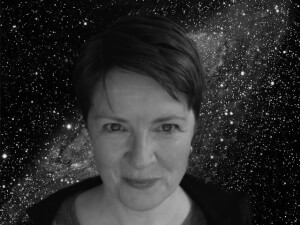
Anna Walker
147. Macha, the Shapeshifting Goddess (Anna Walker)
Anna Walker, Ph.D. is an artist, writer, and researcher working in mixed media, specifically moving image and sound. She has been exploring trauma in her art-practice research for many years, how the body responds to overwhelming traumatic and stressful situations and how it reorganises itself to cope with or manage the trauma. She was awarded an MA in Fine Art from Southampton University in 1998, and a certificate in Psychotherapy from CBPC, Cambridge, in 2010. An interest in the effects of trauma on the body led her to a Ph.D. in Arts and Media at Plymouth University, which she completed in May 2017. Her arts-practice balances the auto-ethnographic with the critical, utilising personal experiences to facilitate a greater understanding of memory, trauma, and its wider cultural implications. Most recently, Anna is researching storytelling as performance, bridging technology with traditional storytelling.
Anna Walker
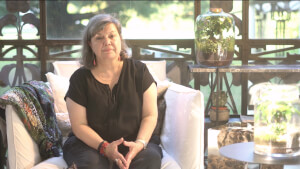
Annick Bureaud
133. The project Lygophilia (Robertina Sebjanic, Annick Bureaud, María Antonia González Valerio, Polona Tratnik)
174. Staying in touch: sci-fi experiments for post-coronavirus art curating (Marta de Menezes, Annick Bureaud, Regine Rapp, Christian de Lutz, Byron Rich, Paula Burleigh, Francesco Kiais, Jill McDermid-Hokanson and Christl Baur)
174. Staying in touch: sci-fi experiments for post-coronavirus art curating (Marta de Menezes, Annick Bureaud, Regine Rapp, Christian de Lutz, Byron Rich, Paula Burleigh, Francesco Kiais, Jill McDermid-Hokanson and Christl Baur)
Annick Bureaud is a French Paris-based independent art critic and curator in the field of art-science-technology. She contributes to the contemporary art magazine art press. She runs Leonardo/Olats, the franco-european branch of Leonardo/ISAST. www.annickbureaud.net - www.olats.org
Annick Bureaud
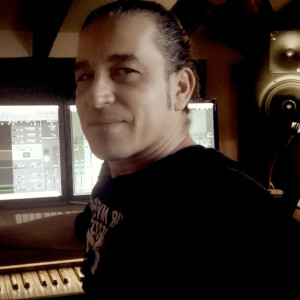
Apostolos Loufopoulos
24. Orders of the Heard. The Order of Sorcery (Luc Messinezis, Apostolos Loufopoulos)
Apostolos Loufopoulos, composer, sound designer, Associate Professor at the Ionian University, Department of Audio & Visual Arts, studied at the Ionian University, Greece and at City University, London. His work is mainly focused on nature and sound, but also on the inter-contextual approach to music and the convergence of musical genres and arts. His creations have been presented internationally in renown festivals and conferences, and received a number of awards at international competitions such as Αrs Electronica (Austria), Bourges (France), Noroit (France), Metamorphoses (Belgium), Space of Sound (Belgium), Franco Evangelisti (Italy), Musica Nova (Czech Republic), SCRIME (France), I. Xenakis (Greece), D. Dragatakis (Greece). Discography includes collections by INA-GRM, Musiques & Recherches, Ionian University, CyberArts, Touch Records and a personal release. His scores have been published by S. Zerboni (Milano) and Just Flutes (London). He is a founding member of HELMCA and the Greek Society for Acoustic Ecology. https://ionio.academia.edu/ApostolosLoufopoulos https://soundcloud.com/apostolosloufopoulos/sets https://www.youtube.com/user/apostolosloufopoulos
Apostolos Loufopoulos
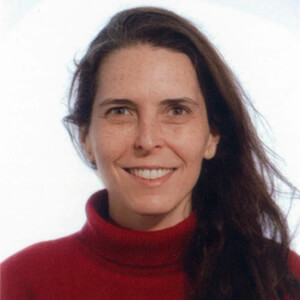
Arantzazu Saratxaga
60. Process and Ontogenesis: Entropy and self-organisation in embryonic development of organically and inorganically organised structures. (Arantzazu Saratxaga)
Arantzazu Saratxaga Arregi (*1982) wrote a dissertation at the Hochschule für Gestaltung Karlsruhe on “A systematic introduction of a matrixial philosophy. For a multivalent ontology: mother-worlduterus” in philosophy. https://www.transcript-verlag.de/978-3-8376-4590-3/matrixiale-philosophie/. She is currently a postdoctoral researcher at the Academy of Fine Arts (Vienna) in the project “The Dissident Goddesses´; Network. Contemporary Prehistories”. In addition, she is lector at the University of Applied Arts, Vienna and holds lectureships and seminars at several German universities and colleges with a focus on cultural engineering, media theory and cybernetics. The themes of her recent seminars have been the exploration of themes that encompass the blind spot of mediality as such, where mediality is entangled in a contradiction: Immediacy and mediation, openness and closeness. In addition, their topics focus on the philosophical approach to technology and cultural education, e.g. intimacy and technical media. Her research focuses on the interior in its broad semantic interpretation from a philosophical point of view and based on disciplines such as media philosophy, philosophy of technology, theory of science, cybernetics and contemporary philosophies. This is concerned with the question of the development of endomilieus and how they occur in the absence of their appearance. The attempt at a processual ontology of the endomilieus forms a focal point of matrixial philosophy.
Arantzazu Saratxaga
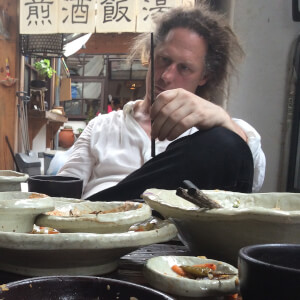
Arthur Clay
80. iJackers Guide to Virtual Protest (Arthur Clay)
Art Clay is self taught irregardless of the possession of diplomas for music and languages. Educators attempts at forming his future were disregarded as self serving and determined goals were then reached through indeterminate means determinate only of time and place. Due to contact with the works or persons on the following list, hopelessly bond to the twentieth and twentieth first centuries: Leonardo da Vinci, Buckminster Fuller, Sun Ra, John Cage, Marcel Duchamp, Billy Mame, and himself. Hiw works make use of modern media for various genre in the area of sound and image such as video, photography, music and performance. Performance experience has been here and there, worldly, international and, of course, at home.
Arthur Clay
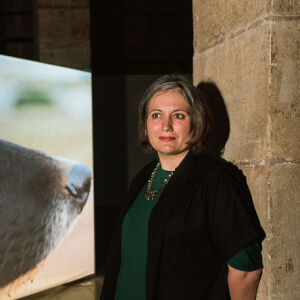
Belen Cerezo
143. Lighting the reading (Belen Cerezo)
Artist, researcher and Associate Lecturer in Photography, Nottingham Trent University where she completed her practice-led PhD research “What is it ‘to move’ a photograph? Artistic tactics for destabilising and transforming images” in 2015. Her work examines the functioning of images and attends to the transition from a representational model to a performative one that explores the new forms of action, relationship and practice generated by images. She makes moving-image installations, videos and photographs. Since 2017, her main line of enquiry stems from her encounter with the work of Brazilian writer Clarice Lispector. Recent projects: group show Myths of the Near Future, TEA, Tenerife (2019), group show Un triángulo_tres vertices_ser rizoma, Eskualdea, Alava, (2019), residency-exhibition A Pool of Light, OPEN 3, The Collection, Lincoln (2019), residency in the Northeast of Brazil in BOLIDE 1050 (2018), and solo show Viviendo el día, CC Montehermoso, Vitoria, Spain (2018), and ‘Rehearsing Memory, Belton 2015’, commission for Belton House, The National Trust, (2015).
Belen Cerezo
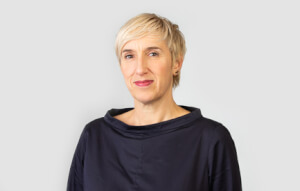
Beverley Hood
98. Tolerating Uncertainty – we began as part of the body (Beverley Hood)
Beverley Hood is an artist and Reader in Technological Embodiment & Creative Practice, at Edinburgh College of Art, University of Edinburgh. She trained in Sculpture and Electronic Imaging at Duncan of Jordanstone College of Art, Dundee and Nova Scotia College of Art & Design, Canada. Since the mid 1990’s she has interrogated the impact of technology on the body, relationships and human experience through the creation of digital media and performance arts projects, and writing. She has worked collaboratively on numerous occasions, developing projects involving a range of practitioners, including medical researchers, scientists, writers, technologists, dancers, actors and composers. Her projects have been performed, screened and exhibited at leading international venues and events, including: Stockholm Kulturhuser; V&A Digital Futures; Talbot Rice Gallery; Edinburgh Art Festival; LifeSpace - Science Art Research Gallery; ISEA; Edinburgh International Festival; CCA Glasgow; Institute of Contemporary Art, London; Cornerhouse, Manchester.
Beverley Hood
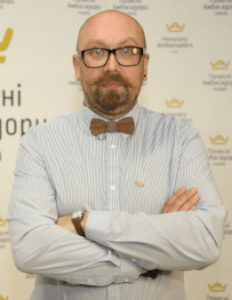
Bohdan Shumylovych
7. Rites of Passage: Transgressions and the Search for New Meaning in [West] Ukrainian art: late 1980s – early 1990s (Bohdan Shumylovych)
Bohdan Shumylovych PhD, history, cultural studies • The head of the Public History Program, Center for Urban History, L’viv, Ukraine • Associate Professor, Ukrainian Catholic University, L’viv, Ukraine The main focus of my work is media history and the history of television in East Central Europe and the Soviet Union, as well as the interaction of digital history and traditional historiography. I am also interested in the issues of urban-rural relations, regional decarbonization, and urban creativity. At Catholic University he teaches courses on visual studies, urban and Soviet history. EDUCATION • 2014-2020 – PhD of History and Civilization, Department of History and Civilization, European University Institute, Florence, Italy. • 2004-2005 – MA in Central European History, Central European University, Department of History, Budapest, Hungary. • 2001-2002 – Junior Faculty Development Program, George Washington University, Washington DC, USA. • 1993-1999 – Specialist diploma of Higher Education in Art History, L’viv Academy of Arts, Department of History and Theory of Art, L’viv, Ukraine.
Bohdan Shumylovych
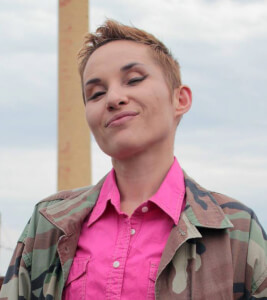
Boryana Rossa
176. Glow Me Glow Me Not (Boryana Rossa)
Boryana Rossa (Associate Professor in Transmedia, Syracuse University, NY) is an interdisciplinary artist and curator who works in the fields of electronic arts, film, video and performance art. In 2004 together with the Russian artist Oleg Mavromatti, Rossa establishes UTRAFUTURO–an international group of artists engaged with issues of technology, science, and their social implications. In 2012 Rossa has finished her Ph.D. on Post Cold-War Gender Performances, at Department of Arts, Rensselaer, Troy, NY. Director of Sofia Queer Forum, together with philosopher and activist Stanimir Panayotov. Her works have been shown internationally at venues such as GARAGE Museum of Contemporary Art, Moscow, The Elizabeth A. Sackler Center for Feminist Art at the Brooklyn Museum, Brooklyn, NY; Museum of Contemporary Art (MUMOK) Vienna, Austria; Zacheta Gallery, Warsaw, Poland; Kunstwerke and Akademie der Kunste, Berlin, Germany etc.
Boryana Rossa
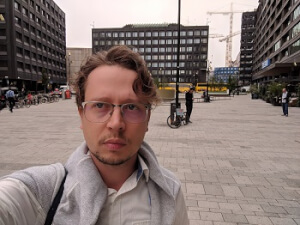
Byron Rich
178. Bioscientific Imaginaries (Kathy High, Marta de Menezes, Jennifer Willet, Byron Rich and Paula Burleigh)
174. Staying in touch: sci-fi experiments for post-coronavirus art curating (Marta de Menezes, Annick Bureaud, Regine Rapp, Christian de Lutz, Byron Rich, Paula Burleigh, Francesco Kiais, Jill McDermid-Hokanson and Christl Baur)
174. Staying in touch: sci-fi experiments for post-coronavirus art curating (Marta de Menezes, Annick Bureaud, Regine Rapp, Christian de Lutz, Byron Rich, Paula Burleigh, Francesco Kiais, Jill McDermid-Hokanson and Christl Baur)
Byron Rich is an artist, professor and lecturer born in Calgary, Alberta, Canada. His work exploring speculative design, biology futures and tactical media has been widely shown and spoken about internationally. He pursued a degree in New-Media at The University of Calgary before relocating to Buffalo, New York where he obtained an MFA in Emerging Practices at The University at Buffalo.He was the runner up for the 2016 BioArt & Design Award, and the recipient of an Honorary Mention at the 2017 Prix Ars Electronica. He now serves as Director of Art/Science+ Innovation and Assistant Professor of Art at Allegheny College in Meadville, Pennsylvania.
Byron Rich
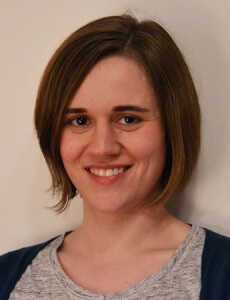
Carina Zabini
144. Playing With the Curious Cat (David Kovarik, Carina Zabini)
Carina Zabini is an architect,artist and designer from Vienna, Austria. She studied architecture at the Technical University of Vienna and the University of Applied Arts - Studio Lynn, where she received her Master with distinction in 2016. She gained her professional experience in Vienna, working with Caramel Architekten, Berger&Parkkinen and Tzou Lubroth Architekten, where she held the postions of lead designer and project manager. Her research focus lies in applying digital design technologies in collaborative processes and using them as a tool for understanding space. In the past years she has collaborated on this topic with different organisations, such as Wanderklasse and ArchitekturClub Wien, and has received scholarships from KulturKontakt Austria and Architektur Stiftung for her work, which aims at linking different professional fields with architecture in a novel way.
Carina Zabini
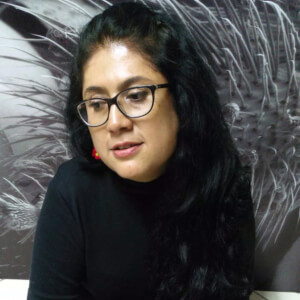
Cecilia Vilca
42. Forensic love and Visceral Data: Bio-antidote for romantic love (Cecilia Vilca, Lorena Peña)
Peruvian trans artist feminist, chola techno-witch and language activist. Digital Arts Master’s Degree, Universitat Pompeu Fabra, Barcelona, Spain. Founding member of creative and digital heritage division, MyAP - Microscopia Electrónica y Aplicaciones en el Perú. Her artistic work is made with technology in concept and realization exploring its relationship with gender, society, and nature. From a decolonizing vision it develops in the borders of art and science, connecting ancient technologies with the new ones. Her main goal and poetic are to encourage reflection through revelation using technology. Six Art Residency Programs: Mexico, Bolivia, and Brazil. She has exhibited her work, organized exhibitions, and gave lectures in Peru, Mexico, Bolivia, Argentina, Spain, Cuba, Chile, Norway, Colombia, Brazil, South Africa, Greece, Portugal, and USA.
Cecilia Vilca
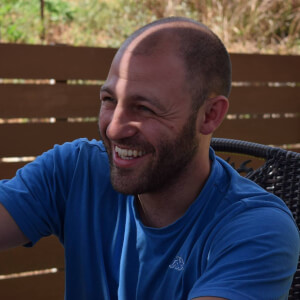
Charilaos Gounaropoulos
16. Plato and Hyperspaces: Investigating the Connection Between Plato’s Theory of Ideas and Higher Spatial Dimensions (Dimitrios Traperas, Charilaos Gounaropoulos and Nikolaos Kanellopoulos)
Charilaos Gounaropoulos graduated from the Department of Physics, University of Ioannina. He received his MSc in Humanistic Informatics from the Department of Informatics, Ionian University (2019). He is a Ph.D. student in the Department of Audio and Visual Arts, Ionian University.
Charilaos Gounaropoulos
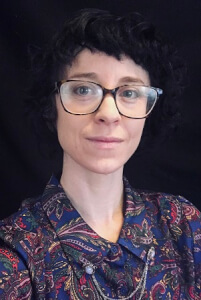
Charli Brissey
65. The Promise of Water: Choreographies of Time and Identity (Charli Brissey)
Charli Brissey is an interdisciplinary artist, scholar, and teacher who works choreographically with various technologies and materials. This primarily includes bodies, cameras, objects, language, instincts, and ecosystems. Their research integrates studies in choreography, feminist theory, technology, and science. Brissey has been creating performances, installations, experimental videos, and written scholarship for over seventeen years, and has been presented in various galleries, conferences, film festivals, and performance venues nationally and internationally. This includes the National Queer Arts Festival, Movement Research at Judson Church, The Eye Film Institute, Dance on Camera at Lincoln Center, Center for Performance Research, Vancouver Queer Film Festival, Zurich Moves! Dance Festival, Paris International Feminist Film Festival, The Arts in Society Conference, Seattle Lesbian and Gay Film Festival, Queer Publics Symposium, International Conference on the Image, and several others.
Charli Brissey
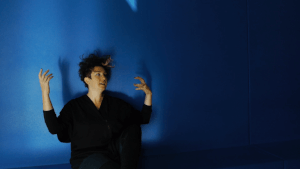
Charlotte Jarvis
182. Body Shopping – challenging convention in the donation and use of bodily materials through art practice (Tarsh Bates, Isabel Burr-Raty, WhiteFeather Hunter, Charlotte Jarvis, Hege Tapio, Adam Zaretsky and Miriam Simum)
Charlotte is an artist working at the intersection of art and science. Her practice often utilises living cells and DNA: she has grown her own tumour, recorded music onto DNA and seen her heart beat outside her body. Charlotte has had ten international solo shows and featured in over one hundred and fifty group exhibitions. Charlotte has been resident artist at a number of universities and scientific institutions, including the European Bioinformatics Institute and the Hubrecht Institute. Charlotte’s work has won the Bioart and Design Award in the Netherlands and the Alternate Realities Commission in the UK. She has been peer-review published in Leonardo Journal in the USA. Charlotte is currently a lecturer at The Royal College of Art and Goldsmiths University London.
Charlotte Jarvis
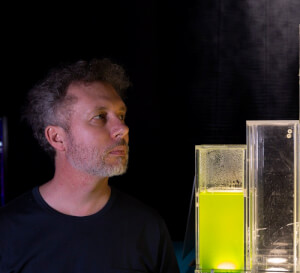
Christian de Lutz
174. Staying in touch: sci-fi experiments for post-coronavirus art curating (Marta de Menezes, Annick Bureaud, Regine Rapp, Christian de Lutz, Byron Rich, Paula Burleigh, Francesco Kiais, Jill McDermid-Hokanson and Christl Baur)
180. The Camille Diaries. Current Artistic Positions on M/otherhood, Life and Care (Regine Rapp and Christian de Lutz)
180. The Camille Diaries. Current Artistic Positions on M/otherhood, Life and Care (Regine Rapp and Christian de Lutz)
Christian de Lutz is a curator and visual artist, originally from New York. As co-founder and co-director of Art Laboratory Berlin he has curated over 40 exhibitions, including the series Time and Technology, Synaesthesia, [macro]biologies & [micro]biologies, and Nonhuman Subjectivities. His curatorial work focuses on the interface of art, science and technology in the 21st century, specialising on BioArt, DIY Science initiatives and facilitating collaborations between artists and scientists. Publications include [macro]biologies & [micro]biologies. Art and the Biological Sublime in the 21st Century, which reflects theoretically on Art Laboratory Berlin's 2013-15 program, and an introductory essay in Half Life. Machines/ Organisms, Artistic Positions in the context of Climate Change and Extinction (2018). He is also active in a number of collaborative organisations including transmediale/ re-Source, Synapse (Haus der Kulturen der Welt), The Berlin Network of Free Project Spaces and Initiatives, and 21cc. Network for hybrid and digital practices.
Christian de Lutz
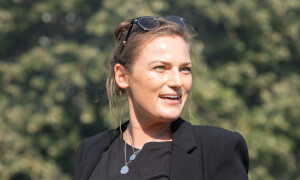
Christl Baur
174. Staying in touch: sci-fi experiments for post-coronavirus art curating (Marta de Menezes, Annick Bureaud, Regine Rapp, Christian de Lutz, Byron Rich, Paula Burleigh, Francesco Kiais, Jill McDermid-Hokanson and Christl Baur)
Christl Baur is the head of the Ars Electronica Festival, researcher with an interdisciplinary background in art history, cultural management, and natural science. She is particularly interested in the conjunction of aesthetic and social practices that center on collaboration and experimentation and challenge dominant social, political, and economic protocols. Her research field encompasses topics such as video art, new media technologies, computer, biotechnology and interactive art, and she works at the nexus of art & science.
Christl Baur
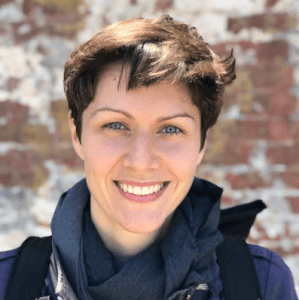
Claudia Schwarz-Plaschg
71. Psychedelic technologies and reconfigured subjectivities: Transgressing the taboo of self-transcendence (Claudia Schwarz-Plaschg)
Claudia Schwarz-Plaschg is a postdoctoral researcher at the Department of Science and Technology Studies at the University of Vienna. As part of her EU-funded Marie Skłodowska-Curie Fellowship, she currently explores how re-emerging research on and attempts towards medicalizing psychedelic substances relate to other models for how to responsibly reintegrate psychedelics into society. In this context she thinks about the evolving ecosystem of socio-psychedelic imaginaries, the role of psychedelics in times of (environ)mental crisis, and the subjectivities that psychedelic technologies help to unearth and co-create. Her more general research interests revolve around the sociopolitical and cultural dynamics of (re-)emerging scientific fields and technologies, with a particular emphasis on the role of retro-prospective imaginations, governance processes, and public engagement.
Claudia Schwarz-Plaschg
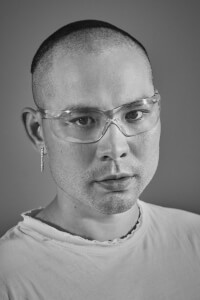
Claus Schöning Lam Yong
47. How to Isolate and Amplify Clostridium Botulinum (Claus Schöning Lam Yong)
Claus Schöning Lam Yong was born in Berlin. He obtained a BSc in biochemistry at the Frei-Universität Berlin. He is currently studying fine arts at the Academy of Fine Arts Dresden in the class of Susan Philipsz. He is running a music label in Berlin since 2019. „While we keep on falling into an endless abyss of bittersweet reflection, there is an animalistic inkling of how to change the world: not by thinking but by doing. All theory is inherently beautiful tragedy. Art has to be held accountable for thousands of years of beauty.“
Claus Schöning Lam Yong
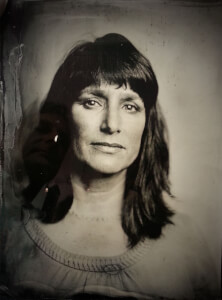
Clea T. Waite
84. Somatic Poetics (Clea T. Waite)
Clea T. Waite is an intermedia artist-filmmaker whose works investigate the material poetics at the intersection of art and science. She creates immersive, cinematic works engaging embodied perception, dynamic composition, and sensual interfaces – as well as one inter-species collaboration with several hundred tropical spiders. These works examine climate change, astronomy, particle physics, history, feminism, and popular culture. Waite has a Ph.D. from USC in Media Arts + Practice, combining a background in physics and computer graphics from the MIT Media Lab with practice and research in media art theory. Waite’s artworks have recently been exhibited at CODAME San Francisco, on the ICC Hong Kong, the Miraikan Museum, Tokyo, and the Boston CyberArts Festival. She has been a Humboldt Fellow, a Radcliffe Fellow, CERN artist-in-residence, and fellow at the Academy of Media Arts Cologne.
Clea T. Waite
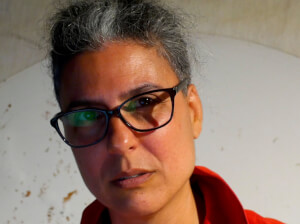
Dalila Honoratο
149. Like Real Friends Do: Communicating in Social Media with Sophia the Robot (Laida Limniati, Dalila Honoratο, Andreas Giannakoulopoulos)
The starter of the conference "Taboo-Transgression-Transcendence in Art & Science", Dalila Honorato, Ph.D, is Tenured Assistant Professor in Aesthetics and Visual Semiotics at the Ionian University, Greece. One of the founding members of the Interactive Arts Lab, where she coordinates the Art & Science Research Group, she is also the co-founder with Marta de Menezes of "FEMeeting: Women in Art, Science and Technology". She is a member of the Editorial Organism of the Technoetic Arts journal, founded by Roy Ascott, published by Intellect. Her research focus is on embodiment, monstrosity, the uncanny and the acrobatic balance between phobia and paraphilia.
Dalila Honoratο
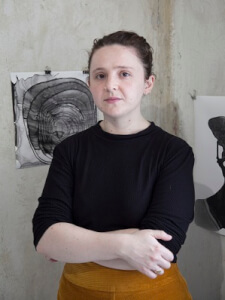
Daniela Brill Estrada
97. Of Atoms and Reincarnation - About the Creation of knowledge (Daniela Brill)
96. All You Have to Lose is Ecstasy: The Intuitive, Occult and Somatic as Methods of Inquiry (Monica C. Locascio, Pêdra Costa, Zosia Hołubowska, Florentina Holzinger, Daniela Brill Estrada and Elisabeth von Samsonow)
96. All You Have to Lose is Ecstasy: The Intuitive, Occult and Somatic as Methods of Inquiry (Monica C. Locascio, Pêdra Costa, Zosia Hołubowska, Florentina Holzinger, Daniela Brill Estrada and Elisabeth von Samsonow)
Daniela Brill Estrada was born in Bogotá, Colombia. She finished her Master’s degree in Art & Science at the University for Applied Arts Vienna, with her own hypothesis about a new fundamental force in nature written from an artistic and poetic perspective. Brill works in collaboration with artists, researchers and scientists around the world and institutions such as CERN and the ORIGIN network. Through her artistic work, Brill proposes a space where the frontiers between natural sciences, poetry and fine arts disappear. Daniela is also the creator of Cuántico and co-organizer of Suratómica, an international, self-organized network of individuals, collectives and organizations that propagates scientific and artistic thought. With a focus on Latin America and the Global South, the Suratómica network promotes new forms of dialogue between different areas of knowledge, opening spaces for creation and experimentation to strengthen reflection on science, society and alternative forms of organization.
Daniela Brill Estrada
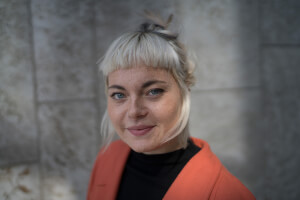
Daniela Koch
75. Kitkelaid - About a Non-Place (Daniela Koch)
Daniela Koch studied journalism and International Media Cultural Work at University of Applied Sciences in Darmstadt. In her previous online journalism studies, she was mainly engaged in creative writing about tabooed topics. In the last years, she changed her focus more and more to experimental forms of presentation such as sonic immersion, 3D audio sound and fulldome visuals. Her current works are based on socially neglected subjects, on the influence of body shame and the construction of body images and feelings. In her works, she uses recordings of soft-spoken words, interviews and organic material to uncover bypassed events occurring in her intimate environment, to answer the question how media art can decipher, represent and communicate shameful topics and thus make them part of a public discourse. Besides that, she focuses on the creation of spaces where people can experience different realities with the game of proximity, distance and expectation.
Daniela Koch
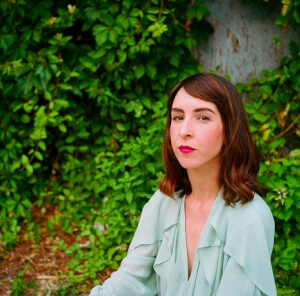
Danielle Damico
5. Spli/ilt (Danielle Damico)
Danielle Damico is a multimedia artist whose work explores transgression, technologically mediated intimacies and ecofeminism. She received her B.S. in Film, Video & Theatre from Stevenson University. Her works have screened at venues in and around Baltimore including 2640 Space, Mercury Theater and Red Room. Music videos she’s directed have premiered on PunkNews.org, Baltimore City Paper’s website and through numerous independent music blogs. Her immersive projection installation, 'What to Expect When You’re Expecting', was awarded the Hopkins Saul Zaentz Innovation Grant in 2019. Damico is currently pursuing her MFA in Intermedia & Digital Art at University of Maryland, Baltimore County (Spring 2021).
Danielle Damico
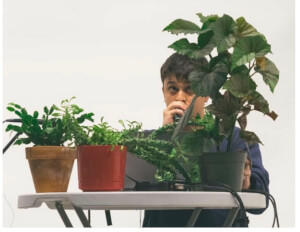
Dann Disciglio
12. Encountering the Non-Human: A Metaphysical Naturalism (Dann Disciglio)
Dann Disciglio (b. 1993) is a research-oriented artist whose work combines emerging technologies and non-human subjects so as to address the anthropocene. By way of installation, sculpture, sound, text, and performance, Disciglio creates local ecologies within the built environment, which are meant to engender alliances with the non-human world.
Dann Disciglio
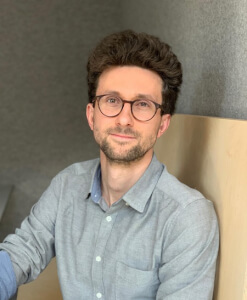
David Kovarik
144. Playing With the Curious Cat (David Kovarik, Carina Zabini)
David Kovarik is an architect and reasearcher coming from Prague, Czech Republic, currently based in Vienna, Austria. He studied architecture at Academy of Arts, Architecture and Design in Prague and holds a Ph.D. degree in architectural design. He gained his professional experience in Vienna working with various architectural offices including Franz&Sue, where he is still appointed as lead design architect. Between 2017 and 2020 he has completed his doctoral research project with the focus on material behaviour and digital design technologies. Since 2017 David has been a regularly invited speaker at symposia and his work has been exhibited and published at various international exhibitions and conferences such as ECAADE, Milano Design Week or Ars Electronica.
David Kovarik
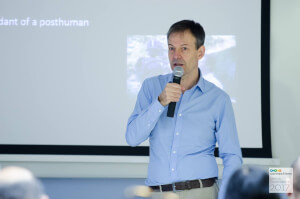
David Roden
25. Erotic Subtraction and Death (David Roden)
David Roden’s published work has addressed the relationship between deconstruction and analytic philosophy, philosophical naturalism, the metaphysics of sound and posthumanism. His book Posthuman Life: Philosophy at the Edge of the Human (New York, 2014) explores the ethical and epistemological ramifications of Speculative Posthumanism: the thesis that there could be agents originating in human social-technical systems that become posthuman as a result of some technological alteration of their powers. His current work considers posthumanist theories of agency and their implications for aesthetics and philosophical method. He teaches at the Open University, UK.
David Roden
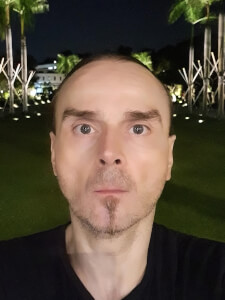
Dejan Grba
128. Rendering Life: Transgressive Affinities Between Bio Art and Generative Art (Dejan Grba, Vladimir Todorovic)
Dejan Grba is an artist, researcher and educator. He explores the creative, technical and relational aspects of generative systems. He has exhibited and lectured in Asia, Australia, North and South America and Europe, and his papers have been published in journals, conference proceedings and books worldwide. Dejan is a Visiting Associate Professor at the School of Art Design and Media, Nanyang Technological University in Singapore. He has served as a Founding Chair and Associate Professor at the New Media Department, Faculty of Fine Arts in Belgrade from 1998 to 2020, and as a Co-founding Associate Professor at the Digital Art PhD Program of the Interdisciplinary Graduate Center, University of the Arts in Belgrade from 2005 to 2020.
Dejan Grba
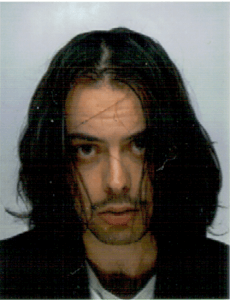
Demian Thirst
136. Genetic chimera/ Ghost in a cortex (Laura Irmer, Demian Thirst)
demian thirst has graduated in physics at the university of vienna and studies digital art at the university of applied arts and conceptual art at the academy of fine arts in vienna. his works deal with living and growing up between digital revolution and immininent climate catastrophe.
Demian Thirst
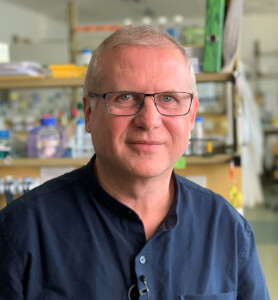
Diethard Mattanovich
87. Fermenting Futures (Diethard Mattanovich, Anna Dumitriu, Alex May, Özge Ata)
Diethard Mattanovich is Full Professor of Microbial Strain Design and Head of the Institute of Microbiology and Microbial Biotechnology (IMMB) at the University of Natural Resources and Life Sciences Vienna (BOKU). In 2010 he co-founded the Austrian Centre of Industrial Biotechnology (acib) where he directs the research area Microbial Parts and Systems. His research interests are biotechnology of microorganisms, with a focus on synthetic biology for the production of recombinant proteins and metabolites with yeasts, as well as fundamentals of yeast central metabolism. In this field he has published more than 160 papers, 10 book chapters, and 26 patents. In 2011, Diethard Mattanovich received the Dr. Wolfgang Houska Award of the B&C Private Foundation, the most prestigious award for applied research in Austria. He is Vice President of the European Federation of Biotechnology (EFB) and Chairman-elect of the International Yeast Commission (2021-2024).
Diethard Mattanovich
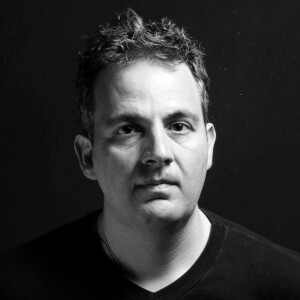
Dimitrios Traperas
16. Plato and Hyperspaces: Investigating the Connection Between Plato’s Theory of Ideas and Higher Spatial Dimensions (Dimitrios Traperas, Charilaos Gounaropoulos and Nikolaos Kanellopoulos)
Dimitrios Traperas graduated from the Department of Physics, University of Ioannina and from the Department of Audio and Visual Arts, Ionian University. He received his PhD in art and science from the Department of Audio and Visual Arts, Ionian University (2019). His main research interest focuses on the perception of hyperspaces.
Dimitrios Traperas
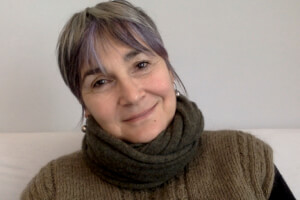
Dolores Steinman
108. “In a locked and scrambled form: Art-Science scenes, objects and figures in corporeal transgression” (Dolores Steinman, Michael Sappol, Kimberly Johnson, Silvia Casini, Günther Seyfried)
Dr. Dolores Steinman was trained as a Paediatrician and, upon relocating to Canada, obtained her PhD in Cell Biology. Currently she is a Senior Research Associate in the Biomedical Simulation Laboratory, the Department of Mechanical Engineering at the University of Toronto (UofT), part of an interdisciplinary team, also affiliated with the Ontario College of Art and Design University (OCADU). She is as well a volunteer Docent at the Art Gallery of Ontario (AGO). In her research, Dolores is driven by her keen interest in placing the ever increasingly technology-based medical research in the larger context of the humanities. She observes the rapport and the connection between medical research and its non-medical counterparts.
Dolores Steinman
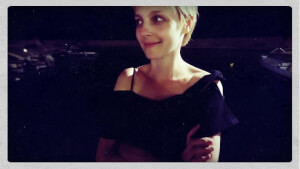
Dominika Czakon
76. The evolution of Olympia as the example of transfiguration from human to post-human. Philosophical analysis of selected artistic representations of Olympia (Dominika Czakon)
Doctor of Philosophy (Ph.D.), 2017. Employed as an assistant professor at the Institute of Philosophy, Jagiellonian University. Main researcher of the research project ‘The Roman Ingarden Digital Archive’. Deputy editor-in-chief of the philosophical-aesthetical quarterly 'The Polish Journal of Aesthetics'. Research activities deal with aesthetics, hermeneutics, and feminist philosophy. Recently has published a book on the hermeneutic interpretation of contemporary art, based on a proposition of H.-G. Gadamer. Divides free time between family and friends, reading classic and fantasy literature, photography, walks with her dog, and travelling whenever possible.
Dominika Czakon
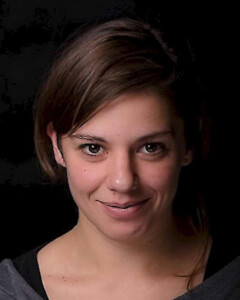
Eirini Sourgiadaki
95. Deconstructing the isolated artist-astronaut paradigm. (Ioannis Bardakos, Eirini Sourgiadaki, Alain Lioret)
Eirini Sourgiadaki is a transdisciplinary artist (literature, transdisciplinary storytelling, immersive performance & installation) and a research associate in the Zurich University of the Arts in the Department of Transdisciplinary Studies and the Department of Fine Arts. Born in Crete, Greece, she studied Sociology (BSc), Cultural Management (MSc), Greek and English/American Poetry in Athens while she has been trained as a dancer. In 2017 she graduated from MA Transdisciplinarity in the Arts in Zürich, awarded with the Hirschmann Stipendium, ZHdK Fonds Design & Kunst and the ZHdK Avina Fonds with her project ‘Metaphorai’. She is a PhD candidate in the collaboration Program Fine Arts & Transdisciplinarity between University for Arts and Design Linz and Zurich University of the Arts (project-based artistic research) with a special focus on Teleportation & Transformation through Storytelling and Technology. eirinisourgiadaki.tumblr.com eirini.sourgiadaki@zhdk.ch
Eirini Sourgiadaki
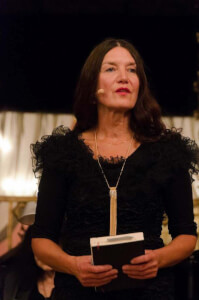
Elisabeth von Samsonow
96. All You Have to Lose is Ecstasy: The Intuitive, Occult and Somatic as Methods of Inquiry (Monica C. Locascio, Pêdra Costa, Zosia Hołubowska, Florentina Holzinger, Daniela Brill Estrada and Elisabeth von Samsonow)
Elisabeth von Samsonow Künstlerin, Professorin an der Akademie der bildenden Künste, Wien, Gastprofessorin Bauhaus Universität Weimar (2012) , Mitglied der GEDOK München, internationale Ausstellungs- und kuratorische Tätigkeit, lehrt und forscht zu den Schwerpunkten Philosophie und Geschichte in Beziehung zu einer Theorie des kollektiven Gedächtnisses, zum Verhältnis zwischen Kunst, Psychologie und Politik in Geschichte und Gegenwart, zur Theorie und Geschichte des Frauenbildes bzw. der weiblichen Identifikation (Mädchentheorie), der sakralen Androgynie und des modernen „Ich-Zerfalls“. Ihre künstlerische Arbeit umfasst Skulptur, Performance, Malerei und Video. Sie beschäftigt sich u.a. mit dem systematischen und symbolischen Ort der weiblichen Plastik/ Skulptur im Kanon der Künste und einer ökologischen Ästhetik oder Geo-Logik der Körper. Publikationen u.a.: Epidemic Subjects. Radical Ontologies, Zürich-Berlin-Chicago 2017 , Egon Schiele=Wiener Enzyklopädie, mit Ursula Storch, Wien 2016, Egon Schiele Sanctus Franciscus Hystericus, Wien 2012; Egon Schiele: Ich bin die Vielen, Wien 2010, Anti Elektra. Totemismus und Schizogamie, Zürich-Berlin 2007 (frz. L‘Anti Electre. Totémisme et Schizogamie, traduit par Béatrice Durand, Genève 2015, Anti Electra. Totemism and Schizogamy, transl. by Stephen Zepke and Anita Fricek, MU Press Minneapolis 2019) Ausstellungen (Auswahl): The Parents‘ Bedroom Show, Spazio Ridotto Venedig (mit Juergen Teller), kuratiert von Christian Bauer, SEX (Taxispalais Innsbruck) kuratiert von Nina Tabassomi, Schiele reloaded (Leopold Museum Wien 2018), kuratiert von Verena Gamper, History of Psyche (Galerie nächst St.Stephan Wien 2018), The Parents‘ Bedroom Show (mit Juergen Teller), MaximiliansForum München, Austrian Performance Season (Solyanka State Gallery Moskau 2017), kuratiert von Felicitas Thun-Hohenstein, Transplants (Dominikanerkirche Krems 2016), The Nervous System of the Earth (Galerie Jünger Wien 2014), Hippo Hypno Schizo Hoch Zeit (Freud Museum 2011), kuratuiert von Robert Punkenhofer, ELEKTRA (Belvedere Wien im Rahmen von GOLD), kuratiert von Thomas Zaunschirm, SAMSONOW TRANSPLANT PARASONIC ORCHESTRA (brut Theater im Künstlerhaus 2012, kuratiert von Thomas Frank), THE SECRETS OF MARY MAGDALENE (The Jerusalem Show 1.0, kuratiert von Jack Persekian, 2008) www.samsonow.net http://pages.akbild.ac.at/kunstanthropologie
Elisabeth von Samsonow
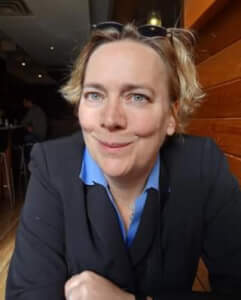
Elizabeth Littlejohn
127. The City Island (Elizabeth Littlejohn)
Elizabeth Littlejohn is a communications professor, human rights activist, photojournalist, and documentary film-maker, who teaches in Toronto. She has written for Rabble.ca for the past thirteen years on social movements, sustainable urban planning, and climate change. As a running gun social movement videographer, she has filmed internationally. Her articles, photojournalism, and videos have been published widely to document the Occupy and climate change movements, LGBTQIA* rights, and Idle No More, and printed in NOW Magazine, the Toronto Star, and Our Times. In 2018 she directed, filmed and produced ‘Leelah’s Highway’, a broadcast half hour focusing on the suicide of trans youth, Leelah Alcorn, and ‘Frolic’s Haunt’, a nine-minute film about a queer, accessible haunted house with its own unique scare system. Both of these documentaries were shown in international film festivals. ‘Leelah’s Highway’ won honourable mention for best short film in OutShine and the Cindependent Film Festival in 2018. Presently she is in post-production on ‘The City Island’, a feature-length documentary she directed about the razing of homes on the Toronto Islands and the islanders’ stewardship of the park system in the time of flooding and airport expansion. Parallel to this documentary, she is developing an AR/VR project recreating the medical treatment for children in the Victorian-era ‘Lakeside Home for Little Children’ sanatarium, also located on the Toronto Islands.
Elizabeth Littlejohn
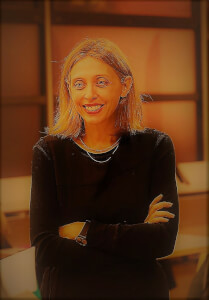
Elpida Karaba
94. Mutations in Feminist Aesthetic Practices. Three case studies form the Centre of New Media and Public Feminist Practices. (Elpida Karaba)
Elpida Karaba is an art theorist and independent curator. Her work and publishing record is focusing on the relationship between art and systems of knowledge, archival art and art in the public domain, history and theory of art, feminism and performative, research based and activist artistic practices. She is visiting lecturer at the School of Fine Arts, Athens. She is head of research at the Centre of New Media and Feminist Public Practices (www.centrefeministmedia.arch.uth.gr/) at the Department of Architecture, University of Thessaly. In 2014 she has initiated the Temporary Academy of Arts (PAT), a para-institution, a hybrid of artistic, curatorial and paedagogical practice.
Elpida Karaba
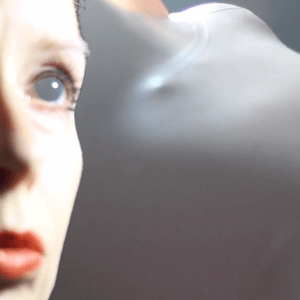
Emie // Eva-Marie Elg
48. The E-ME 2.0 introduces A Sexual Series (Emie // Eva-Marie Elg)
Emie // Eva-Marie Elg is a posthuman, asexual artist based in Sweden and the UK. Emie’s work explores sexual performativity in relation to power. The topic of sexual attraction and human interrelations are dealt with through disciplines of video, performance art, installation, glitch art and sculpture. Particularly Cyborg Drag performance, as alter ego E-ME 2.0. The E-ME 2.0, a futuristic AI sexbot, has showcased at Athens Museum of Queer Arts, New York’s Flux Factory, Tokyo’s Art Centre 3331 Arts Chiyoda, London's LimeWharf performance space and Queen Mary University for Cuntemporary’s Love Pain and Intimacy in Live Art symposium as well as Stockholm Fringe Festival and Reykjavík Fringe Festival. With a MA in Performing Arts and Media from Stockholm Academy of Dramatic Arts and currently obtaining a MFA at Umeå University, Emie continuously pursues various art disciplines to express contemporary attitudes towards performativity, technology, Nature, ourselves, each other and the Other.
Emie // Eva-Marie Elg
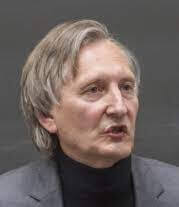
Erik Vogt
17. Toward a Critique of Psychotic Realism in Art (Erik Vogt)
Erik Vogt is Gwendolyn Miles Smith Professor of Philosophy at Trinity College (CT, USA), as well as Dozent of Philosophy at the University of Vienna (Vienna, Austria). He is the author and (co-)editor of 23 books, and author of 70 articles. His main areas of publication are German, French, Italian aesthetic theory and political thought. Recent book publications include Adorno and the Concept of Genocide (2016); Bruchlinien Europas (2016) Zwischen Sensologie und aesthetischem Dissens (2019); Jacques Rancière und die Literatur (2020). He currently works on a text about Peter Handke, as well as on a volume about the work of Slavoj Žižek.
Erik Vogt
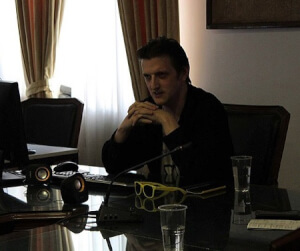
Erik Zepka
164. The Ethics of Epistemological Materialism (Erik Zepka)
Erik Hoff Zepka (erik rzepka, ek rzepka, xoxoxcom, xoxox, Xenia Common) is a conceptual media artist, curator, poet, scientist, educator and theorist who critically explores the practice and consequences of science and technology. His art engages with the cultural products of technoscience and rethinks them in terms of exhibition and display. The work has been showcased at HUMlab, ISEA (Scotland and Canada), Nabi Museum, The Tate Modern, Coaxial Arts (LA), Bronx ArtSpace, The Western Front, Pikselfest, SPAMM Cupcake (Paris/New York), The Whitney Museum, Videographe, and Interactive Futures. He's collaborated with groups including The Avatar Orchestra Metaverse, R3//1X//0RX in addition to artists such as Pauline Oliveiros and Stelarc. Website: http://xoxlabs.com/
Erik Zepka
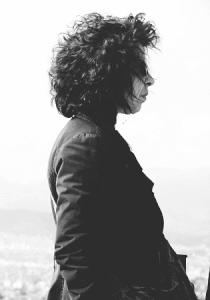
Evaguelia Diamantopoulou
35. Ancient Myth and Bio Art - Artistic and Genetic Transformations (Evaguelia Diamantopoulou)
Evaguelia Diamantopoulou is an assistant professor at the Department of Communication and Media Studies of the National and Kapodistrian University of Athens. She is a member of the Hellenic Section of the International Union Art Critics AICA GREECE and of the Association of Greek Artist Historians. Her BA and MA courses are related to issues such as History of Art, Visual Arts and Communication, Image Dialectics, Issues of European Art, Issues of Modern and Contemporary Greek Art, Artistic Portraits, Issues of Artistic Creation. Her academic interests focus on Art and Communication, Art and Society, Issues of Identity in Art, Symbolic and Experienced Space in Visual Arts, Art and Play, Art and Historical Memory. Her published academic work includes 4 books, as well as many research projects in Greek and International interdisciplinary journals concerning matters of Art and Culture.
Evaguelia Diamantopoulou
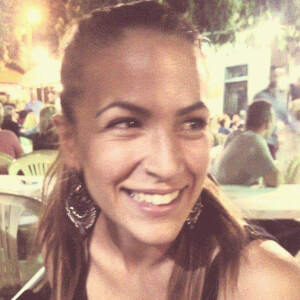
Evmorphia Leventi
34. Sacred circles: Mandalas and their many dimensions in art, education and therapy (Maria Athanasekou, Roxani Giannou, Evmorphia Leventi)
Evmorphia Leventi graduated from the Department of Philosophy and Social Studies of the Faculty of Philosophy of the University of Crete. She completed postgraduate studies in Special Education at the University of Cyprus Frederick. Having been trained in the use of psychometric tools and diagnostic tests, she has the knowledge to administer, intervene, evaluate and interpret examination results. She has completed a training program in Special Education from the University of the Aegean and the Pedagogical Institute. For the past nine years she has been working in the field of education, evaluation and intervention for children with learning disabilities and additional behavioral problems. She is currently training to become a Counselor Synthetic Model) at Synthetic Counseling, the course is certified by the European Federation of Integrative Counseling & Psychotherapy. Currently, her research interests include the study of the effects of Art and Nature on students with learning disabilities and how it affects the entire educational process.
Evmorphia Leventi
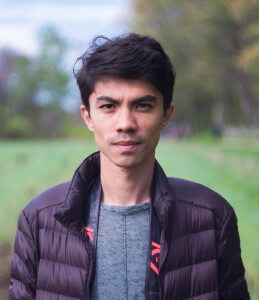
Felipe Shibuya
179. Ah, Squoosh it: Decolonizing the Colon (Felipe Shibuya, John Santomieri)
Felipe Shibuya was born in 1986, in São Paulo, Brazil. He studied Ecology and Nature Conservation at the Federal University of Paraná, Brazil, where he earned his Ph.D. Currently, he is an M.F.A. candidate in Studio Art at the University at Buffalo, working at the intersection between biology and art. In his scientific research, he always highlights the visuality of nature, such as the colors and shapes of bacteria. Felipe’s work has been exhibited in the United States, Canada, Portugal, Germany and South Korea, and has citations published in magazines such as National Geographic, Citylab and Ecology.
Felipe Shibuya
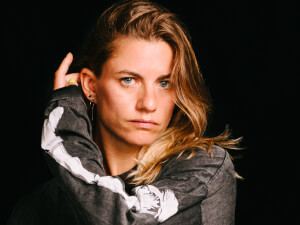
Florentina Holzinger
96. All You Have to Lose is Ecstasy: The Intuitive, Occult and Somatic as Methods of Inquiry (Monica C. Locascio, Pêdra Costa, Zosia Hołubowska, Florentina Holzinger, Daniela Brill Estrada and Elisabeth von Samsonow)
ENGLISH Florentina Holzinger studied choreography at the School for New Dance Development (SNDO) at the Amsterdamse Hogeschool voor de Kunsten. Her Diploma solo work Silk was awarded the Prix Jardin d’Europe at the lmPulsTanz Festival 2012. She collaborated with Vincent Riebeek for a trilogy of pieces, Kein Applaus für Scheiße, Spirit, and Wellness followed by Schoenheitsabend- Tänze des Grauens und der Extase (2011-2015). Her second solo work premiered in 2015 – Recovery is an experimental consideration on a traumatic stage accident she had suffered and critically explores various kinds of female representation as well as the potential of female corporality. In her latest works she continued dissecting the narratives of ballet: first with Apollon (2017)-a hack on Balanchines’s 1920s Apollon Musagete, followed by TANZ, an action ballet that reflects on tradition and narrative departing from the romantic ballet La Sylphide. Her latest work Etude for an Emergency, is a stuntopera developed with a cast of opera singers and stuntactresses- a musical composition for 10 bodies and a car. Florentina Holzinger’s dance pieces are driven by the notion of identity, sexual and physical transgression. Drawing inspiration as much from Viennese Actionism, body art and bodybuilding as from classical ballet, cabaret and even circus, she deconstructs, performance after performance, the very definition of femininity. Along her stage works Florentina is regularly teaching movement classes and offers trainings. Her work is intrinsically linked with the aim of exploring modes of embodiment and the development of practices to support a physical life in action. Her practice is heavily informed by martial arts, functional and somatic movement practices as well as everything dance.
Florentina Holzinger
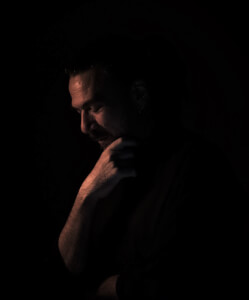
Francesco Kiais
174. Staying in touch: sci-fi experiments for post-coronavirus art curating (Marta de Menezes, Annick Bureaud, Regine Rapp, Christian de Lutz, Byron Rich, Paula Burleigh, Francesco Kiais, Jill McDermid-Hokanson and Christl Baur)
181. Golem (Francesco Kiais)
181. Golem (Francesco Kiais)
Francesco Kiàis was born in 1966 in Venice, where he studied painting at the Higher School of Fine Arts in Venice, writing his dissertation on Arte Povera. He then moved to Berlin, where he lived and worked as an artist until 2005, gradually moving from installation to video and performance art. In 2005 he moved to Athens. In 2011 he recognized his degree at ASKT. In 2019 he received his Master's degree in Audiovisual Arts in the Digital Age from the Ionian University. All these years he researches the artistic practice and teaching of performance art, developing his own method in workshops held in various international locations. He is a member of the curatorial board of the Venice International Performance Art Week, as well as the founder and director of the Athens-based platform mind the GAP - Gathering Around Performance, and a collaborator of InArts Lab, Ionian University. As a theorist and artist from time to time he has collaborated with educational programs, holding workshops and lectures in various higher education institutions in Athens, Corfu, Chicago Venice, Florina, Thessaloniki, Dresden, Edmonton, Paris, Oslo, Berlin.
Francesco Kiais
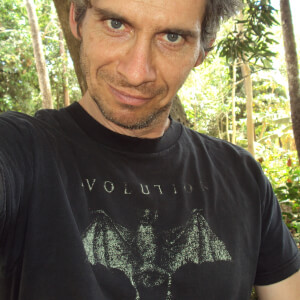
Francois-Joseph Lapointe
56. How to shake hands after a pandemic? (Francois-Joseph Lapointe)
François-Joseph Lapointe is an artscientist from Université de Montréal (Canada) with a PhD in evolutionary biology (1992) and a PhD in dance and performance studies (2012). As a scientist, he has published over 120 papers ranging from molecular systematics and population genetics to metagenomics. As an artist, he applies biotechnology as a means of creation, and has created the field of choreogenetics. His research has been funded by the National Science Foundation (USA), Genome Canada, the Natural Sciences and Engineering Research Council (NSERC), the Social Sciences and Humanities Research Council (SSHRC), the Fonds de recherche du Québec – nature et technologies (FRQNT) and Fonds de recherche du Québec – Société et Culture (FRQSC). His work as a bioartist and performance artist has been exhibited at Musée de la civilisation (Québec), Transmediale (Berlin), SciArt Center (New York), Ars Electronica (Linz), Medical Museion (Copenhagen), Science Gallery (London), and Centre Pompidou (Paris), among other places.
Francois-Joseph Lapointe
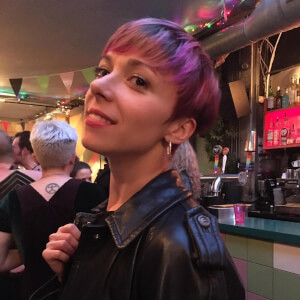
Giulia Casalini
93. Speculating transfeminist ecosystems (Giulia Casalini)
Giulia Casalini is an independent curator-artist based in London, currently PhD candidate at Roehampton University (Techne-funded, 2019-2023). Her study analyses artists and collectives from across the globe whose live art practices have been informed by queer-feminist politics, aesthetics and ethics beyond the Anglo-American canons. She is the co-founder and artistic director of the non-profit arts organization Arts Feminism Queer (CUNTemporary, 2012-2020). Her curatorial practice engages with challenging feminist perspectives to create multidisciplinary exhibitions and events across both institutional and alternative spaces. Selected curated projects include: EcoFutures (multi-venue festival, London, 2019); Still Burning (Varbergs Konsthalle, Varberg, 2019); Transitional States (touring at Project Space Plus, Lincoln; Peltz Gallery, London; Labs Gallery, Bologna; CCCB, Barcelona, 2017-2018); Transformer (Richard Saltoun Gallery, London, 2014). She is the lead organizer of the Techne student-led conference On Transversality (9-11 December 2020).
Giulia Casalini
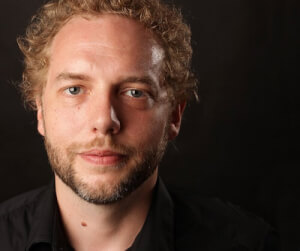
Günther Seyfried
108. “In a locked and scrambled form: Art-Science scenes, objects and figures in corporeal transgression” (Dolores Steinman, Michael Sappol, Kimberly Johnson, Silvia Casini, Günther Seyfried)
Günter Seyfried is an Austrian artist who lives and works in Vienna. He develops workshops and kits at the University of Natural Resources and Life Sciences, Vienna, Institute of Microbiology and Microbial Biotechnology and conducts a study on neuro-technology for Biofaction, Vienna. From 2017 to 2020 he conducted the seminar “Understanding Biomedia” at the Department of Media Theory, University of Applied Arts, Vienna. He studied medicine and psychology at the University of Vienna and Digital Art at the University of Applied Arts, Vienna, where he obtained his diploma in 2008. In his projects, teaching, lecturing, he combines art-based and scientific research, and in recent years he has completed a number of cross-disciplinary projects as a free-lance artist, projects in which art, biology and synthetic biology intersect. He is a founding member of the Institute for Polycinease (2004) and pavillon_35, The Society for Science-based Art (2012).
Günther Seyfried
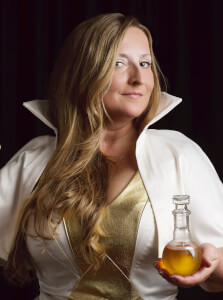
Hege Tapio
145. Healing Session (Hege Tapio, Hege Tapio)
182. Body Shopping – challenging convention in the donation and use of bodily materials through art practice (Tarsh Bates, Isabel Burr-Raty, WhiteFeather Hunter, Charlotte Jarvis, Hege Tapio, Adam Zaretsky and Miriam Simum)
182. Body Shopping – challenging convention in the donation and use of bodily materials through art practice (Tarsh Bates, Isabel Burr-Raty, WhiteFeather Hunter, Charlotte Jarvis, Hege Tapio, Adam Zaretsky and Miriam Simum)
Since 2001 her artistic practice has pursued the interest in emerging media interconnecting art, new technology and science. Tapio is the founder and director of i/o/lab – Center for Future Art where she has established and curated Article biennial – a festival for the electronic and unstable art, launched in 2006/2008/2010/2012/2015/2016 in Stavanger. Art encompassing and intersecting with technology and science has been the main objective for the development of projects for i/o/lab. She is currently involved as curator in the research project Caring futures: developing new care ethics for technology-mediated care practices (QUALITECH) at the University of Stavanger. She is also engaged as Guest Artist / Guest Curator and currently part of the team of NOBA – Norwegian Bioart Arena, developing and programming the Norwegian hub for Bioart located at Vitenparken at Ås, Norway. Tapio is also pursuing artistic research as Phd fellow at FeLT, Futures of Living Technologies at OsloMet.
Hege Tapio
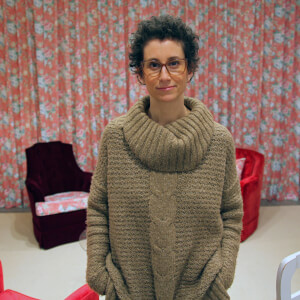
Heidi Barkun
81. LET'S GET YOU PREGNANT! : a critical examination of the failure of in vitro fertilization through a practice of installation (Heidi Barkun)
Heidi Barkun is a transdisciplinary artist who explores constructions of identity through a practice in site-oriented installation, using voice, text, objects and place as means of resistance against normative definitions. Her art is informed by the experience of living with chronic illness, which coupled with a Bachelor of Science in Anatomy & Cell Biology (McGill, 1995), contribute to her unique understanding of the body. The focus on infertility in her recent works follows four years of failed in vitro fertilization treatments. Barkun also holds a Master of Arts in Visual & Media Arts and Feminist Studies with mention of excellence (Université du Québec à Montréal, 2020) and a Bachelor of Fine Arts with distinction (Concordia University, 1999). She is the 2020 laureate of the Claudine and Stephen Bronfman Fellowship in Contemporary Art, and artist-in-residence at McConnell-Université de Montréal Chair on the Re-appropriation of Maternity (2020-2024). A member of the collective La CORPS féministe, she is co-editing a French adaptation of the classic book on women’s health, “Our Bodies, Ourselves”, for a Québec audience; the second volume, about the prenatal period, is due in 2021. www.heidibarkun.com
Heidi Barkun
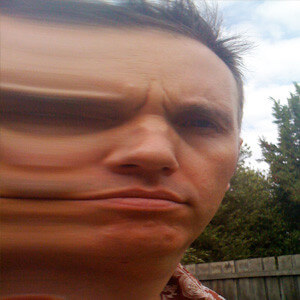
Ian Haig
6. Worm Pornography (Ian Haig)
Ian Haig works across media. His body obsessed themes can be seen throughout a large body of work over the last twenty years. His work has been exhibited in galleries and video/media festivals around the world. Including exhibitions at: The Australian Centre for Contemporary Art, Melbourne; The Ian Potter Museum of Art, Melbourne; The Experimental Art Foundation, Adelaide; The Australian Centre for the Moving Image, Melbourne; Gallery of Modern Art, Brisbane; The Museum of Modern Art, New York; Artec Biennale – Nagoya, Japan; Centre Georges Pompidou, Paris; Art Museum of China, Beijing; Museum Villa Rot, Burgrieden-Rot, Germany; The Havana Biennial, Cuba. In addition his video work has screened in over 150 Festivals internationally. In 2003 he received a fellowship from the New Media Arts Board of the Australia Council and in 2013 and 2017 he curated the video art shows Unco and Very Unco at The Torrance Art Museum in Los Angeles.
Ian Haig
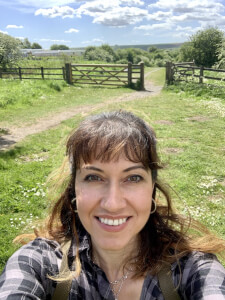
Ilke Turkmendag
182. Body Shopping – challenging convention in the donation and use of bodily materials through art practice (Tarsh Bates, Isabel Burr-Raty, WhiteFeather Hunter, Charlotte Jarvis, Hege Tapio, Adam Zaretsky and Miriam Simum)
Dr Ilke Turkmendag is a Senior Lecturer in Law, Innovation, and Society at Newcastle Law School. She is interested in social, legal and ethical aspects of biomedicine and human reproduction technologies. Owing to her background, she applies insights and perspectives from science and technology studies, sociology, law, and bioethics. To date, she explored the socio-legal aspects of donor conception and mitochondrial replacement techniques, ethical issues around the reproductive tissue donation for stem cell science, the discourse of reproductive responsibility in epigenetics, and more recently, the ethical and regulatory aspects of the human germline editing. Her current research focuses on the ways in which the claims associated with epigenetics and maternal responsibility may give rise to legal claims. At Newcastle University, Ilke is the Deputy Chair of Humanities and Social Sciences Ethics Committee. She is also the Council member of the North of England Medico-Legal Society.
Ilke Turkmendag
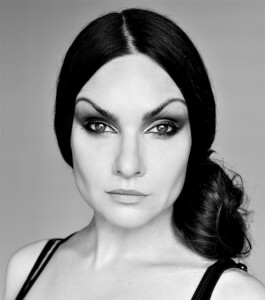
Iluá Hauck da Silva
62. Minotaurs of the Mind - Ontological Thresholds (Iluá Hauck da Silva)
Iluá Hauck da Silva is an independent visual artist. She was born in Campinas, Brazil, and has lived in London since 1997. She received her BA in Art History from Goldsmiths, University of London and her MA in Christianity & The Arts from King’s College London (in association with the National Gallery). Hauck da Silva has also studied glassmaking, both in the UK and in France. She has exhibited widely, including with the National Trust, the Royal Parks, the British Optical Association Museum, and The Royal Landscape in the UK, as well as across Europe, and in the US and Brazil. Her work is supported by the Arts Council England. The artist has been nominated for the Aesthetica Art Prize and the Winter Pride UK, and she also contributes to art publication Artlyst. Hauck da Silva’s work features in public and private collections worldwide. www.iluahauckdasilva.com
Iluá Hauck da Silva
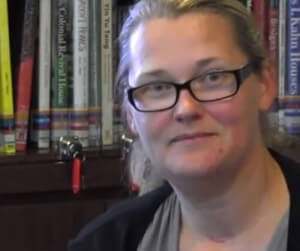
Ingeborg Reichle
148. implant—the plant inside of you (Reiner Maria Matysik, Ingeborg Reichle)
Being a cultural theorist writing on contemporary art, new technologies and new media, with a focus on biotechnology and artificial life, Ingeborg Reichle is full professor of Media Theory and chair of the Department of Media Theory. She studied art history, sociology, and archaeology at the University of Hamburg, and completed an MA (1998) and PhD (2004) in art history at Hamburg University and Humboldt University Berlin where she also gained her habilitation in 2013. She was FONTE professor at Humboldt University Berlin. In 2014 she was Visiting Research Fellow for two terms at the Instituto de Investigaciones Estéticas of the Universidad National Autonoma Mexico (UNAM) in Mexico City. From 2005 to 2011 she conducted research at the Berlin-Brandenburg Academy of Sciences and Humanities on image science and visual culture in the interdisciplinary working groups “The World as Image” (Die Welt als Bild) and “Image Cultures” (Bildkulturen).
Ingeborg Reichle
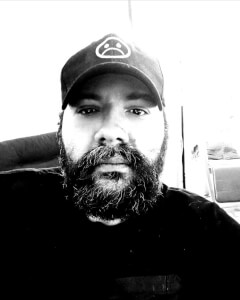
Ioannis Bardakos
95. Deconstructing the isolated artist-astronaut paradigm. (Ioannis Bardakos, Eirini Sourgiadaki, Alain Lioret)
96. All You Have to Lose is Ecstasy: The Intuitive, Occult and Somatic as Methods of Inquiry (Monica C. Locascio, Pêdra Costa, Zosia Hołubowska, Florentina Holzinger, Daniela Brill Estrada and Elisabeth von Samsonow)
96. All You Have to Lose is Ecstasy: The Intuitive, Occult and Somatic as Methods of Inquiry (Monica C. Locascio, Pêdra Costa, Zosia Hołubowska, Florentina Holzinger, Daniela Brill Estrada and Elisabeth von Samsonow)
John Bardakos is an artist and researcher born in Athens, Greece. He studied Mathematics, Digital, and Traditional Media in Applied & Fine Arts in Athens, Paris and Madrid. Mr Bardakos after a career as an artist, director and producer in hybrid media film and animation got involved with academic practice and research in Fine Arts using a multiplicity of Traditional, Analog, Digital, Algorithmic, Virtual, and Interactive methodologies. John Bardakos lectured in-between theory and practice in Athens and Paris and joined the Roy Ascott Technoetic Arts Studio in 2017 as the Course Coordinator a Senior Lecturer at the DeTao Masters Academy and the Shanghai Institute of visual arts continuing his research between fine arts, technologies mathematics cybernetics and diagrams. He is currently continuing his art and research activities at the Athens School of Fine Arts and University Paris 8 focusing on interaction, spatial/digital poetics, aesthetics, and mathematical structures following a technoetic paradigm.
Ioannis Bardakos
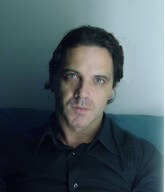
Ioannis Melanitis
28. Hiding Art, Hiding Codes and the Comic Strategies of Total Disappearing (Ioannis Melanitis)
Y. Melanitis’s work initiates from a conceptualization on the strategies of contemporary art. Recent research focuses on the role of information on the arts considering “INFORMATION AS THE NEW CONCEPTUALIZATION. (Latest example is his gene micro-injected into the butterfly named Leda Melanitis for the creation of a transgenic, adult butterfly breed). Yiannis Melanitis holds degrees in painting, sculpture and digital arts from the Athens School of Fine Arts and is presently a PhD candidate at the School of Architecture, (NTUA) with a thesis entitled: Biological Dynamics in Art. Exhibited in Austria, Mexico, Brasil, Belgium, UK, Portugal, Switzerland, US, Scotland, Italy, Portugal, Sweden, Germany, Greece. Latest work presentations include Ars Electronica 2020, MACRO Museum (Rome); at the National Museum of Brasil; Biblioteque of Brasil; Museu D. Diogo de Sousa, Braga, Portugal; the Tongeren Museum and Praetorium, Belgium. As a subject of criticism, his work is included in international editions as "Art Tomorrow" (Ed.L.Smith), Leonardo MIT, Lomonosov Moscow University, by Seung-Chol Shin, Assimi Kaniari, Mario Savini among others.
Ioannis Melanitis

Irini Athanassakis
4. KORE, revisited (Irini Athanassakis)
Born in 1968, Irini Athanassakis lives and works as artist and author in the Paris Region, France and on Kea Island, Greece. Trained in Sculpture, Transmedia Arts (Magistra of the Arts) Transfer of Science, Art history and Philosphy (Doctor of Philosophy, University of Applied Arts, Vienna: Die Aktie als Bild, Edited by Springer, Vienna/New York) and economics, she has been working with and about milk and questions of in/fertility and questions of women’s bodies for over ten years. She uses and consideres milk as material and matter that matters and also reflects on milk as system of inclusive economics. She edited the book MILK. Gabe, Lust und Verlust with Passagen Editors, Vienna. The book won the Austrian Award fort he the most beautiful Art book in 2018. Currently she is questioning the concept of KORE, as female figure and her contemporary and future forms. www.iriniathanassakis.eu
Irini Athanassakis
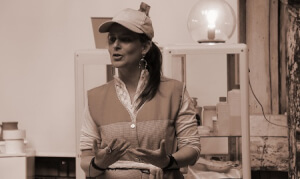
Isabel Burr Raty
182. Body Shopping – challenging convention in the donation and use of bodily materials through art practice (Tarsh Bates, Isabel Burr-Raty, WhiteFeather Hunter, Charlotte Jarvis, Hege Tapio, Adam Zaretsky and Miriam Simum)
170. BK an Eco Erogenous Art Project - the experimental catalogue (Isabel Burr Raty)
170. BK an Eco Erogenous Art Project - the experimental catalogue (Isabel Burr Raty)
Isabel Burr Raty is an artist and filmmaker interested in exploring the interstices between the organic and the artificial, between the unlicensed knowledge of minority groups and the dominant narratives. She teaches Media Art History in ERG and is researcher in nadine Brussels. In 2018-2019 she was granted a bio-art & design deal by Amsterdams Fonds voor de Kunst, which partnered her to The Waag and Mediamatic; and in 2019-2020 she is an invited jury member in Autonomous Design at Kask Guent. Her artworks intertwine performance and new media installation, inviting audiences to queer fixed categories of production understandings and experience SF in real time, such as the Beauty Kit Female Farm. Her works and collaborations have been shown internationally, ie: Palais de Tokyo Paris, Royal Flemish Theater, ISEA Hong Kong, Eco-Futures London. Isabel is also developing her second film, exposing the impact of colonialism on Easter Island.
Isabel Burr Raty
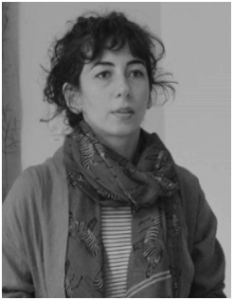
Istem Özen
132. Is There Art on Mars?: Planetary Analog Missions as Artistic Research Laboratories (Istem Özen)
Istem Özen is a materials scientist, artist, and space enthusiast. She inquires the extent of concepts and methods in natural sciences diffusing into humanities and arts (and vice versa), aiming for a continuum encompassing all. She is currently studying at the Art & Science M. A. program at the University of Applied Arts Vienna, is a researcher at the Vienna University of Technology - Institute of Materials Chemistry, and a scientific support team member for the Austrian Space Forum for Mars Analog Missions. She has participated in exhibitions including Data Loam (2019, Angewandte Innovation Lab, Vienna), Boxels group installation by students and alumni of Art & Science, University of Applies Arts Vienna in "Biennale Sessions" at La Biennale di Venezia (2019), and Origin Poetics (2019, Aula of Sciences, Vienna).
Istem Özen
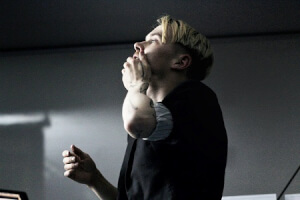
Jacco Borggreve
159. Ever it takes; interspecies embryonic care through semi-permeability. (Jacco Borggreve)
Jacco Borggreve is a new media performance artist whose work focuses on technological mediation of the body, psychological self-engineering, making monsters and constructing contestable scenarios and futures. Borggreve adopts a radical self-exploitation in an effort to probe the improbable. In 2017 Borggreve implanted a device that broadcasted his GPS location on a website, living an open-source lifestyle for a period of eight months. In his most recent project, Borggreve hatched seven healthy dragon eggs using his body heat in an effort to resurrect a beloved pet, establish kinship and research interspecies parenthood. Borggreve holds a bachelor in Fine Art from AKI ArtEZ and is currently pursuing a Master’s Degree in Art Science at the Royal Academy of Art in The Hague, Netherlands. His work has been shown in several countries in Europe, Central America and Asia.
Jacco Borggreve
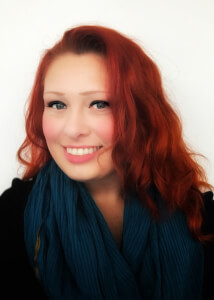
Jaden J. A. Hastings
141. Radical Vulnerabilities (Margherita Pevere, Theresa Schubert, Marco Donnarumma, Patricia MacCormack, Jurij Krpan)
Jaden J. A. Hastings’ work focuses upon the intersection and interplay of art and science - from philosophy to praxis - merging scientific and artistic research, challenging the norms of both disciplines, and moving them into new spaces for exploration. Her research fuses and folds together the fields of machine learning, bioengineering, space exploration, new media art, law and ethics. Jaden’s career in scientific research spans over 15 years and grounded in her longstanding roots as a biohacker. She is alumna of New York University, Harvard University, the University of Oxford, and Central Saint Martins with advanced degrees in Biology, Bioinformatics, and Fine Art. Her artwork has been exhibited in venues across Europe, India, Asia, North America, and Australia.
Jaden J. A. Hastings
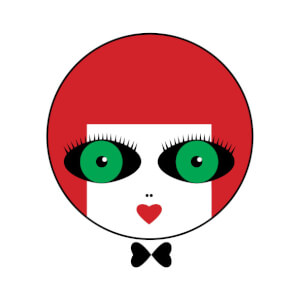
Jasna Jernejsek
135. From Ophelia to Harmony: fetishizing the female stillness/stiffness (Jasna Jernejsek)
Jasna Jernejšek works as a freelance curator, project manager, researcher and publicist in the field of contemporary visual arts. She focuses on the theory and history of photography within the field of contemporary photography, new media and related practice. She finished BA in cultural studies at the Faculty of Social Sciences in Ljubljana (2007), where she also completed her M.Sc. in Communication Studies (2013) and where she currently continues with her doctoral studies. She is a programme director of the photography department at the Higher School of Applied Sciences (VIST) in Ljubljana. She is a co-founder and a director of Sektor Institute, a non-profit organization for networking, research and promotion of media arts. In addition to the managing the institute, she cooperates with various exhibition venues in Slovenia and abroad, as well as NGO organizations. She lives and works in Ljubljana, Slovenia.
Jasna Jernejsek

Jatun Risba
67. MPASTURAVACCHE. The taboo of meeting the chimera of oneself (Jatun Risba)
Jatun Risba ('ki') is an artist of self, linguist of kinship and joker exploring beyond human paradigms. By approaching Art, Science, Technology in terms of ritual mysticism, ki recovers ecopoetry and magic in contemporary societies. Since 2014, Risba has been developing the practice of 'Interesse/Dance of Life' which consists of liminal somatic & vocal expressions in a state of trance. These 'arts of self', enacted among and with others, create opportunities to reveal, share and immunize oneself while acknowledging the divine comedy of life. Through developing a vernacular form of English named 'Language of Kinship', whose grammar is based on the use of alternative pronouns ‘ki’ (sing.) and ‘kin’ (poss., plur.), Risba is extending the notion of selfhood to all spectrums and forms of life. Risba holds a BA Hons from NABA, Milan and a PGC in Art and Science from CSM, University of Arts London.
Jatun Risba
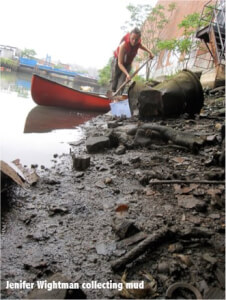
Jenifer Wightman
30. Mud Workshop (Nicole Clouston, Amy Youngs, Jenifer Wightman and Jennifer Zackin)
Trained as a Toxicologist, Jenifer Wightman is a research scientist specializing in greenhouse gas inventories and life cycle analysis of agriculture, forestry, waste, and bioenergy systems at Cornell University, funded by DoE, USDA, NYS DA&M, and NYSERDA. Her art practice began in 2002 and employs scientific tropes to incite curiosity of biological phenomena and inform an ecological rationality. Her art has been commissioned by NYC parks, featured at the Lincoln Center, BAM, and Imagine Science Festival, and is held in collections such as the Morgan Library, Library of Congress, Gutenberg Museum, Bodmer Museum, and the Danish Royal Library. Since 2014, she has combined her science and art to teach “Sustainable Systems” and “BioDesign” at Parsons – the New School for Design.
Jenifer Wightman
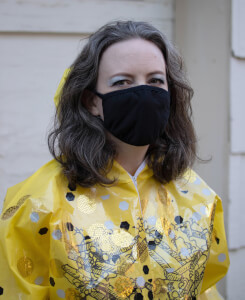
Jennifer Willet
178. Bioscientific Imaginaries (Kathy High, Marta de Menezes, Jennifer Willet, Byron Rich and Paula Burleigh)
Dr. Jennifer Willet is a Canada Research Chair in Art, Science, and Ecology and an Associate Professor in the School of Creative Arts at the University of Windsor (Canada.) Willet is Director of INCUBATOR Lab an art/science research laboratory and studio in downtown Windsor. She is an internationally successful artist and curator in the emerging field of bioart. Her work resides at the intersection of art and science, and explores notions of representation, the body, ecologies, and interspecies interrelations in the biotechnological field. www.incubatorartlab.com
Jennifer Willet
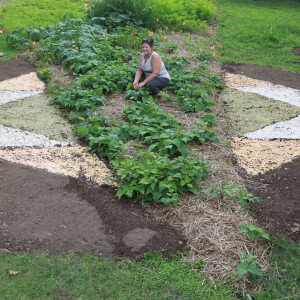
Jennifer Zackin
30. Mud Workshop (Nicole Clouston, Amy Youngs, Jenifer Wightman and Jennifer Zackin)
For the last 20 years Jennifer Zackin has been integrating public art, sculpture, installation, performance, collaboration, ceremony, photography, video, collage and drawing into acts of reverence and reciprocity. Whether wrapping trees in patterns of brightly colored rope, growing medicinal herbs in a public garden for public use, offering large masses of rose petals to oceans and lakes, creating absorbent tentacles out of salvaged materials to aid in the clean-up efforts of toxic spills, Zackin seeks to engage and create community in her process, bringing art and ritual into everyday life. Every act is an exploration of exchange, communion, performance, skill-sharing and mark-making. Her work has been exhibited internationally, at the Whitney Museum, Aldrich Museum, Spertus Museum, Rose Museum, Wexner Center, The Henie Onstad Kunstsenter, and the Zacheta National Art Gallery. She is the recipient of fellowships and residencies, including Factory Direct, Art Omi, The Atlantic Center and the Skowhegan School.
Jennifer Zackin
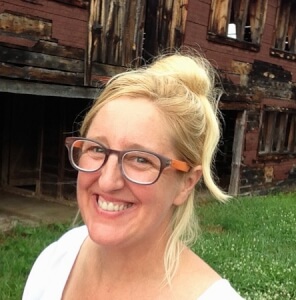
Jill McDermid-Hokanson
174. Staying in touch: sci-fi experiments for post-coronavirus art curating (Marta de Menezes, Annick Bureaud, Regine Rapp, Christian de Lutz, Byron Rich, Paula Burleigh, Francesco Kiais, Jill McDermid-Hokanson and Christl Baur)
Jill McDermid-Hokanson has an M.A and M.F.A. in Intermedia and Performance Art from the University of Iowa. She is the Founder-Director of the Grace Exhibition Space for International Performance Art in New York City, offering live performance art exhibitions for the public to experience visceral and challenging new works by domestic and international performance artists. As a Curator, she has presented Performance Artists at International Festivals including Venice Performance Art Week and the Open Art 10th Festival, Beijing. She was the Performance Art Curator for the Fountain Art Fair in Miami and New York City (2011-2014) and the LUMEN Art Festival (2011-2013) Staten Island, NY. As a Performance Artist, she has performed in New York and at international festivals in Italy, China, South Korea, Indonesia, Chile, France, Estonia, Lithuania, Latvia and Mexico.
Jill McDermid-Hokanson
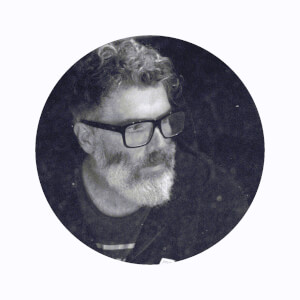
Joe Cantrell
112. The Data Corpus: the Body as a Physical Informational Nexus (Joe Cantrell)
Joe Cantrell is a musician and multi-media artist specializing in sound art, installations, and performances inspired by the consequences of technological objects and practices. His work examines the incessant acceleration of technology and media production, its ownership, and the waste it produces. Joe has presented his work for audiences around the world, including the Society for Electroacoustic Music in the US, the International Computer Music Association, the New Instruments for Musical Expression conference, as well as residencies in New York, London, Beijing, and Rotterdam. His work has been honored with grants from the Creative Capital Foundation, New Music USA, and the Qualcomm Institute Initiative for Digital Exploration of Arts and Sciences, among others. Joe holds a BFA in music technology from the California Institute of the Arts, an MFA in digital arts and new media from UC Santa Cruz, and a PhD in integrative studies from UC San Diego.
Joe Cantrell
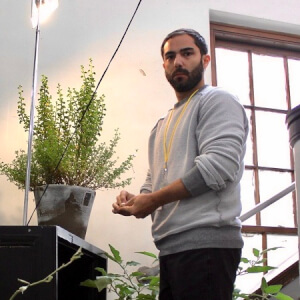
John Santomieri
179. Ah, Squoosh it: Decolonizing the Colon (Felipe Shibuya, John Santomieri)
Inspired by the plant experiences which have cultivated my personal narrative, and my history of work in professional horticulture, my research-based art practice digs beneath human/plant interrelationships into cultural constructs of nature, identity, and landscape which define us.
John Santomieri
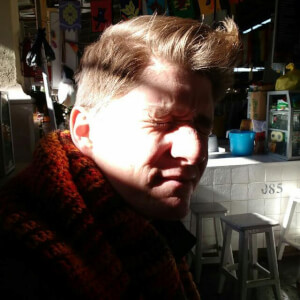
Jose Hopkins
36. The possibilities of Post-Human Necro-politics: It is 2020 and I am breathing dead bodies. (Jose Hopkins)
Jose Hopkins is a practice-based and critical writing researcher currently participating in the Media Arts and Performance (RMA) at Utrecht University. He studied Fine Arts in his hometown Lima, Peru, and Arts and Society (MA) at Utrecht University, which led him to explore post-human theories in participatory and community building projects. Much of his research is focused of processes of incorporative and expansive embodiment and the technological and trans-individual assemblages individual and collective embodiment are part of, with a special interest in the complex ecologies of human and non-human. Current research subjects include empirical possibilities of digital and movement-based archives, non-human participatory practices, and virtual reality’s possibilities of embodied and sensual transformation. Hopkins has experience in community-based participation, curatorial practices and the effects aesthetic and conceptual practices have on the configuration of public space and place-making.
Jose Hopkins
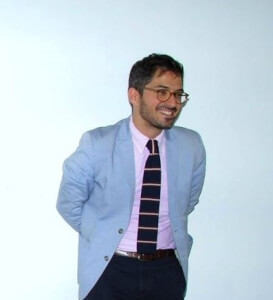
Joshua Simon
153. The Dividual – The Soviet contribution to an emerging subjectivity (Joshua Simon)
Joshua Simon is a curator and author based in Philadelphia. Former director and chief curator at MoBY-Museums of Bat Yam, Tel Aviv (2012- 2017), Simon teaches contemporary art history and theory at the Pennsylvania Academy of Fine Arts, the oldest art school in the US, and is a visiting critic at the Master in Fine Arts program at the University of Pennsylvania. Co-founding editor of the Tel Aviv-Jaffa based Maayan publishing. Author of Neomaterialism (Sternberg Press, 2013), and editor of United States of Palestine-Israel (Sternberg Press, 2011), Ruti Sela: For The Record (Archive Books, 2015), Communists Anonymous (co-editor, Sternberg Press, 2017), and Being Together Precedes Being: A Textbook for The Kids Want Communism (Archive Books, 2019). Recent curatorial projects include: The Kids Want Communism (conceived and initiated exhibitions and events in Prague, Melbourne, Kiev, Bat Yam, Athens, Warsaw, Ljubljana and Berlin, around the 99th anniversary of the Soviet Revolution with a two-year program dedicated to the project curated at MoBY and a final exhibition curated at Kunstraum Kreuzberg Bethanien, Berlin, 2016-2017), Second Nature (International Photography Festival, Tel Aviv 2017), and In The Liquid (PrintScreen Media Art Festival, Holon 2018). Simon holds a PhD from the Curatorial/Knowledge program, Visual Cultures department, Goldsmiths College, University of London, UK.
Joshua Simon
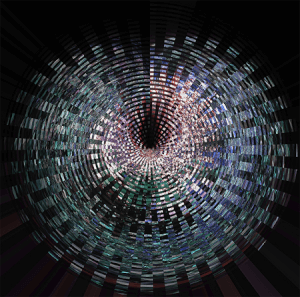
Julia Jarrett
120. De-Mystifying GMOs (Sophie Publig, Julia Jarrett)
Julia Jarrett, MA (juliapkjarrett@gmail.com) Julia Jarrett completed her BA in art history at Columbia University in 2015 and her MA in art history at the University of Vienna in 2020. Her MA thesis focuses on the role of the Galerie (nächst) Sankt Stephan in the postwar Viennese art scene. Her research interests include demystifying the Austrian postwar victim myth, postwar gender politics, twentieth-century cultural history, and Cold War artistic production.
Julia Jarrett
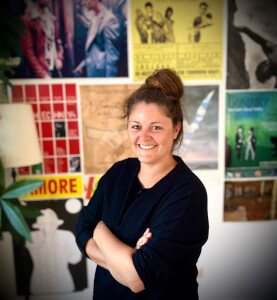
Julia Sprenger
49. Tabooing Womanhood? Performative Strategies of Subversion (Julia Sprenger)
Julia Sprenger is a researcher in the field of performance theory and practice at the interface of gender studies. During her studies of theatre, film and media at the University of Vienna, she focused on body art examining connections between the participation of the audience, game theories, psychological mechanisms of power and the collective evil. Since 2016 she is PhD candidate at the University of Vienna, researching for her dissertation project "Schauplatz Körper. Geschlechterinszenierung in der Body Art - Zwischen Stereotypen und Subversion". She is interested in: feminist theory, theories of the body, art history, performativity, intermediality, activism and politics. Julia Sprenger is based in the Department of Philosophy at the University of Applied Arts Vienna.
Julia Sprenger
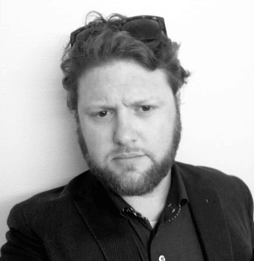
Julian Stadon
165. TeleAgriCulture: Augmenting Ecological Aesthetics (Julian Stadon)
Julian Stadon is an Austrian based Australian artist/curator/academic, working in the fields of Augmentation Aesthetics, Embodied Bio-Digital Ecosystems, Food Supply and Post-Anthropcenic Design. Studying bachelor degrees in Marine Biology, Fine Arts and a Master of Electronic Art, Stadon’s current PhD research focuses on how art can better our understandings of Post-Bio-Digital Convergence, Identity and Representation. Stadon is the director of marart.org and TeleAgriCulture, has lectured in over twenty countries, teaching across technology, art, design, fashion and games, currently teaching on the Interface Cultures Programme at the Kunstuniversität Linz. He also publishes, exhibits and performs regularly and is a live-in resident at 3erHof: a project in the field of tension between agriculture, art and living, in Bergham, Austria.
Julian Stadon
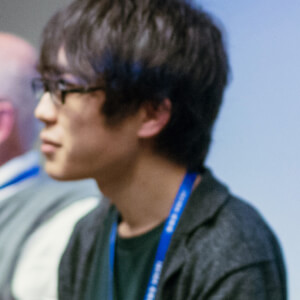
Juppo Yokokawa
103. Living Image: squid chromatophore as an alternative pixel (Juppo Yokokawa, Nobuhiro Masuda, Kazuhiro Jo)
Research assistant, Art Media Center, Tokyo University of the Arts juppotamus.com
Juppo Yokokawa
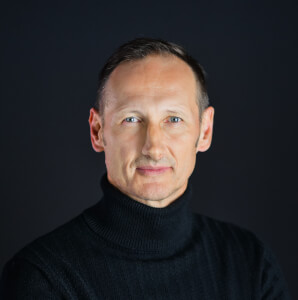
Jurij Krpan
141. Radical Vulnerabilities (Margherita Pevere, Theresa Schubert, Marco Donnarumma, Patricia MacCormack, Jurij Krpan)
in the year 1995, at the initiative of the Student Organisation of the University of Ljubljana, he conceived the Kapelica Gallery – Gallery for Contemporary Investigative Arts, where he worked as senior curator. As a curator and commissioner he has contributed to domestic and international exhibitions and festivals, the biggest international productions to date being the organization and artistic management of the Slovenian pavilion at the 50th Venice Biennale in 2003, the conceptual gallery Cosinus BRX at the European Commission building in Brussels and the 5.th triennial of Contemporary Investigative Arts 2006 at Museum of Modern Art – Ljubljana. In September 2008 he curated the presentation of the Kapelica Gallery in the Featured Art Scene section of Ars Electronica in Linz and in 2009 the survey of contemporary investigative art in relation to 80 years of avant-garde art in Slovenia. In 2014 he co-curated the Designing Life section for the Biennial of Design in Ljubljana and co-curated the Slovenian pavilion at Venice Biennial for Architecture. He was a juror at Prix Ars Electronica for the Hybrid Arts category in the year 2010, ’13, ’15, ‘16, and 2017. Since 2012 he is the art director at Kesnikova Institute where investigative and production laboratories BioTehna, Rampa, and Vivarium are the main support platforms for Kapelica Gallery. Beginning in the year 2017 he is working on the systemic solutions for innovation design bringing artistic ideation into the process of innovation for smart industry and communities for more sustainable, safe, inclusive and ethical future. Jurij Krpan lectures about the artistic profile of the Kapelica Gallery in Slovenia as well as abroad.
Jurij Krpan
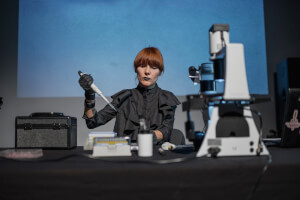
Karolina Żyniewicz
15. Junk art – the art which needs to be understood (Karolina Żyniewicz)
174. Staying in touch: sci-fi experiments for post-coronavirus art curating (Marta de Menezes, Annick Bureaud, Regine Rapp, Christian de Lutz, Byron Rich, Paula Burleigh, Francesco Kiais, Jill McDermid-Hokanson and Christl Baur)
174. Staying in touch: sci-fi experiments for post-coronavirus art curating (Marta de Menezes, Annick Bureaud, Regine Rapp, Christian de Lutz, Byron Rich, Paula Burleigh, Francesco Kiais, Jill McDermid-Hokanson and Christl Baur)
Karolina Żyniewicz — artist (2009 graduated from the Academy of Fine Arts in Łódź, Department of Visual Arts) and researcher, PhD student (Nature-Culture Transdisciplinary PhD Program at Artes Liberales Faculty, University of Warsaw). Working in a laboratory (mostly at the Institute of Genetics and Biotechnology, Faculty of Biology, University of Warsaw) locates her works in the field of bio art, although she tries to avoid using this term. She sees her liminal activity as situated knowledge production. She is mostly focused on life in its broad understanding (its biological and cultural meaning). Her projects have mostly conceptual, critical character. The main point of her PhD research interest are multilevel relations emerging during realization of liminal projects. She tries to put her observations, as an artist/researcher (liminal being), in the context of Science and Technology Studies (STS) Actor-Network Theory by Bruno Latour and feminist humanities. Contact: karolinazyniewicz.com
Karolina Żyniewicz
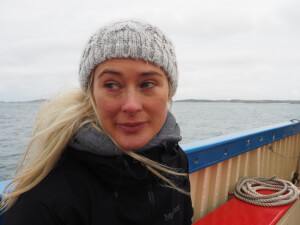
Kat Austen
50. The transgression of boundaries through transdisciplinary research relevant to the climate crisis (Kat Austen)
Kat Austen is a person. In her artistic practice, she focusses on environmental issues. She melds disciplines and media, creating sculptural and new media installations, performances and participatory work. Austen’s practice is underpin- ned by extensive research and theory, and driven by a motivation to explore how to move towards a more socially and environmentally just future. Working from her studio in Berlin, Austen is currently Artist in Residence at WRO Art Center through the EMAP/EMARE programme, Artistic Fellow at IASS Potsdam, Associate at ZeM, Brandenberg, Artist in Residence at the Faculty of Maths and Physical Sciences, University College London and Senior Teaching Fellow at UCL Arts and Sciences. She is a Fellow of the Royal Society of Arts, a member of the bbk, and an inaugural member of the London Creative Network.
Kat Austen
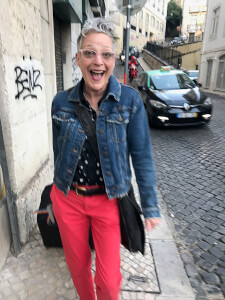
Kathy High
178. Bioscientific Imaginaries (Kathy High, Marta de Menezes, Jennifer Willet, Byron Rich and Paula Burleigh)
Kathy High (USA) is an interdisciplinary artist / educator who collaborates with scientists, and considers living systems, animal sentience, and the ethical dilemmas of biotechnology and medical industries. She produces photographs, films, sculpture and installations posing queer and feminist questions into areas of bio-science that have been exhibited across the Americas, Europe, Asia, and Australia. High is Head and Professor of Video and New Media in the Department of the Arts at Rensselaer Polytechnic Institute in Troy, NY. She has a laboratory at RPI’s Center for Biotechnology and Interdisciplinary Studies and also is a supporter of community DIY science and ecological art practices. High is the project coordinator for a non-profit urban environmental center and community bio lab, NATURE Lab at The Sanctuary for Independent Media. Among many honors, she is the recipient of fellowships and awards from the National Endowment for the Arts, and Guggenheim Foundation.
Kathy High
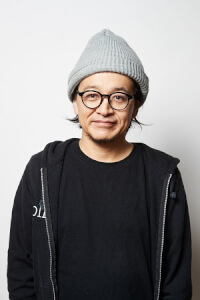
Kazuhiro Jo
103. Living Image: squid chromatophore as an alternative pixel (Juppo Yokokawa, Nobuhiro Masuda, Kazuhiro Jo)
117. An anechoic chamber as a point of contact between the two cultures (Kazuhiro Jo, Roy Tamaki, Takuya Ishikawa, Tomoya Matsuura)
117. An anechoic chamber as a point of contact between the two cultures (Kazuhiro Jo, Roy Tamaki, Takuya Ishikawa, Tomoya Matsuura)
Kazuhiro Jo is an associate professor at Kyushu University in the Faculty of Design, as well as an advisor (part-time) at the Yamaguchi Center for Arts and Media [YCAM]. He received his PhD in design from Kyushu University, Japan (2015).
Kazuhiro Jo
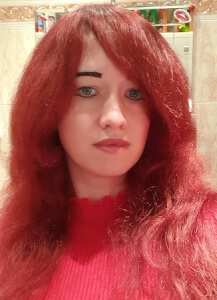
Kerstin Borchhardt
74. On the way to abject oriented entanglements: post-natural monsters in contemporary art (Kerstin Borchhardt)
Dr. phil. Kerstin Borchhardt, art historian, born in1984, actual research project: Between myth, aesthetics and science: on the role of post-natural ecologies in contemporary art and culture: - 2019 research stays in Mexico City and collaboration partner in several artistic and scientific projects. 2014 – 2019 research assistant at the Institute of Art History at Leipzig University (Germany) and institutional coordinator of the international ERASMUS+exchange program. 2013 – 2014 teacher at the Institute of Applied Arts at Erfurt University (Germany). 2013 PhD at Friedrich-Schiller-University Jena (Germany) (degree “summa cum laude”): - Funding and awards: 2015 – 2016 Traineeship in the mentoring program „T.E.A.M. Förderprogramm für Nachwuchswissenschaftlerinnern“ at Leipzig University; 2013 travel award of the Northeast Modern Language Association (NeMLA, USA); 2010 – 2012 PhD scholarship of the Gerda Henkel Foundation: - Selected publications: Kerstin Borchhardt, From mental experiments to material presence: expanded ecotopias between nature, science and spirituality in contemporary art, in: Giuseppe Schembri Bonaci / Nikki Anne Petroni (ed.): APS Mdina Cathedral Contemporary Art Biennale 2020: regaining a paradise lost: the role of the arts, Valetta 2020, 31 – 45; Kerstin Borchhardt, Art, technology, and Frankenstein’s legacy, in: Michael E. Peters (ed.): Encyclopedia of teacher’s education (Springer Nature), Cham 27 July 2019, on: SpringerLink https://link.springer.com/referenceworkentry/10.1007%2F978-981-13-1179- 6_346-1; Kerstin Borchhardt, Giger en el futuro: in: César Oropeza/Carlos Arenas/Marco Witzig (ed.): H. R. Giger: dark scene – el genio del futuro, Ciudad de México 2018, 8 – 11; Kerstin Borchhardt: Böcklins Bestiarium: Mischwesen in der modernen Malerei, Berlin 2017: - Curated exhibitions: Together with César Oropeza Remirez: Otherness: Skulls and Alebrijes through the MirRow, German-Mexican collective exhibition 14 – 25 May 2018 at the Neues Augusteum at Leipzig University; together with Tanja Zimmermann: Mythos und Geschichte in Comics und Graphic Novels, 12 March – 03 April 2018 at Gallery of Contemporary Art (GFZK) Leipzig and 08 April – 08 October 2016 at the Institute of Art History at Leipzig University.
Kerstin Borchhardt
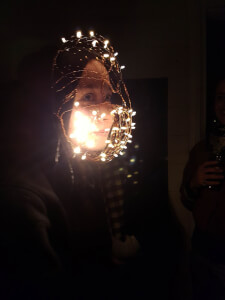
Kim Doan Quoc
54. Death and Virtuality (Kim Doan Quoc)
Kim Doan Quoc is a visual artist from Lille, France. Her work ranges from photography and video to installation and performance. She uses various representations of the body, plants and landscapes to explore the relationship between culture and nature. Since 2011, her work as a visual and performance artist has been exhibited internationally in Sao Luis (Cultivamos Cultura), Budapest (Trafó House), Brussel (Pink Screen Festival), Paris (Carbon17), Berlin (Fashion Week), Mexico City (TTT2018) and New York City (Queens Museum).
Kim Doan Quoc
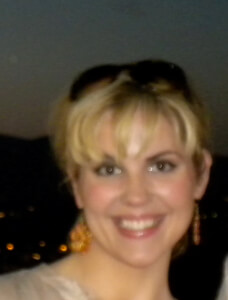
Kimberly Johnson
108. “In a locked and scrambled form: Art-Science scenes, objects and figures in corporeal transgression” (Dolores Steinman, Michael Sappol, Kimberly Johnson, Silvia Casini, Günther Seyfried)
163. Gunther von Hagens and the Seductive Flesh of Cadavers (Kimberly Johnson)
163. Gunther von Hagens and the Seductive Flesh of Cadavers (Kimberly Johnson)
Kimberly Johnson is an American art historian, currently teaching at the University of Alberta in Edmonton, Canada. Her specializations include: utility and innovation in the visual culture of anatomical models, anthropodermic bibliopegy as pedagogy, materiality of bodily representation in contemporary artistic practice and the phenomenology of museum experience through the lens of disability. Currently, Kimberly is working on three projects: a history of the figure of the drowned woman; an exciting project on early modern international trade and its impact on contemporary Indigenous sculptural practice; and completing her book on the contemporary display practices of Gunther von Hagens’ BODYWORLDS plastinates. When she isn’t teaching, researching or working on project development, Kimberly enjoys shocking colleagues, friends, family and acquaintances with photos of unusual and unsettling anatomical specimen and works of art that she will inevitably incorporate into her work.
Kimberly Johnson
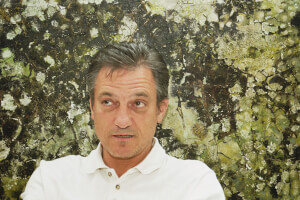
Klaus Spiess
130. Semiotic Sympoiesis for the Posthuman Commons (Klaus Spiess and Lucie Strecker)
Klaus Spiess runs the cross-disciplinary Arts and Science program and the LASER Art&Science talks at the Medical University Vienna, where he is Associate Professor. He researches transdisciplinary performances/ installations as method of biopolitics. He has performed (together with artist Lucie Strecker) at Budascoop Kortrijk; Tanzquartier Vienna; Belvedere/21er Haus, Vienna; Bemis Center of Contemporary Art, Omaha; Click Festival, Helsingør; ISEA, AIL Vienna, Muffatwerk Munich, Haus der Kulturen der Welt, Berlin, Ars Electronica among many other venues. His installations have been shown at venues such as the Beall Center for Art + Technology, Irvine, the Onassis Cultural Center, Athens, and at the Prix Ars Electronica Festival. He has published on the subject of his work in Leonardo, Performance Research and The Lancet. He is member of the UCL Art&Science Collective at the University of California, Los Angeles, Chair of the International Art&Science LASER talks at Vienna and member of the 2020 Artistic Comnittee of TaboTransferenceTransgression at the Angewandte Vienna.
Klaus Spiess
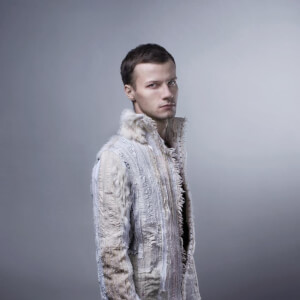
Krystian Gradz
78. Affective Mapping of David Wojnarowicz's Work (Krystian Gradz)
Krystian Marcin Gradz is an Assistant Professor at Szczecin University, Poland. He received his PhD degree from the University of Warsaw with a thesis on the representations of death in contemporary American literature. His research interests include negative affectivity, conceptualizations of death and dying as well as aesthetics and politics of bodies. He has published numerous academic works on such topics as performativity in contemporary literature and representations of despair and melancholy.
Krystian Gradz
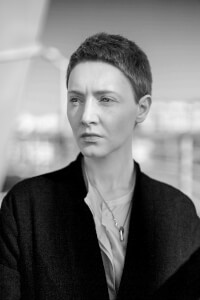
Ksenia Yurkova
29. Liminalities of incorporation (Ksenia Yurkova)
Ksenia Yurkova (1984) is an artist, curator, and researcher, living between Russia and Austria. She considers her leading artistic media to be text, photography, video, and installation. Yurkova started her practice as a researcher in the field of political theory and communication theory. The main focus of her interest for a long time was communication and language: the varieties of its substance, the possibility of conversion, its mythological aspect, stereotyping (the question of personal and political self-identification and identification by others), problems of memory, attitudes, and reliance. Lately, the artist is researching the phenomenon of affect in its autonomous bodily emanation; in its personal and political registers. She focuses upon how a stage of individual perception, to which one can relate memory, traumatic recollection, and problems of identity construction, transforms itself into affects of the political body. Coming a long way from political and cultural journalism, through organising and curating cultural and art events, Ksenia settled in individual artistic and research practice, which allows the useful critical distance for observation and working with contemporary issues. Her approach is based on methods of language appropriation, over-affirmation, self-reflection, and self-criticism through ironic component inevitably added to the most pressing matters. Nonetheless, Ksenia didn’t give up socially engaged practice and launched a festival-laboratory Suoja/ Shelter in Helsinki, which already the 3rd year touches upon sensitive problematics of society. Ksenia Yurkova has taken part in numerous shows and festivals worldwide, has released several artist books. Her works are in private collections in Russia, Germany, France, Finland, and Austria.
Ksenia Yurkova
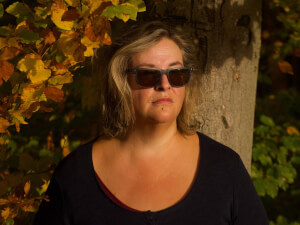
Kt Zakravsky
124. Hosting Transcendence On the eco-ethical “spacing” of the immersive arts. (Kt Zakravsky)
K.T. Zakravsky, Dr., is a trained philosopher, a concept and performance artist, writer, developer of media and social design projects and, teaching Political Theory and Anthropology. Since 2012 freelance scholar, curator, artist with main interests in science studies, urban life forms, social media, the creation of new mythologies for both local and global liberation. 2012 also foundation of ZAK RAY. TransFormanceUnit for the conception and execution of trans-projects. Since 1994 theatre, dance and performance work with Oleg Soulimenko, Daniel Aschwanden, Chris Haring etc. 2015-2017 Artist in Residence at the seeLab, Seestadt Aspern (Jan Lauth, Simone Carneiro u.a.), project „L>FiST“ on 7 fictitious characters who have disappeared in Seestadt. 2016/17 curating (with Alexander Horwath) of the film show „Traurige Technik“ on dystopian movies of the 1970ties at Filmmuseum Vienna. Since 2018 cooperation with Klaus Spiess/Lucie Strecker on projects at the interstices of biology, performance and Anti-Capitalist theory and practice. https://planetzakra.wordpress.com/
Kt Zakravsky
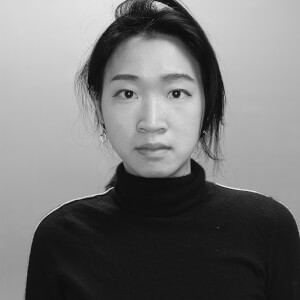
Kwan Q Li
20. Algae Mask (Michelle Lai, Kwan Q Li)
Kwan Q Li is a Hong Kong interdisciplinary artist. Her research-based practice explores post-colonial intricacies and ideological alternatives within the neoliberal context. Former exhibitions include performance / lectures at the Ashmolean Museum, Oxford; the AI&Society Journal conference at the University of Cambridge; IdeasCity residency co-curated by NTU CCA and the New Museum. Queenie holds a BFA degree from the Ruskin School of Art, University of Oxford, where she was awarded the Stuart Morgan Prize for Art History (top thesis prize), and a BBA degree in Global Studies from the Chinese University of Hong Kong. She is currently attending the Master of Science in Art, Culture and Technology programme at MIT on a teaching fellowship. liqueenie.com.
Kwan Q Li
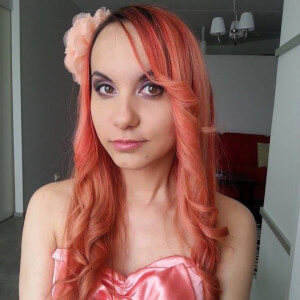
Laida Limniati
149. Like Real Friends Do: Communicating in Social Media with Sophia the Robot (Laida Limniati, Dalila Honoratο, Andreas Giannakoulopoulos)
Laida Limniati is a digital marketing expert, working in the field of communications and PR in BrilliantPR, a high-profile PR and Communication Agency. She has also worked as a journalist in the field of technology and business. Her research interests include data journalism, social media, usability, Human Machine Interaction and digital marketing.
Laida Limniati
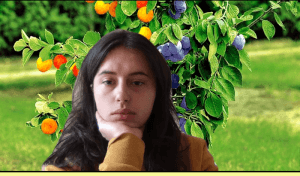
Laura Irmer
136. Genetic chimera/ Ghost in a cortex (Laura Irmer, Demian Thirst)
Laurine Irmer is a student of Language Arts and Philosophy in Vienna. In order to reflect upon trans-disciplinary communication she creates theatre formats in which questions and methods of disciplines such as translation, natural science, philosophy and arts interrelate.
Laura Irmer
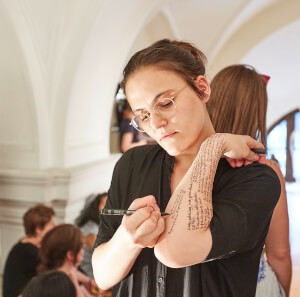
Laura Stoll
142. Therapy | Reprogram: Psychotherapy & Mind-Hacking (Laura Stoll)
Laura Stoll is a Vienna-based artist working in the fields of sculpture, installation and performance. Born in Innsbruck, she acquired a degree in medicine at the Charité Berlin before enrolling in the Art & Science MA program at the University of Applied Arts Vienna. In her projects Stoll is working on the borders of medicine, psychology and philosophy and employs the methods of these fields to research questions of personal identity, trying to understand how humans work. Since living in China during adolescence she aims to challenge the notion of subject and object as principal entities in Western philosophy. Besides that, Stoll is trying to come to terms with the limitations of intersubjectivity and establishing truths in science because she has read too many constructivist books. Laura Stoll is unmarried, has no children or dogs and lives in a shared flat in the house where Beethoven died in Vienna. Photo©Birgit und Peter Kainz; M.A.
Laura Stoll

Lauren Ruiz
169. GLEI Inc.: The Plasticization of Privilege (Lauren Ruiz)
Lauren Ruiz is a research-based multimedia artist whose work addresses ecological contamination and the corrosive effects of human activity amidst post-humanist philosophy. Ruiz has presented her research projects at the Latvian National Museum of Art, UC Santa Barbara, UC Berkeley, and is preparing to present her current work at the College of Art Association Conference in 2021. Her work has been exhibited at galleries and art institutions in the United States, Japan, Canada, and Cuba. Ruiz has been a resident artist at the Vermont Studio Center, Guerrilla Science’s ArtSci Residency, and is preparing for a residency at Santa Fe Art Institute in 2022. Lauren Ruiz lives and works in Bellport, New York.
Lauren Ruiz
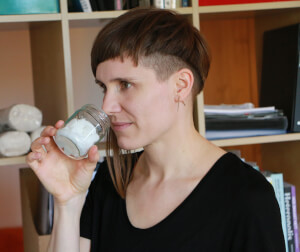
Lauryn Mannigel
131. The political and aesthetic potential of body scents (Lauryn Mannigel)
Lauryn Mannigel (1983) is an artist researcher based in Berlin since 2015. She worked and studied abroad in Paris (FR), Montreal (CA), The Hague (NL) and Oxford (UK) over an 11-year period. Lauryn holds an M.A in Contemporary Art and New Media from Université Paris 8 (2009). Her work tackles the issue of the Western cultural dominance of visual aesthetics and epistemology by exploring non-visual modalities and perception. Lauryn’s recent interest encompasses the politics of body scent by inviting the public to explore their perceptual judgments about others’ body scents. In this line of work, she recently presented her projects Love Sweat Love (2016), Eat Me (2018), Smell Feel Match (2019) and I smell a rat (2019) in Europe, Canada and India. In addition, she showed the first results of her research into people’s felt perception towards others’ body scents at the interdisciplinary Human Olfaction Conference (2017).
Lauryn Mannigel
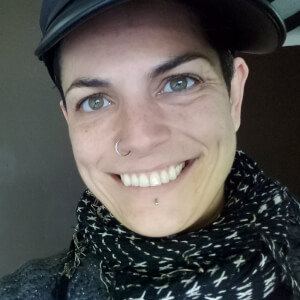
Lorena Peña
42. Forensic love and Visceral Data: Bio-antidote for romantic love (Cecilia Vilca, Lorena Peña)
B.A. ‘Performing Arts’ at the Pontificia Universidad Católica del Perú; M.A.'Contemporary Performance Making' from Brunel University UK and M.A. 'Creative Producing for Live Performance' at the University of London Birkbeck College UK. Her performative and artistic research crosses the liminal spaces between physical action, body art, multimedia, interactive and interdisciplinary performances. She creates her work within the themes of gender, identity and body politics, with a documentary and autobiographical approach. She understands the body as territory, a symbolic/poetic matter, with which she expresses reflections, questions and obsessions about our/her existence today. Since 2010, she has presented her performance work at various international festivals, seminars, residencies and programs in Peru, Cuba, Brazil, Colombia, Mexico, Chile, Argentina, Denmark, the United Kingdom and Germany. Currently she is Art Professor at Pontificia Universidad Católica del Perú (PUCP), Universidad Científica del Sur (UCSUR) and Universidad Peruana de Ciencias Aplicadas (UPC).
Lorena Peña
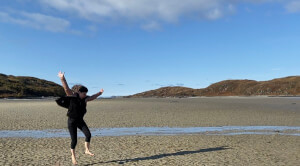
Louise Mackenzie
61. Offering the Body (Louise Mackenzie)
182. Body Shopping – challenging convention in the donation and use of bodily materials through art practice (Tarsh Bates, Isabel Burr-Raty, WhiteFeather Hunter, Charlotte Jarvis, Hege Tapio, Adam Zaretsky and Miriam Simum)
182. Body Shopping – challenging convention in the donation and use of bodily materials through art practice (Tarsh Bates, Isabel Burr-Raty, WhiteFeather Hunter, Charlotte Jarvis, Hege Tapio, Adam Zaretsky and Miriam Simum)
Louise Mackenzie is an artist, filmmaker, curator and researcher working across contemporary visual art, new media, film and sound. Her research explores human relationships to the nonhuman world through process-based and participatory art practice. She is founder and curator of interdisciplinary pop-up cinema, Black Box, a member of the Cultural Negotiation of Science research group, Northumbria University, an Associate of the Institute of Genetic Medicine, Newcastle University and holds a PhD in Fine Art from BxNU Institute of Contemporary Art. Louise has spoken and exhibited nationally and internationally, including RE:SOUND (Denmark), Pomona Museum of Art, California (USA), Unhallowed Arts, Perth (Australia), National Library of Spain, Madrid (Spain), ISEA (Colombia), ISEA (Hong Kong), BALTIC CCA and BALTIC39, Newcastle (UK), Charles Darwin House, London (UK), Leonardo LASER London (UK), Basement 6 Collective, Shanghai (China), National Taiwan University of the Arts (Taiwan), Summerhall, Edinburgh (UK), Lumiere Durham (UK) and Fort Process, Newhaven (UK).
Louise Mackenzie
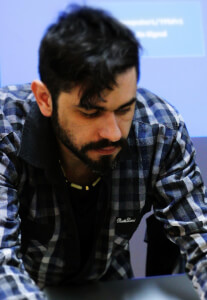
Luc Messinezis
24. Orders of the Heard. The Order of Sorcery (Luc Messinezis, Apostolos Loufopoulos)
Luc Messinezis is an artist and researcher working across sound, installation and performance. He holds an MA in sound arts awarded by the University of the Arts London and his practice oscillates between aural awareness, anthropology, notions of reality and authenticity. Luc usually aims to mediumizing the audience by placing them at the epicentre of the work and thus fusing gesture, aesthetics and message into an enhanced reality. Notable presentations of his work include Ars Electronica 2020 (Linz, Austria), minus20degree Festival 2020 (Flachau, Austria), Primarolia Festival 2019 (Egio, Greece), ADAF 2015 (Athens, Greece) and Ethnographic Terminalia 2011 (Montreal Canada) among others. Luc was nominated for the ScreenGrab7 Media Award in 2015 (Townsville, Australia) for his work ‘The Modern book of Cynics’ while as an academic researcher he has presented his work in a multitude of international conferences, authored several publications and currently scrutinizes ‘aural simulacra’ as a PhD Candidate.
Luc Messinezis
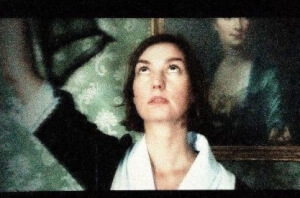
Lucie Strecker
130. Semiotic Sympoiesis for the Posthuman Commons (Klaus Spiess and Lucie Strecker)
Lucie Strecker¬, a Vienna-based artist, performer and researcher, works across varied media, with a focus on experimental systems. She has performed and exhibited nationally and internationally and thought Performance Art and Experience Design at the Free University of Bozen-Bolzano. A Fellow of the Berlin University of the Arts, she currently holds a senior postdoc position at the Art & Science department of the University of Applied Arts Vienna, conducting the Elise-Richter-PEEK project The Performative Biofact, funded by the Austrian Science Fund. She is also appointed as Senior Artist for the new Angewandte Performance Laboratory. Together with Klaus Spiess she exhibited i.a. at at, the House of World Cultures, Berlin, Bemis Center for Contemporary Art, Omaha, USA, Beall Center for Art and Technology, Irvine, USA, the Museum of Natural Science, Vienna, the 21er Haus, Vienna, Click Festival for Art, Science and Technology, Helsingør, Denmark, Onassis Cultural Center, Athens, Muffathalle Munich, Vienna Künstlerhaus, ISEA Manizales, Colombia, and Ars Electronica Linz. Her work was honoured with the Performing Science Award in 2011 and with the Prix Ars Electronica – Honorary Mention in 2015. Currently she is publishing together with Jens Hauser at Performance Research. A Journal of the Performing Arts the special issue: On Microperformativity.
Lucie Strecker
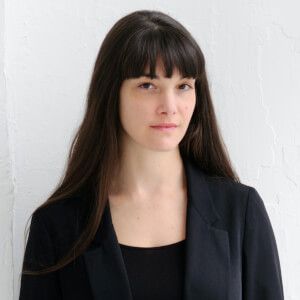
Maayan Strauss
156. Nanook (Maayan Strauss)
Maayan Strauss is a transdisciplinary artist and architect currently based in Berlin. She is the founder and director of Container Artist Residency, a program that invites artists to travel and make work onboard cargo ships. Her project The Service Room, an environment and platform for communal exchange, was realized as part of a residency at Recess, New York. She founded and ran Sushi Bar Gallery in Brooklyn from 2014 to 2017 and is serving as an editor at Art Handler, a magazine dedicated to the behind-the-scenes practices of the art world. She has exhibited in museums and galleries internationally, including The Herzliya Museum of Contemporary Art; The Israel Museum in Jerusalem; The Haifa Museum of Art; Para Site, Hong Kong; Recess, New York; Storefront for Art and Architecture, New York; Andrea Meislin Gallery, New York; Louis B. James Gallery, New York; and Shenzhen Biennale for Urbanism/Architecture.
Maayan Strauss
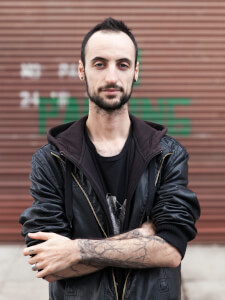
Marco Donnarumma
141. Radical Vulnerabilities (Margherita Pevere, Theresa Schubert, Marco Donnarumma, Patricia MacCormack, Jurij Krpan)
Marco Donnarumma is an artist, performer and scholar weaving together contemporary performance, new media art and computer music since the early 2000s. He has a Ph.D. from Goldsmiths, University of London and is currently a Research Fellow at the Academy for Theater and Digitality, Dortmund. His writings embrace performance studies, body theory, critical disability studies, aesthetics, human-computer interaction and unconventional computing in music.
Marco Donnarumma
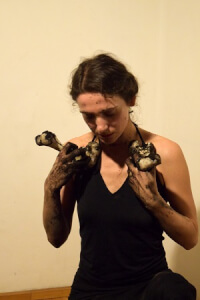
Margherita Pevere
141. Radical Vulnerabilities (Margherita Pevere, Theresa Schubert, Marco Donnarumma, Patricia MacCormack, Jurij Krpan)
Margherita Pevere is an artist and researcher whose practice glides across biological arts and performance. Her transdisciplinary inquiry hybridizes biolab practice, biotechnology, ecology, gender and death studies, with a hacking attitude to create visceral installations and performances that hunt today’s surging ecological complexity. Her body of work is a garden crawling with genetically edited bacteria, her epithelial cells, sex hormones, microbial biofilm, bovine blood, slugs, growing plants and decomposing biological remains. She would not be the artist she is today without extensive collaborations across different disciplines in art, science and humanities. Together with Marco Donnarumma and Andrea Familari, she co-founded the artists’ group Fronte Vacuo to realize performances made of bodies, symbionts, sounds, machines and images. She is completing a PhD (Artistic Research) at Aalto University on biological arts and feminist theory, supported by the Kone Foundation. She is member of the Finnish Bioart Society and of The Posthumanities Hub. Image: Margherita Pevere, Anatomy of an Interconnected System, credits Cecilia Vilca
Margherita Pevere
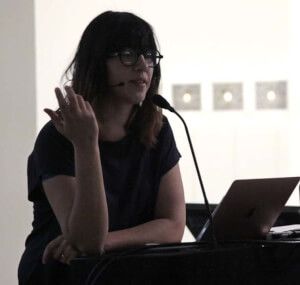
María Antonia González Valerio
133. The project Lygophilia (Robertina Sebjanic, Annick Bureaud, María Antonia González Valerio, Polona Tratnik)
María Antonia González Valerio, PhD in Philosophy, full professor at the Faculty of Philosophy and Literature of the National Autonomous University of Mexico. She works within the ontology-aesthetics research line and within the interdisciplinary line of arts, sciences and humanities. Director of the research group Arte+Ciencia, which brings together artists, academics and scientists to work interdisciplinarily producing postgraduate education, specialized theoretical research, artistic creation and exhibitions. Leader of the research project "Media and Species: Ecology and Evolution in Natural Philosophy" linked to the Faculties of Sciences and Philosophy and Literature at UNAM. Books (selection): El arte develado (Mexico: Herder, 2005); Un tratado de ficción (Mexico: Herder, 2010); (Ed.) Pròs Bíon: Reflexiones naturales sobre arte, ciencia y filosofía (Mexico: UNAM, 2015); Cabe los límites. Escritos sobre filosofía natural desde la ontología estética (Mexico: UNAM/Herder, 2016); (Ed.) Arte y estética en la filosofía de Arthur Danto (Mexico: Herder, 2018).
María Antonia González Valerio
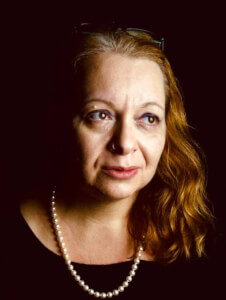
Maria Athanasekou
34. Sacred circles: Mandalas and their many dimensions in art, education and therapy (Maria Athanasekou, Roxani Giannou, Evmorphia Leventi)
Dr Maria Athanasekou completed a PhD in art history at the School of Architecture, National Technical University of Athens, on the art of the Pre-Raphaelites, an MA in Renaissance Studies at the University of London, Birkbeck College and a BA in Archaeology and History of Art at the National University of Athens. Currently, she is completing her post doc research at the University of Western Macedonia on Art and Education policy. She teaches art history at Frederick University, Cyprus and the Hellenic Open University, while in the past, among other institutions, she taught at the University of the Aegean and the National Technical University of Salonica. She has also delivered papers in a number of international conferences which have been published and contributed with chapters to books, as well as having published two e-books on art and education. She has edited and co written the book “Why art concerns me” (Γιατί με αφορά η τέχνη, Ηδυέπεια, 2020).
Maria Athanasekou

Maria Chalkou
146. Censored bodies and bodily functions in Dimitris Kollatos’s early films (Maria Chalkou)
Maria Chalkou holds a Ph.D. in Film Theory and History (University of Glasgow), sponsored by the Greek State Scholarships Foundation (I.K.Y.), and an MA in Film and Art Theory (University of Kent). Currently she is a post-doctoral researcher at Panteion University (CIVIL – Censorship in Visual Arts and Film, supported by ELIDEK) and teaches Film History, Film Theory and Documentary at the Department of Audio & Visual Arts of Ionian University. She is also the principal editor of Filmicon: Journal of Greek Film Studies. Her research interests focus on film cultures of the 1960s, Greek Cinema, contemporary European cinema, film censorship, film criticism and cinematic representations of the past. She has also researched and co-directed the documentary Oneira Mikrou Mikous (1960-1967)/Dreaming in 'Shorts' (1960-1967) for the TV program Paraskinio (2007).
Maria Chalkou
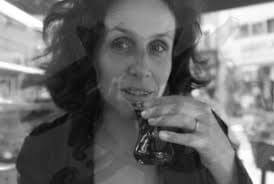
Maria Manuela Lopes
151. Transcending the Human: Mnemo-Media, Creativity and Impairment from Human to Hyper-Human (Maria Manuela Lopes)
Maria Manuela Lopes is a visual artist whose practice is transdisciplinary, investigating relations of memory/identity informed by the biological sciences and medical research; her work appears in a varied format within the visual arts resulting in multimedia installations, drawings and performances with biological materials. Lopes studied sculpture at FBA-UP has an MA from Goldsmiths College-London. She has a Doctorate in Fine Arts/New Media at the University of Brighton+UCA-Farnham in the UK. She has developed a Postdoctoral Art Research Project at the University of Aveiro and Porto – Instituto de Investigação e Inovação em Saúde, i3S. She is currently a researcher at i3S as co-responsible for the Cultural Outreach Art/Science interface. Maria Manuela Lopes has curated several international exhibitions and her work has been shown nationally and internationally. She is also co-founder and Deputy Director of Portuguese artistic residency programs: Ectopia - Laboratory of Artistic Experimentation and Cultivamos Cultura.
Maria Manuela Lopes
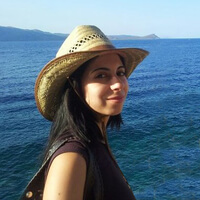
Mariana Ziku
88. Myth/Network (1990-2017) - The epistemology of myth (Mariana Ziku, Polyxene Kasda)
Mariana Ziku is an art historian and curator specialising in digital cultural heritage, with research focus on intangible, audiovisual and documentary heritage. She is an advocate of open culture and knowledge. She has studied extensively the work of artist PolyXene Kasda. She is concerned with the concepts of immateriality, collectivity and copy, re-interpretation and re-enactment in the arts and humanities, extended to cultural expressions of anonymity, improvisation, collective narratives/aesthetics, community-based practices and the commons. She holds a MSc in Digital Humanities (Department of Computer Science, KU Leuven, Belgium), a MA in Art History/Theory and Curation, a BA in Art Sciences (Department of Fine Arts and Art Sciences, University of Ioannina, Greece) and a CERT in Cultural Management (Centre of Continuous Education and Training, University of Athens). She is also a graduate of classical piano and music harmony of the Municipal Conservatory of Ioannina. She is co-founder and programme curator of the Biennale of Western Balkans.
Mariana Ziku
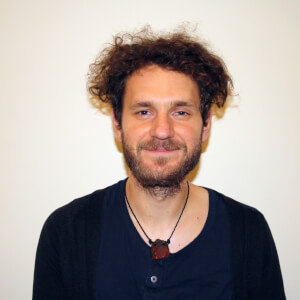
Marius Armonas
121. Hip Hip Hybridity and Leaking Arts (Marius Armonas)
Marius Armonas is a doctoral student at the department of Art History and Visual Culture in Lithuanian Culture Research Institute. His dissertation explores the relation between posthuman, materialist philosophies and contemporary installation art practices.
Marius Armonas
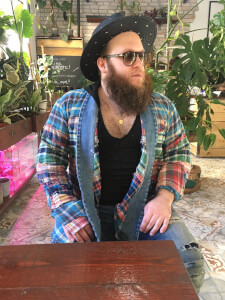
Mark Horvath
92. Death as Absolute Transgression in the Philosophies of Michel Foucault and Claire Colebrook (Adam Lovasz, Mark Horvath)
Mark Horvath is a philosopher and researcher who lives in Budapest. He is a co-founder and co-editor of Absentology, a Facebook page dedicated to philosophy and weird science, and Poli-p, a Hungarian posthumanist collective. His areas of interest include posthumanism, digital studies, speculative realism, pessimism, nihilism, finitude, and the anthropocene. He has published ten books, including two monographs in English.
Mark Horvath
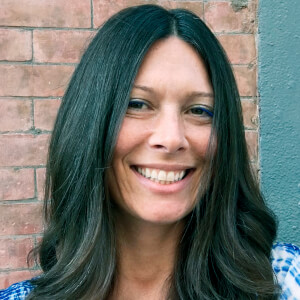
Marne Lucas
158. Deep See: Thermography as an Art Form (Marne Lucas, Cuntemporary Artists Presents)
Marne Lucas (New York, USA) is a multidisciplinary artist working at the intersection of art, feminism and health, using conceptual overlaps: life’s energy, intimacy, beauty, identity and mortality. A thermal infrared video pioneer, she uses military imaging technology to reference surveillance culture and reveal the light contained within us. Lucas’ social practice ‘Bardo ∞ Project’ explores creativity as a form of spiritual care, collaborating with artists facing life-limiting diseases to best establish their legacy. Marne is a practicing end of life doula (EOLD), a volunteer role as liaison to the dying. Lucas has exhibited at Plaxall Gallery (NYC), Fremantle Arts Centre (Perth, AU), in Transitional States: Hormones at the Crossroads of Art and Science (2018) a video exhibition in the UK and EU, and in Taboo -Transgression -Transcendence in Art & Science (2017 Corfu, GR.) She participated in an Arts/Industry Kohler Factory residency in Foundry and Pottery (2016).
Marne Lucas
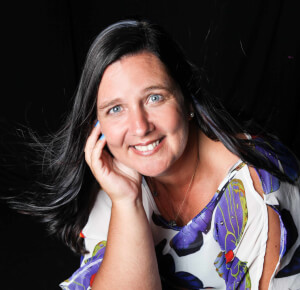
Marta de Menezes
174. Staying in touch: sci-fi experiments for post-coronavirus art curating (Marta de Menezes, Annick Bureaud, Regine Rapp, Christian de Lutz, Byron Rich, Paula Burleigh, Francesco Kiais, Jill McDermid-Hokanson and Christl Baur)
178. Bioscientific Imaginaries (Kathy High, Marta de Menezes, Jennifer Willet, Byron Rich and Paula Burleigh)
178. Bioscientific Imaginaries (Kathy High, Marta de Menezes, Jennifer Willet, Byron Rich and Paula Burleigh)
Marta de Menezes is a Portuguese artist (Lisbon, 1975) with a degree in Fine Arts by the University in Lisbon, and a MSt in History of Art and Visual Culture by the University of Oxford. She has been exploring the interaction between Art and Biology, working in research laboratories demonstrating that new biological technologies, DNA, proteins and live organisms can be used as an art medium. Her work has been presented internationally in exhibitions, and articles. She is since 2005 artistic director of Ectopia – Experimental Art Laboratory and from 2009 director of Cultivamos Cultura – Association.
Marta de Menezes
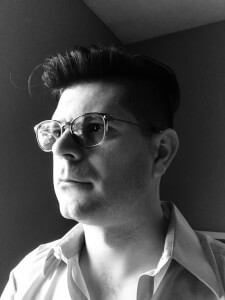
Matej Vakula
105. Dark Design (Matej Vakula)
Matej Vakula is an artist working with computation, biology, tissue printing, microfluidics and nanotechnologies, looking at their impact on society and nature. He studies the relationship between aesthetics, generative arts, biology, and artificial intelligence. In particular, he is exploring the role of ethics in emerging biotechnologies and the field of artificial intelligence. Matej collaborates with the Center for Molecular Imaging and Nanotechnologies at Memorials Sloan Kettering Cancer Center, Advanced Science Research Center at CUNY and he is a Ph.D. candidate at Rensselaer Polytechnic Institute. Matej worked as a research assistant at IBM Cognitive and Immersive Systems Laboratory. He is part of the Rensselaer BAT Lab at the Center for Biology and Interdisciplinary Studies and Genspace community biolab in Brooklyn. In 2009 he was awarded a Fulbright fellowship and worked as artist in residence at the SciArt center in New York City. His art is published and exhibited internationally including Arts Electronica Art and Science Network, the Sixth Prague Biennale of Contemporary Art, and many other. His research was published in the Technoetic Arts Journal.
Matej Vakula
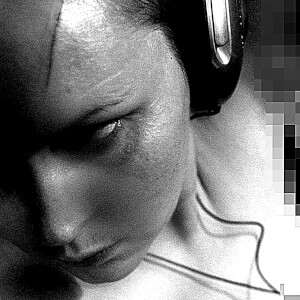
Max Maxi
38. “PA1N MAP/T0TAL R3CALL” (Max Maxi)
Max. Israeli independent Artist, dedicated to research, learning and hands-on engagement with Life, Science, and Art. Her practice spans multiple art forms. Max’s creations lean towards the extreme. The process of self-inquiry and self-reflectiveness that is repeated obsessively in her Art creates the foundations for brutal and exposed works and supports the narrative she wishes to convey. Max’s creations are liminal. They blur the lines between human and animal, Life and Death, flesh and machine. Animals become human and human bodies become amorphous and modular. Art of verge. Life on the edge. Existence on the brink. Max autodidact.
Max Maxi
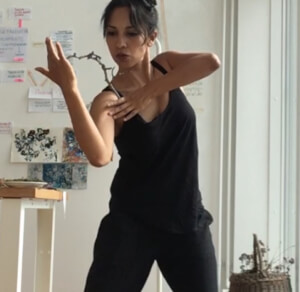
Mayra Rojo
1. Singular Creatures/Monsters (Mayra Rojo)
Artist, interdisciplinary researcher and curator in visual arts and body discourses, design and textile innovation research. PHD in art history, Postdoctorado research on science and textile. Artist in Residence in Biofriction Program (Finland, 2020), Air-Montreux (Switzerland, 2019) with the project: Atlas of Botanical-Anatomy. She currently develops curatorial research Monstruas: teratology of the feminine. Among papers stands out "The return of the Monster: Subversive power“ (2019), Zombi, Zumbi, Zombie: Subversive Imaginations (2019).
Mayra Rojo
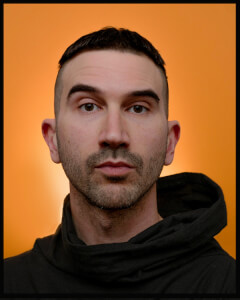
Michael Dudeck
113. Skin Bible: The Word Made Flesh (Michael Dudeck, Niki Sperou)
[M]DUDECK is an artist and cultural engineer who invents their own religion as Art. They approach Religion as a form of multi-media production, capable of inspiring beliefs, fabricating worldviews and engineering cultural codes. Their project, RELIGIONVIR.US presents religion as an infective agent capable of multiplying within the living bodies of its host, spreading across cultural vectors and infecting through medial pathways. Appropriating aesthetic strategies from sci-fi franchise culture, each RELIGIONVIR.US iteration (performance, exhibition, technosermon, publication) is regarded as both a “transmission” of their VIRUS and as an "episode" in an ongoing space opera. In the aftermath of Postmodernisms’ aggressive de-construction of the MetaNarrative, RELIGIONVIR.US performs a form of "re-construction", that weaves together the dismembered attributes of religion to produce new, transmedial artworks. RELIGIONVIR.US proposes art as a tool for hacking, scrambling and re--mixing religious codes to produce hybrid autonomous religiosities in the information age.
Michael Dudeck
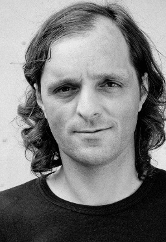
Michael Manfé
53. The suffering of the new idiots (Michael Manfé)
Michael Manfé, born in 1967, in Mittersill, Austria, studied Communication, Politics and Pedagogy in Salzburg and Vienna. He obtained his Magister degree at the Paris Lodron-University of Salzburg in 2000, his doctorate at the University of Vienna in 2004. His main fields of research are the effects of media on social behavior and aestetics. Publications (a selection): 2020 Vogt, Erik M. / Manfé, Michael (Hg.): Jacques Rancière und die Literatur. Wien: Turia+Kant. Manfé, Michael / Machreich, Wolfgang: Hurensöhne. Das Gift der Sprache. Hamburg: Avinus. 2017 Manfé, Michael (Hg.): Das Immoralische. Hamburg: Avinus. 2016 Manfé, Michael (Hg.): Ohnmacht. Hamburg: Avinus. 2015 Manfé, Michael (Hg.): Revolutionen des Gewissens. Hamburg: Avinus. 2013 Manfé, Michael: Kunst und Methode? Erschließung von methodologischen Varianten. Berlin: Avinus. 2005 Manfé, Michael: Otakismus. Mediale Subkultur und neue Lebensform – eine Spurensuche. Bielefeld: transcript.
Michael Manfé
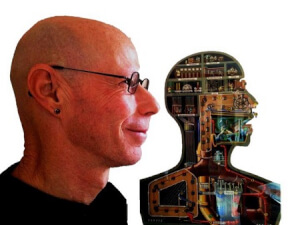
Michael Sappol
108. “In a locked and scrambled form: Art-Science scenes, objects and figures in corporeal transgression” (Dolores Steinman, Michael Sappol, Kimberly Johnson, Silvia Casini, Günther Seyfried)
Michael Sappol is a historian of the visual culture and performance of medicine and science. He lives in Stockholm and is Visiting Researcher in the History of Science & Ideas at Uppsala University. For many years Sappol was curator and scholar-in-residence in the History of Medicine Division of the National Library of Medicine. He is the author of A Traffic of Dead Bodies (2002) and Body Modern: Fritz Kahn, Scientific Illustration and the Homuncular Subject (2017), and co-editor of A Cultural History of the Human Body in the Age of Empire (2010). Current projects: “Anatomy’s photography: Objectivity, showmanship and the rein-vention of the anatomical image, 1860-1950”; “Queer anatomies: Medical illustration, perverse desire, and the epistemology of the anatomical closet”; and “Relics of lost medical civilizations”. For a CV and links to selected publications, blogs and websites, go to https://uppsalauniversitet.academia.edu/MichaelSappol.
Michael Sappol

Michele Daneluzzo
70. Adapt Evolve Become (Michele Daneluzzo)
Michele was born in 1988 in Pordenone, Italy. He earned the Master degree in Industrial Design in 2015 under the supervision of the Professor Paolo Piva at the University of Applied Arts in Vienna. During his growth he matured a strong personal idea about what today is “lightly” understood and interpreted as “Design”; core of his interests, he’s defining it as an essential element for understanding what it means to be a Human Being. Michele is co-founder of “Nyxo”, Architectural and Product Design studio which the ambition is to re-territorialize design as a tool to discover the horizon of new knowledge. His “Design Language” is enriched by a strong emotional and semiotical property, reflecting his interest in the “Humanities”. His work has been internationally exhibited and awarded in different events and museums, including the Cooper Hewitt Design Museum of New York City.
Michele Daneluzzo
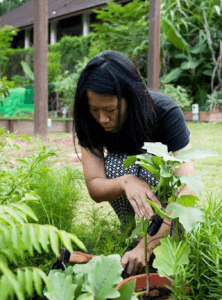
Michelle Lai
20. Algae Mask (Michelle Lai, Kwan Q Li)
Michelle Lai is a forager, urban farmer and tinkerer based in Singapore. She is part of Tanah, a collective that looks at reimagining spaces with food - agri interventions. She is currently lab lead at Native in Singapore, exploring culinary lexicon around biodiversity, sustainability and the like. She is one part of the multidisciplinary project Algae Mask.
Michelle Lai
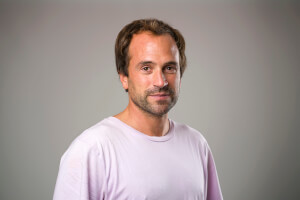
Miguel Oliveros Mediavilla
63. This is not Iraq: A Kurdish Tale. (Miguel Oliveros Mediavilla)
Fine artist, sound designer and programmer. PhD "cum laude" in fine arts. Associate Professor at University Nebrija, Madrid, Spain and researcher at Innomedia_Nebrija. Management Committee member at COST action 19112, "Women on the move".
Miguel Oliveros Mediavilla
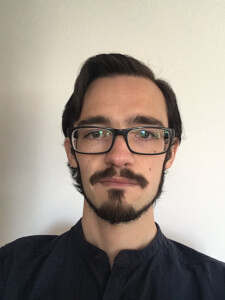
Mihai Bacaran
55. Snowflakes. The individuation of melting memories (Mihai Bacaran)
Mihai Băcăran is a PhD candidate at The University of Melbourne. He holds an MA in Art Theory from Beijing Normal University and a BA in Art History from The University of Bucharest. His PhD research looks at questions of embodiment in relation to spectatorship in net art, asking how the interaction with online works influences what our(?) bodies ‘are,’ ‘do,’ and 'mean.’
Mihai Bacaran
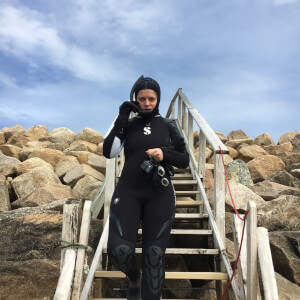
Miriam Simun
182. Body Shopping – challenging convention in the donation and use of bodily materials through art practice (Tarsh Bates, Isabel Burr-Raty, WhiteFeather Hunter, Charlotte Jarvis, Hege Tapio, Adam Zaretsky and Miriam Simum)
Miriam Simun works at the intersection of ecology, technology and the body. Her practice spans multiple formats including video, performance, installation, and communal sensorial experiences. Trained as a sociologist she spends time in communities of experts ranging from biomedical engineers to botanists; hunters to human pollinators; octopuses to breastfeeding mothers. Taking on the role of ‘artist-as-fieldworker,’ much of her process is rooted in research as lived experience, forefronting corporeal and sensorial ways of learning, listening and knowing. Simun’s work has been presented internationally, including the New Museum (New York), Himalayas Museum (Shanghai), DeutscheBank Kunsthalle (Berlin), The Contemporary (Baltimore), Bogota Museum of Modern Art (Bogota), Ronald Feldman Fine Arts (New York), Museum of Fine Arts (Split), Museum of Arts and Design (New York), Robert Rauschenberg Gallery (New York), and the Beall Center for Art + Technology (California). She is a recipient of awards from Creative Capital, Robert Rauschenberg Foundation, Joan Mitchell Foundation, Foundation for Contemporary Arts, as well as the inaugural 2019 Gulbenkian / Carpintarias de São Lázaro International Artist-in-Residence, a 2018 Visual Arts residency at the Headlands Center for the Arts, a 2016 Artist Residency with OMI International Arts Center in New York, a 2015 Food Justice Residency at the Santa Fe Art Institute, and a 2014 Art Professionals in Athens residency in Greece. Her work has been recognized internationally in publications including the BBC, The New York Times, The New Yorker, CBC, MTV, Forbes, Art21 and ARTNews. Simun is a graduate of the MIT Media Lab, ITP at NYU Tisch School for the Arts and the London School of Economics and Political Science.
Miriam Simun
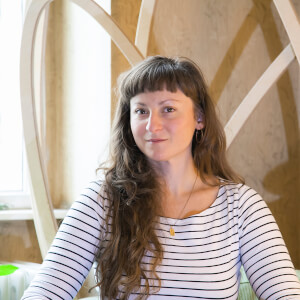
Monica C. Locascio
96. All You Have to Lose is Ecstasy: The Intuitive, Occult and Somatic as Methods of Inquiry (Monica C. Locascio, Pêdra Costa, Zosia Hołubowska, Florentina Holzinger, Daniela Brill Estrada and Elisabeth von Samsonow)
Monica C. LoCascio is a mixed-media artist exploring the relationship between the inherent powers of the body, mind, and unseen energetic forces. Taking inspiration from quantum physics, somatic studies and therapies, and her own ritual practice, she creates work that connects viewers with the hidden realities, capabilities, and structures within them. While exploring these scientific and spiritual concepts, her practice has evolved from paper and sculpture into the more tactile form of embroidery, with a material research focus on bacterial cellulose as a textile base. Her research-based practice renders intimate works that can take months to produce. LoCascio has shown at the Biennale Sessions at the Venice Biennale 2019, the Museum of Natural History of Vienna, The Academy of Fine Arts in Krakow, CERN, and the Angewandte Innovation Lab. She is currently working towards an MA in Art & Science at the Universität für Angewandte Kunst in Vienna, Austria.
Monica C. Locascio
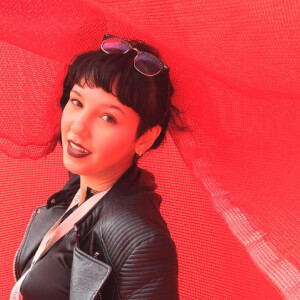
Natacha Lamounier
90. Building a post-human: Analysis of the bio-artwork May the horse live in me (Natacha Lamounier)
Natacha Lamounier (1991, Brazil) is an artist and researcher in the Media Arts field with a multidisciplinary background. She holds an Erasmus Mundus scholarship in a Master mobility program from the Universities of Krems (Austria), Aalborg (Denmark), and Lodz (Poland). She lives currently in Denmark. She has a degree in Materials Engineering from the Federal Center for Technological Education of Minas Gerais (Brazil) and in Fashion Design at the Federal University of Minas Gerais (Brazil). Natacha worked on interactive wearables research and is also interested in the relations of the human body and nonhumans (animals, machines, environment), post-humanism, and feminist studies. The laboratory is one of her favorite places to be, but she also dedicates her time to painting, sewing, and mountain biking.
Natacha Lamounier
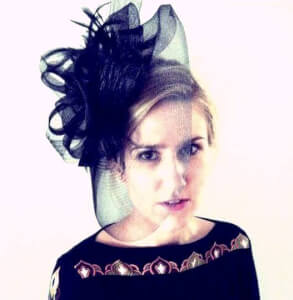
Natalia Anna Michna
13. Wolf, Pig, Meerkat, and Human Being: Are They Really Separate Species? Hybrids in the Posthumanist Work of Olga Tokarczuk and Patricia Piccinini (Natalia Anna Michna)
Natalia Anna Michna ‒ PhD in philosophy. Employed as an assistant professor at the Institute of Philosophy, Jagiellonian University in Krakow, Poland. Principal developer of the research project ‘The Roman Ingarden Digital Archive: Unknown Correspondence and Academic Papers of the Eminent Polish Humanist’ financed by the Ministry of Science and Higher Education of the Republic of Poland. Director of a project entitled ‘The Concept of Female Experience and the Problem of Feminist Aesthetics’, financed by the National Science Centre in Poland. Deputy editor-in-chief of the philosophical-aesthetic quarterly The Polish Journal of Aesthetics. Recently has published a book entitled Women and Culture. The Problem of Experience in Feminist Philosophy (2018). Research interests concern feminist philosophy, contemporary art, and the aesthetics and philosophy of Roman Ingarden. In private life, loves playing with her cats, eating delicious food, and cooking for her family. Favourite forms of relaxation include home gardening and travelling around the world. ORCID: https://orcid.org/0000-0001-9334-474X.
Natalia Anna Michna
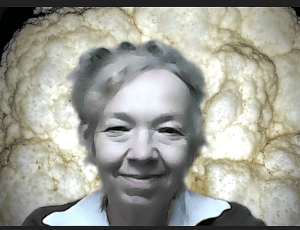
Nathalie Dubois Calero
40. Name: Nathalie, Species: BacterHomo insipiens (Nathalie Dubois Calero)
Bioartist with one foot in the art (graduated in Fine Art-BFA), one foot in science (Ph.D. in plant science), my preferred media are micro-organisms, growing over a fabric, in co-culture with Rochelle crystals, integrated into metal/plaster objects or as a very personal food, making colonies from airborne spores or human bodies. My works are a reflection about our relationships with microbes as a part of ourselves and the world we cannot dominate or control, but that is an intimate part of ourselves- we breathe them, live, coevoluate with them. We act as a master of the Universe, but what are we? Bacterial and viral humans trying to dominate everything because we can't dominate the non-human (or too much human?) part of ourselves? Born in France and living in Montreal, Canada, I am affiliated to the Speculative Life Lab Cluster, Milieux Institute for Arts Culture and Technology, Concordia University, Montreal, Qc, Canada, since 2016.
Nathalie Dubois Calero
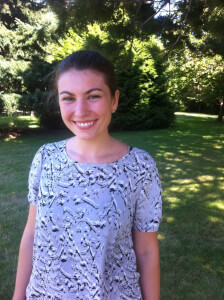
Nicole Clouston
30. Mud Workshop (Nicole Clouston, Amy Youngs, Jenifer Wightman and Jennifer Zackin)
Nicole Clouston is a practice-based researcher and teacher who completed her Ph.D. in Visual Art at York University in Toronto. In her practice, she asks: What happens when we acknowledge, through an embodied experience, our connection to a world teeming with life both around and inside us? Nicole has exhibited across Canada and internationally, most recently in Detroit, Michigan. She was the artist in residence at the Coalesce Bio Art Lab at the University at Buffalo and the artist in residence at Idea Projects: Ontario Science Centre’s Studio Residencies at MOCA Her work can be found at www.nicoleclouston.com.
Nicole Clouston
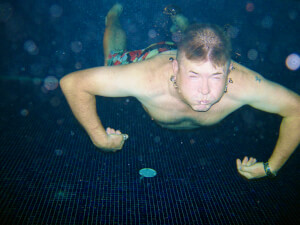
Nigel Helyer
21. Tracing Silence; Ecocide and Omnicide (Nigel Helyer)
22. Co-composition and De-composition (Nigel Helyer)
22. Co-composition and De-composition (Nigel Helyer)
Dr Nigel Helyer (aka DrSonique) is a contemporary polymath whose work links Art and Science, or more accurately Poesis and Techne in a strong embrace of the environment, identity and cultural history. He has an international reputation as a sculptor and sound-artist who creates large scale sound-sculptures, environmental artworks and inter-active bio-art projects that prompt the community to engage with their cultural histories, identity and sense of place. His works are an open invitation to examine the abstract conditions of our world and our complex relationships to it. Helyer web-archive — http://www.sonicobjects.com
Nigel Helyer
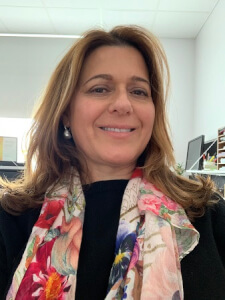
Niki Sperou
113. Skin Bible: The Word Made Flesh (Michael Dudeck, Niki Sperou)
Niki Sperou is bio-artist participating in nexus between art and science since 2001. She works with traditional and media arts, wet biology and scientific methods to create artworks that evoke the ethical, cultural and economic implications of manipulating live media. Themes she has explored include; being human, biopolitics, sentience, Prometheanism, chimeric and cultural hybrids, extending life, prosthetics, toxicity, bio-informatics, antibiotic resistance and the human microbiome. She has conducted bio-art workshops in Australia, Europe and Canada. Since 2006, she has been the artist in residence at the Department of Medical Biotechnology, Flinders University. Recently she collaborated with ANAT and the Centre for Marine Bioproducts Development toward the development of marine algal biopolymers and bioplastics. She has contributed articles to australian and international journals. In 2006, she was awarded the Fringe Festival Individual Artist Award for her Chimera series; interfacing biotechnology and ancient Greek culture.
Niki Sperou
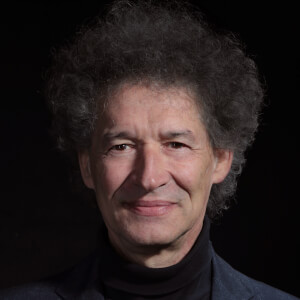
Nikolaos Kanellopoulos
16. Plato and Hyperspaces: Investigating the Connection Between Plato’s Theory of Ideas and Higher Spatial Dimensions (Dimitrios Traperas, Charilaos Gounaropoulos and Nikolaos Kanellopoulos)
Professor Emeritus Nikolaos Kanellopoulos has served at the Ionian University as vice-President of the Council, President of the Audio and Visual Arts Department, Deputy Head of the Department of Informatics. Also, he has served as President of the Greek National School of Dance. As a TechnArtist, his main research interest is the application of Augmented Reality (AR) digital technology in audiovisual educational interactive systems, the use of which may help us not only to learn faster but also to, possibly, perceive the fourth spatial dimension.
Nikolaos Kanellopoulos
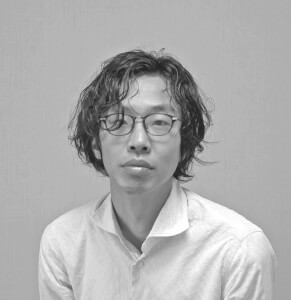
Nobuhiro Masuda
101. Taxonomy of Posthuman Anthropomorphism in Science and Art: From Animal to Machine (Nobuhiro Masuda)
103. Living Image: squid chromatophore as an alternative pixel (Juppo Yokokawa, Nobuhiro Masuda, Kazuhiro Jo)
103. Living Image: squid chromatophore as an alternative pixel (Juppo Yokokawa, Nobuhiro Masuda, Kazuhiro Jo)
Permanent Lecturer at Faculty of Design, Kyushu University, Japan. He is specializing in media theory, the history of scientific photography. After studying aesthetics and art theory at Kobe University, he performed research with JSPS Research Fellowship for Young Scientist at the University of Paris 1, France (2009-2010) and Waseda University, Japan (2012-2015). Obtained a Ph.D. from Kobe University, he started a career as Lecturer at the Faculty of Image and Science, Ritsumeikan University, Japan (2018-19). Meanwhile, he published several books and articles on the history and theory of visual media and bio-media art.
Nobuhiro Masuda
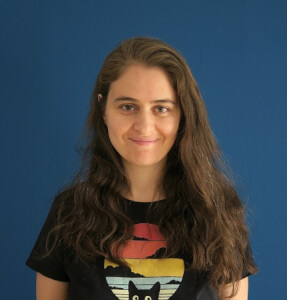
Özge Ata
87. Fermenting Futures (Diethard Mattanovich, Anna Dumitriu, Alex May, Özge Ata)
Özge Ata received her PhD degree in 2017 with a focus on transcriptional and promoter engineering in Pichia pastoris, a workhorse yeast for recombinant protein production. After completing her PhD studies, she was awarded an Ernst Mach grant funded by the Austrian Agency for International Cooperation in Education and Research (ÖAD) for her project on the energy and carbon utilization metabolism of P. pastoris based on its fermentative characteristics. Currently she is working on a project on a synthetic organo-autotrophic P. pastoris that is capable of CO2 fixation. By using the state-of-the-art techniques and metabolic modelling methods, this project aims to engineer a P. pastoris strain that can capture CO2 and metabolize it into valuable organic molecules. Recently she has been awarded a Lise Meitner grant by The Austrian Science Fund (FWF) where she will lead a project to explore the genetic mechanisms and evolutionary origins of fermentation in yeast.
Özge Ata
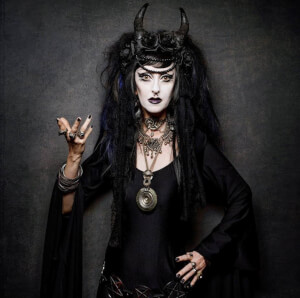
Patricia MacCormack
141. Radical Vulnerabilities (Margherita Pevere, Theresa Schubert, Marco Donnarumma, Patricia MacCormack, Jurij Krpan)
Patricia MacCormack is Professor of Continental Philosophy at ARU, Cambrige UK. She is the author of Cinesexuality, Posthuman Ethics and The Ahuman Manifesto, the co-editor of Deleuze and the Schizoanalysis of Cinema, Deleuze and the Animal, Ecosophical Aesthetics, and the editor of The Animal Catalyst.
Patricia MacCormack
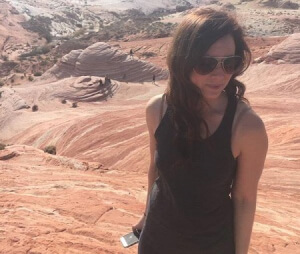
Paula Burleigh
178. Bioscientific Imaginaries (Kathy High, Marta de Menezes, Jennifer Willet, Byron Rich and Paula Burleigh)
174. Staying in touch: sci-fi experiments for post-coronavirus art curating (Marta de Menezes, Annick Bureaud, Regine Rapp, Christian de Lutz, Byron Rich, Paula Burleigh, Francesco Kiais, Jill McDermid-Hokanson and Christl Baur)
174. Staying in touch: sci-fi experiments for post-coronavirus art curating (Marta de Menezes, Annick Bureaud, Regine Rapp, Christian de Lutz, Byron Rich, Paula Burleigh, Francesco Kiais, Jill McDermid-Hokanson and Christl Baur)
Paula Burleigh is an Assistant Professor of Art History at Allegheny College in Pennsylvania, U.S., where she is also director of the Allegheny Art Galleries. Burleigh completed her PhD at the CUNY Graduate Center in New York, NY. She was previously a Joan Tisch Teaching Fellow at the Whitney Museum of American Art and a frequent lecturer at the Museum of Modern Art. Her writing has appeared in the Brooklyn Rail, Artforum.com, Stedelijk Studies, and in various edited volumes. Burleigh's current research project is on feminist speculative fiction in contemporary visual art.
Paula Burleigh
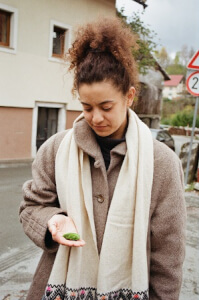
Paula Flores
137. Quelites (Paula Flores)
Tijuana, Mexico Selected exhibitions 2019 Is this intimacy Curators agenda. 2019 Ibiennale Honolulu,Hawaii . 2019 Consciousness reframed Porto, Portugal. 2018 Being here with you Museum of Contemporary art of San Diego. 2017 Event Horizon, Joshua Treenial, California. 2017 Boiling Process. 2015 Revision Glocal/Glocal Review El Cubo, Tijuana, Mexico. 2015 Boiling Process JAUS, Los Angeles. 2014 Boiling Process, TJINCHINA, Tijuana, Mexico Solo exhibitions 2018 Litos Liquen CECUT Tijuana. 2017 Semilla del paraíso ICM Vienna, Austria. 2017 Flora nativa en el paisaje invadido, Deslave, Tijuana. Artist Residencies 2016 Kunsthalle Exnergasse, Vienna, Austria. 2017 Kulturdrogerie Vienna, Austria. 2017 ART OMI, New York, U.S.A. Artist Talks 2019 21st International Consciousness Reframed, Porto, Portugal 2018 29 Sessions in Contemporary Art, Museum of Contemporary Art of San Diego, U.S.A. 2017 Semilla del Paraiso, Institute of Mexican Culture with curator KJ Baysa, Vienna, Austria. 2017 Laser Talks, UCSB, U.S.A.
Paula Flores
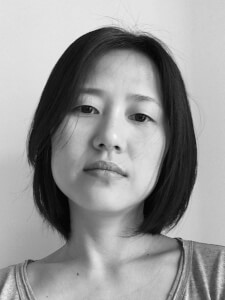
Paula Kaori Nishijima
114. Game of Swarms (Paula Kaori Nishijima)
Paula Nishijima is a Brazilian visual artist based in the Netherlands. Her research-led practice unfolds on the crossroads of life science, technology and participatory social practice. Exploring individual and collective motivations, either through happenings or longer processes of interaction, her production materialises into different digital media, such as video, web applications and photography. Paula received a MA in Arts and Culture from Leiden University, Netherlands and holds a BA in Visual Arts from the Universidade Estadual Paulista Júlio de Mesquita Filho, São Paulo, Brazil. Selected exhibitions include ‘Teachable Moment’, Stove Works, Chattanooga, Tennessee, USA (2020); ‘Here and Now’, Media Art Festival Friesland, Leeuwarden, Netherlands (2021) and Mutant Institute of Environmental Narratives, Matadero Madrid, Spain (2019). She is part of Translocalia (www.translocalia.com), a network of artists, curators, designers, and professionals from different domains that plan for the future through art.
Paula Kaori Nishijima
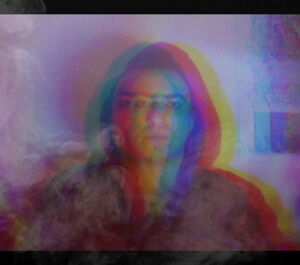
Pêdra Costa
96. All You Have to Lose is Ecstasy: The Intuitive, Occult and Somatic as Methods of Inquiry (Monica C. Locascio, Pêdra Costa, Zosia Hołubowska, Florentina Holzinger, Daniela Brill Estrada and Elisabeth von Samsonow)
Pêdra Costa is a ground breaking, formative Brazilian, urban and visual anthropologist and performer based in Berlin that utilizes intimacy to connect with collectivity. They work with their body to create fragmented epistemologies of queer communities within ongoing colonial legacies. Their work aims to decode violence and transform failure whilst tapping into the powers of resilient knowledge from a plethora of subversive ancestralities that have been integral anti-colonial and necropolitical survival.
Pêdra Costa
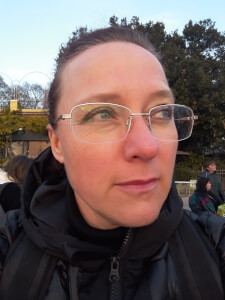
Polona Tratnik
133. The project Lygophilia (Robertina Sebjanic, Annick Bureaud, María Antonia González Valerio, Polona Tratnik)
Polona Tratnik is Scientific Councilor at Institute IRRIS, Full Professor and Dean of Faculty for Slovene and International Studies of New University. She was a Fulbright visiting scholar and guest professor in the USA, China, Finland, and Mexico. She is the president of the Slovenian Society of Aesthetics, and vice-secretary general of the International Association of Aesthetics. She has authored Umetnost u savremenosti (Orion, 2018), Conquest of Body. Biopower with Biotechnology (Springer, 2017), Hacer-vivir más allá del cuerpo y del medio (Herder, 2013). Her research fields comprise: aesthetics, philosophy of art and science, media theory and interdisciplinary studies of fairy tales. She is a pioneer bio artist. URL: https://independent.academia.edu/PolonaTratnik; www.polona-tratnik.com.
Polona Tratnik
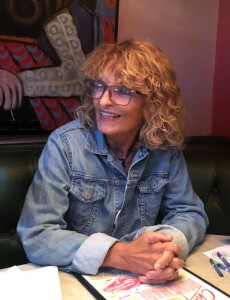
Polyxene Kasda
88. Myth/Network (1990-2017) - The epistemology of myth (Mariana Ziku, Polyxene Kasda)
PolyXene Kasda is a Greek-Alexandrian polymath artist working at the intersection of art, science and the humanities. She received her academic education in Physics-Chemistry in Cairo and Psychology-Sociology in Athens, while trained in fine arts at the Soeur Hermann Besancon workshop of Alexandria in Egypt. Her life-project Myth/Network 1990-2017 (ΕΜΣΤ, code no. 1595, 91) encompasses a diverse body of work that includes rhizomatic structures (Cultural Contribution Award University of Lucian Blaga, Sibiu 07), multi-sensorial hybrid mappings, topos-engendering R-L board games, linguistic/numerical structures (Honorary Medal, EETE 09), innovative material PXK (Golden Medal OFA Beijing 08) and horticultural metaphor-generated SAGA (Social Action Generative Art) projects (Life Achievement Award Visionary Art, Lecce, Italy 17).
Polyxene Kasda
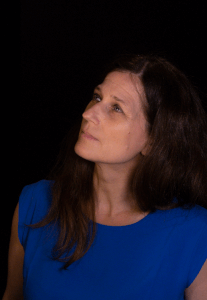
Regine Rapp
174. Staying in touch: sci-fi experiments for post-coronavirus art curating (Marta de Menezes, Annick Bureaud, Regine Rapp, Christian de Lutz, Byron Rich, Paula Burleigh, Francesco Kiais, Jill McDermid-Hokanson and Christl Baur)
180. The Camille Diaries. Current Artistic Positions on M/otherhood, Life and Care (Regine Rapp and Christian de Lutz)
180. The Camille Diaries. Current Artistic Positions on M/otherhood, Life and Care (Regine Rapp and Christian de Lutz)
Regine Rapp M.A. is an art historian, curator and director of Art Laboratory Berlin. Her current research focuses on installation art, artist books, hybrid art and art & science collaborations. She has taught art history at the Burg Giebichenstein Kunsthochschule Halle. As co-founder and director of Art Laboratory Berlin, she researches, curates and publishes on 21st century art at the interface of (natural) science and technology. In this context she conceived the international conferences “Synaesthesia. Discussing a Phenomenon in the Arts, Humanities and (Neuro)Science” (2013), “Nonhuman Agents” (2017) and “The Camille Diaries” (2020). In the project Mind the Fungi in collaboration with the TU Berlin she has worked at the interface between artistic and scientific research.
Regine Rapp
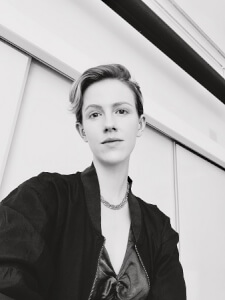
Remina Greenfield
160. Becoming Less and Less with No Relief (Remina Greenfield, Shuyi Cao)
A design researcher, Remina Greenfield works at the interface of technology, ecology and sustainable materials. Her collaborative explorations synthesize expert knowledge of engineers, artists, scientists, art fabricators and conservators. She holds an MFA in Design and Technology from Parsons School of Design where she is currently part-time faculty. She has taught at Stevens Institute of Technology and works as Director of Research for the artist, Anicka Yi. Remina is a member of NEW INC in the Creative Science track at the New Museum. Her work has been shown at Studio XX Montreal, HTMlles Festival, Plateforme Paris, REFRAG Festival, and Agora Rollberg Berlin, among others. She has received grants from Parsons for biofabrication research and from the Maryland Art Place for interactive public artworks. Her artwork has been featured in Neural Magazine and her written works have been published in The New Inquiry online magazine.
Remina Greenfield
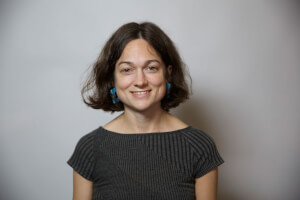
Renee Carmichael
123. Incomputable Feelings: Moving in the Esoteric Languages of Xul Solar and Befunge (Renee Carmichael)
Renee Carmichael is a researcher, writer, and artist. She is a doctoral candidate in Comparative Art Theory at the Universidad Nacional de Tres de Febrero in Argentina. Her thesis research focuses on the aesthetics of contemporary dance and code (algorithm), exploring a relationship between the formal and the feeling. She has a master’s degree in Interactive Media: Critical Theory and Practice from Goldsmiths College in London, has previously worked as a researcher in the Hybrid Publishing Lab at Leuphana University in Germany, is founder of the experimental publishing project Flee Immediately!, and is co-founder of the podcast Liminal Bits. Her research, writing, and artworks often bring together poetic and interdisciplinary ideas that explore the boundaries between theory and practice. Her texts have been published internationally in both academic and artistic publications including #exstrange: a curatorial intervention on eBay (Michigan University Publishing), Perífrasis Journal, Unlikely Journal, Sync.io, among others.
Renee Carmichael
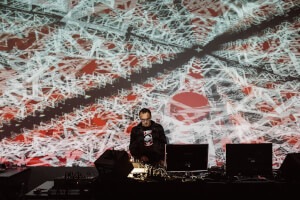
Robert Lisek
138. SIBYL (Robert Lisek)
Robert B. Lisek is an artist, mathematician and composer who focuses on systems, networks and processes (computational, biological, social). He is involved in a number of projects focused on media art, creative storytelling and interactive art. Drawing upon post-conceptual art, software art and meta-media, his work intentionally defies categorization. Lisek is a pioneer of art based on Artificial Intelligence and Machine Learning. Lisek is also a composer of contemporary music, author of many projects and scores on the intersection of spectral, stochastic, concret music, musica futurista and noise. Lisek is also a scientist who conducts research in the area of foundations of science (mathematics and computer science). His research interests are category theory and high-order algebra in relation to artificial general intelligence. Lisek is a founder of Fundamental Research Lab and ACCESS Art Symposium. He is the author of 300 exhibitions and presentations, among others: SIBYL - ZKM Karlsruhe; SIBYL II - IRCAM Center Pompidou; QUANTUM ENIGMA - Harvestworks Center New York and STEIM Amsterdam; TERROR ENGINES - WORM Center Rotterdam, Secure Insecurity - ISEA Istanbul; DEMONS - Venice Biennale (accompanying events); Manifesto vs. Manifesto - Ujazdowski Castel of Contemporary Art, Warsaw; NEST - ARCO Art Fair, Madrid; Float - Lower Manhattan Cultural Council, NYC; WWAI - Siggraph, Los Angeles.
Robert Lisek
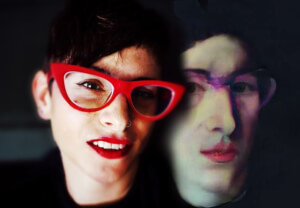
Roberta Buiani
167. Crossing boundaries, cutting borders. Looking for new narratives to make sense of this crazy, crazy world (Roberta Buiani)
is an interdisciplinary artist, media scholar and curator based in Toronto. She is the co-founder of the ArtSci Salon at the Fields Institute for Research in Mathematical Sciences (Toronto) and co-organizer of LASER Toronto. Her recent research creation project draws on feminist technoscience and on collaborative encounters across the sciences and the arts to investigate emerging life forms exceeding the categories defined by traditional methods of classification. Her artistic work has travelled to art festivals (Transmediale; Hemispheric Institute Encuentro; Brazil), community centres and galleries (the Free Gallery Toronto; Immigrant Movement International, Queens, Myseum of Toronto), and science institutions (RPI; the Fields Institute). Her writing has appeared on Space and Culture, Cultural Studies and The Canadian Journal of Communication among others. With the ArtSci Salon she has launched a series of experiments in "squatting academia”, by re-populating abandoned spaces and cabinets across university campuses with SciArt installations. Currently, she is a research associate at the Centre for Feminist Research at York University. ArtSci Salon website: https://artscisalon.com Personal http://atomarborea.net
Roberta Buiani
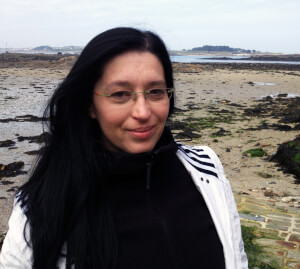
Robertina Sebjanic
133. The project Lygophilia (Robertina Sebjanic, Annick Bureaud, María Antonia González Valerio, Polona Tratnik)
Robertina Šebjanič (SI) is an internationally exhibited and awarded artist. Her artistic work deals with the cultural, (bio)political and ecological realities of aquatic environments. With her works she tackles the philosophical questions at the intersection of art, technology and science. Project are often realized in collaboration with others, through interdisciplinary and informal integration in her work. Robertina was awarded with Honorary Mention @Prix Ars Electronica 2016; nominated for STARTS2016 STARTS 2020 Award. In 2018, she (with Gjino Šutič) took part at residency programme at Ars electronica (Emap / Emare platform). She performed / exhibited in solo and group exhibitions as well as in galleries and festivals such as: Ars Electronica (Linz), Kosmica Festival at Laboratorio Arte Alameda(Mexico City), Le Cube (Paris), Art Laboratory Berlin, ZKM (Karlsruhe), re:publica (Berlin), Mladi Levi (Ljubljana), Device Art 5.015 (Zagreb & Eastern Bloc, Montreal), Eyebeam (New York), PORTIZMIR#3 (Izmir). Homepage: http://robertina.net/.
Robertina Sebjanic
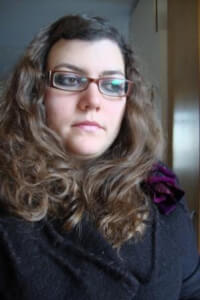
Roxani Giannou
34. Sacred circles: Mandalas and their many dimensions in art, education and therapy (Maria Athanasekou, Roxani Giannou, Evmorphia Leventi)
Roxani Giannou holds both a BA and MA in Fine Art, completed in Greece and Middlesex University in London respectively. She obtained her MA in the History of Western Esotericism at the University of Exeter specialising in the use of Symbols by C.G.Jung. She has worked at TATE, the Royal Academy of Arts and the Victoria & Albert Museum, where she was also trained in Museology, Cultural Institute Management and Museum Education Programs. Since 2013 she has lived in Greece where she creates and facilitates art workshops, including at Herakleidon Museum where she organises art programs which incorporate interactive practices with art theory. She is an art tutor at Open Education Institute, training school teachers to create art workshops for students. She is currently training to be a Family Therapist / Counsellor and is also attending an Art Therapy course, planning to combine art with psychology in her practice.
Roxani Giannou
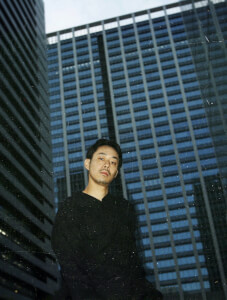
Roy Tamaki
117. An anechoic chamber as a point of contact between the two cultures (Kazuhiro Jo, Roy Tamaki, Takuya Ishikawa, Tomoya Matsuura)
Born in Japan Prefecture in 1981. Lives and works in Tokyo. Has released six music albums and performed at various music festivals in Japan and foreign countries.
Roy Tamaki
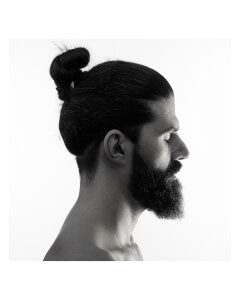
Rubén Vega Balbás
109. Void not equal to Null (Rubén Vega Balbás)
Rubén Vega Balbás (Madrid, 1975) Also known as Rubén Vejabalbán, I am an artist, a scholar, and a polymath committed with imagination and research in the field of artistic creativity. I work on topics such as technology and new media, photography and video-art, communicative devices, performance philosophy, and pedagogy of the arts. PhD in Fine Arts, Ed.S in Education, Languages and Media, MAS in Applied Creativity, BA in Communication, I am a member of the Spanish Association of Lighting Designers (AAI), of the ComAcAr research group in the Nebrija University, and co-founder of the Centro Imaginario de Estudios Artísticos (Madrid, Spain).
Rubén Vega Balbás
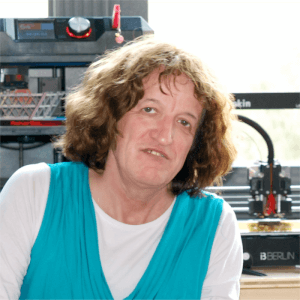
Rudolf Arnold
139. PLAY ME: sonification of sexual arousal for stage performances (Rudolf Arnold)
Rudolf Arnold graduated in mathematics and physics at the University of Ulm and dedicated his life to being a teacher. In 1980 he became active in media projects and cofounded Radio freeFM, which went on air in 1995. In 1996 he produced an award-winning radio feature about ecstasy. In 2006 he discovered the world of Cosplay, becoming one of the most ambitious male German cosplayers. Always eager to create new looks, he entered the smart fashion community in 2013. 2014 he became a member of EMU – experimental music ensemble Ulm. Very much himself a crossover artist, he featured as Hatsune Miku, a teenage virtual Japanese popstar, an essential part of the international performance “Still Be Here” in 2016. His latest invention was a unique sensor for scientific sex-researcher Dr. Nicole Prause in 2018. This sensor functions now as the key component for the sonification of sexual arousal in PLAY ME.
Rudolf Arnold
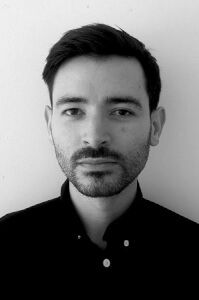
Salvador Miranda
32. The Simulated Real: Aesthetics and the Semblance of the Real in Terroristic Gameplay (Salvador Miranda)
Salvador Miranda is an artist and filmmaker based in Rotterdam. His work explores grand narratives and the images of our visual culture that (re)produce them. His works have been shown in IFFR (Rotterdam), Ruhrtriennale (Bochum) EYE Filmmuseum (Amsterdam), TENT (Rotterdam) Haiton Art Center (Taipei), among others. Salvador holds a Masters from the Piet Zwart Institute in the Netherlands.
Salvador Miranda
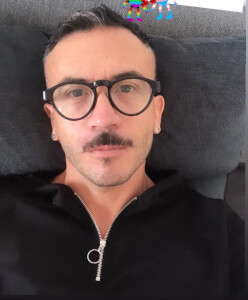
Sergio Patricio Valenzuela Valdés
69. Isolated attractors (Sergio Patricio Valenzuela Valdés)
Sergio is a Time-based media artist, art researcher and stage designer. He graduated from the Die Angewandte - Vienna, based in Austria. Winning the prize PQ’03 in Chile- Prague, playwright national in 2005, Iberescena 2011, Conicyt - Scientific grant 2012 - 2015, Fondart Chile 2006-2020. He has exhibited in: MAC and GAM Chile, U10 en Belgrade, MUMOK, OvalHalle and Kunsthalle in Vienna, The Room in Venice, Abrons art center- NYC, among others. Research topics; action-based art and lenses of observation.
Sergio Patricio Valenzuela Valdés
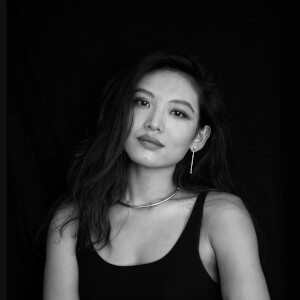
Shuyi Cao
160. Becoming Less and Less with No Relief (Remina Greenfield, Shuyi Cao)
Shuyi Cao is an interdisciplinary artist based in New York. She is the co-founder of DECOMPOSE, and is currently a member of NEW INC, New Museum, NY. She teaches at Parsons’ School of Art, Media, and Technology (AMT) , The New School. Shuyi’s works are driven by her philosophical contemplation of systems of knowledge and technology. Drawn from multidisciplinary backgrounds and interests, her practices are ongoing experiments of alchemical approaches to object making and knowledge production, from studio arts, research, to teaching and collaboration. Cao has participated in exhibitions at 490 Atlantic Gallery, NY; A.I.R. Gallery, NY; GRIDSPACE, NY; SLEEPCENTER, NY; Westbeth Gallery, NY; 25 East Gallery, NY; the Skybridge Art Space, NY; and BABZ Art Books Fair, NY. She has held positions as Artist-in-Residence at MASS MoCA in North Adams, MA (2018); and School of Visual Arts, NY (2017). www.shuyicao.com
Shuyi Cao
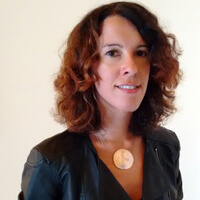
Silvia Casini
108. “In a locked and scrambled form: Art-Science scenes, objects and figures in corporeal transgression” (Dolores Steinman, Michael Sappol, Kimberly Johnson, Silvia Casini, Günther Seyfried)
Silvia Casini is a lecturer in visual culture and cinema at the University of Aberdeen. She studies the aesthetic, epistemological and social implications of scientific visualization with attention to emerging technologies. She deploys visual culture, science and technology studies (STS) and critical theory to explore how images and perception work within systems of knowledge. Her work has been published in international journals including Configurations, Leonardo, Contemporary Aesthetics, Nuncius, The Senses and Society, Forum for Modern Language Studies, Elephant&Castle. Her monograph in Italian, Il Ritratto Scansione was published by Mimesis (2016). Thanks to a Leverhulme Trust Research Fellowship she completed her second monograph Giving Bodies back to Data. Image-makers, Bricolage and Re-invention in Magnetic Resonance Technologies (MIT Press Spring 2021). Forthcoming book chapter: “What Counts as Data and for Whom?: The Role of the Modest Witness in Art-Science Collaboration" in Rogers at al., Routledge Handbook of Art, Science, and Technology Studies,https://www.routledge.com/Routledge-Handbook-of-Art-Science-and-Technology-Studies/Rogers-Halpern-Hannah-Ridder-Vignone/p/book/9781138347304
Silvia Casini
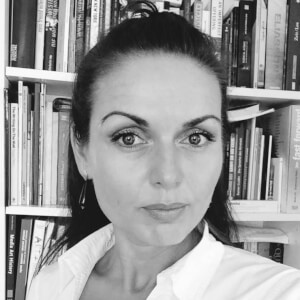
Sonja Schachinger
87. Fermenting Futures (Diethard Mattanovich, Anna Dumitriu, Alex May, Özge Ata)
Sonja Schachinger (AT) is an art mediator and an art&science curator. She has many years of international exhibition experience and worked for the Ars Electronica Festival, Atelier Victoria Coeln, luminale Frankfurt, Atelier Lucas Zallmann, BIO-FICTION Festival, Studio Sonja Bäumel, #TullnART, Kunstmeile Krems, Mauthausen Committee Austria and the spell GmbH.
Sonja Schachinger
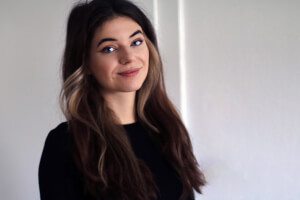
Sophie Publig
120. De-Mystifying GMOs (Sophie Publig, Julia Jarrett)
Sophie Publig is Senior Scientist and Doctoral Candidate at the Peter Weibel Research Institute for Digital Cultures at the University of Applied Arts Vienna. She studied Art History at the University of Vienna, the Free University Berlin, and Uniwersytet Warszawski and wrote her Master’s Thesis on Pierre Huyghe and the Capitalocene. She is interested in the intertwinements of biology, ecology, and technology as well as the bio-political implications thereof. Currently, she is writing her dissertation on cybernetics and artificial life, following the evolution of the question “What is Life?”, and re-negotiating the entanglement of living and non-living beings. Her academic approach is deeply cross-disciplinary, encompassing frequent trips to other fields of study like Architecture, Anthropology, Mathematics, and Contemporary History as well as cultural activism. Her research interests encompass the Anthropocene, the evolution of life, and philosophy of biology.
Sophie Publig
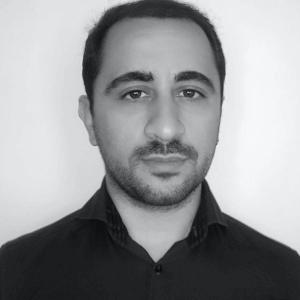
Stavros Didakis
73. Augmentations of Perception++ (Stavros Didakis)
Stavros Didakis is an Associate Professor in Interactive Media Arts at New York University (NYU Shanghai), and a senior researcher with the Institute of Digital Arts and Technology (iDAT, University of Plymouth). Stavros’ practices focus on the speculation of technological futures with a focus on the development of architectural augmentations and inhabitant personalization, exploring sensorial interfaces and technological frameworks as extensions of human environments. Stavros has won grants and awards in creative technologies, he has exhibited his interactive works in international exhibitions and biennale, and he has made numerous publications in conferences, journals, and books.
Stavros Didakis
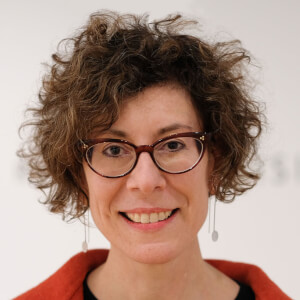
Stephanie Rothenberg
77. Aphrodisiac in the Machine (Stephanie Rothenberg)
Stephanie Rothenberg’s interdisciplinary art draws from digital culture, science and economics to explore relationships between human designed systems and biological ecosystems. Moving between real and virtual spaces her work investigates the power dynamics of techno utopias, global economics and outsourced labor. Her recent project examines the ethics of bioengineering nonhuman life for future human survival. She has exhibited throughout the US and internationally in venues including Eyebeam (US), Sundance Film Festival (US), House of Electronic Arts / HeK (CH), LABoral (ES), Transmediale (DE), and ZKM Center for Art & Media (DE). She is a recipient of numerous awards, most recently from the Harpo Foundation and Creative Capital. Her work is in the collection of the Whitney Museum of American Art and has been widely reviewed including Artforum, Artnet, The Brooklyn Rail and Hyperallergic. She is Associate Professor in the Department of Art at SUNY Buffalo in New York.
Stephanie Rothenberg
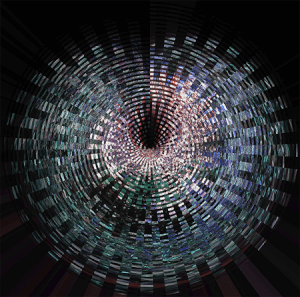
Takuya Ishikawa
117. An anechoic chamber as a point of contact between the two cultures (Kazuhiro Jo, Roy Tamaki, Takuya Ishikawa, Tomoya Matsuura)
Takuya Ishikawa
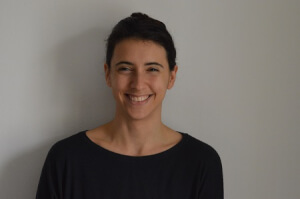
Talia de Vries
172. Demain il faut que tu t'en aille (Talia de Vries)
Talia De Vries, originally from Tel Aviv, based between Paris and Tel Aviv. She graduated from the Research Studios pilot#2 program in P.A.R .T.S in 2016, and holds a B.A in Performing Arts from the University of Paris 8, which she obtained during her studies in CNDC of Angers, France in 2009/2011. Since 2013, Talia has been developing her artistic work, mainly focused on notions such as time and duration. She worked and collaborated as well with artists such as Emmanuelle Huynh, Arkadi Zaides, Olga de Soto and Ana Wild. Since 2016, she has been working closely with Vicente Colomar (SP) on the projects Black Noise and La Quietud. Alongside her artistic work, Talia was also the co-artistic director of the ‘RoomDances’ Festival in Israel, directed by the artist Amos Hetz. And worked in the Israeli National Digital Collection project of the establishment of a digital archive for Israeli dance.
Talia de Vries
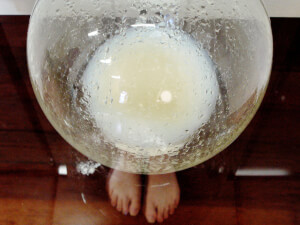
Tarsh Bates
182. Body Shopping – challenging convention in the donation and use of bodily materials through art practice (Tarsh Bates, Isabel Burr-Raty, WhiteFeather Hunter, Charlotte Jarvis, Hege Tapio, Adam Zaretsky and Miriam Simum)
I am a scavenger: a feminist, an artist, a scientist. What, how, why matter to me. I am a descendant of the exhalation of cyanobacteria and millennia of evolution. My body seethes and pulses with hundreds of other species, fashioned by tiny lives and deaths, host to a thriving ecology. We are in relentless re-orientation, tentatively traversing the affordances of each other’s bodies. Like an ant, I palp and stroke/sniff at the edges to discover what is good to take back to the nest. Like a cat, I bask in the fascinating and disdain the disinterested. Like a dog, I roll in the rotten and run off with thrown sticks. I forage knowledge, materials, ideas, tools, and hunt transient alliances. I transmogrify ingredients into evocative victuals, sampling and nibbling, testing and sipping, kneading and folding, assembling and serving. I offer the human body as transspecies degustation, a site of sustenance for nonhuman life, food and shelter and kinships.
Tarsh Bates
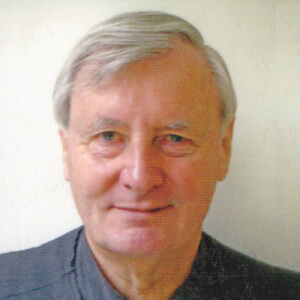
Terry Trickett
115. Patterns of Existence, from cosmic to cellular and neural to musical (Terry Trickett)
125. 'Passeggiata': a paradigm for the times in which we now live (Terry Trickett)
125. 'Passeggiata': a paradigm for the times in which we now live (Terry Trickett)
Working previously as an architect and designer, Terry Trickett has now become an artist performing Visual Music worldwide at new media festivals and conferences. Sometimes the inspiration for his pieces is primarily musical; at other times, he uses Visual Music as a means of tackling a difficult subject or putting forward a controversial point of view. Always, he aims to share his ideas by combining animated visual imagery with musical performance on solo clarinet. As a participatory form of communication, Terry Trickett finds that Visual Music is affective because it succeeds in engaging with audiences at both an intellectual and emotional level. He has attended the last two Consciousness Reframed conferences, in Beijing 2017 where he presented and performed ‘An astonishingly intricate architecture: Visual Music of the Brain and Mind and in Porto 2019 where he presented and performed ‘A stride towards sentient cities: Architecture as performance art’.
Terry Trickett

Test Testington
9999. Name of the testing paper and presentation (Test Testington, Other Authors)
9999. Name of the testing paper and presentation2 (Test Testington, Other Authors2, Other Authors)
9999. Name of the testing paper and presentation2 (Test Testington, Other Authors2, Other Authors)
This is a test please ignore - tets
Test Testington
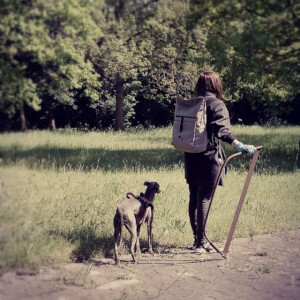
Theresa Schubert
141. Radical Vulnerabilities (Margherita Pevere, Theresa Schubert, Marco Donnarumma, Patricia MacCormack, Jurij Krpan)
Theresa Schubert is a Berlin-based artist exploring unconventional visions of nature, technology and the self. She holds a PhD in Media Art from Bauhaus-University Weimar. Her work combines audiovisual and biomedia to conceptual and immersive installations or performances. In her artworks, living organisms as well as algorithms become meaningful co-creators, investigating the relationship of humans to their environment and the emergence of matter and meaning beyond the anthropos. More recently, she works with high-res video environments and 3D Laser Scanning to challenge modes of perception and question the human-machine-nature relationship in hyper-tech societies.
Theresa Schubert
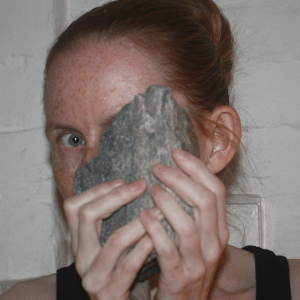
Tina Mariane Krogh Madsen
118. A Liminal Body of Performative Becoming (Tina Mariane Krogh Madsen)
Tina Mariane Krogh Madsen (DK) is an artist and researcher, who works in the intersection between performance art, sound, media, and matter. Madsen is currently a doctoral candidate at Aalto University School of Arts, Design and Architecture (FI), where her research evolves around environmental performance art and affective relations in a critical ethico-aesthetic practice. She has an art educational background from the College of Arts Crafts and Design (DK), where she began studying performance art in 1999, and holds a Master of Arts in Art History from Aarhus University (DK). Madsen is additionally the founder of performance protocols, a nomadic platform for instruction-based art and collaborative processes. Website: http://tmkm.dk/
Tina Mariane Krogh Madsen
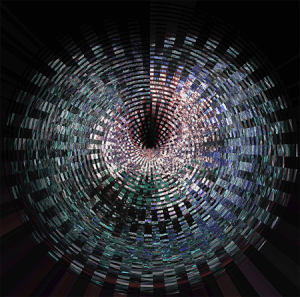
Tomoya Matsuura
117. An anechoic chamber as a point of contact between the two cultures (Kazuhiro Jo, Roy Tamaki, Takuya Ishikawa, Tomoya Matsuura)
Tomoya Matsuura
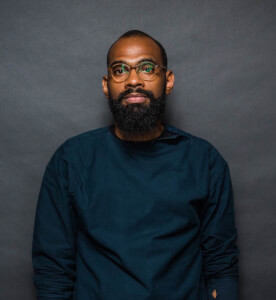
Triton Mobley
9. Volumetric Black (Triton Mobley)
Triton Mobley is a new media artist and researcher whose interventionist works, and guerrilla performances have been exhibited at CURRENTS Virtual Festival, Geidai Games Online at Tokyo University of the Arts, Art Basel Miami and staged in New York, Boston, Providence, and across Japan. Triton’s praxis culls together critical making methodologies across performative installations, programmable fabrications and speculative industrial design—fashioning polemical art object assemblages that engender public reexamination. Triton holds an MFA in Digital+Media from the Rhode Island School of Design and is a PhD candidate in Media Arts + Practice and Annenberg Fellow at the University of Southern California. He is currently Assistant Professor of Studio Art Core at the Lamar Dodd School of Art in Athens, Georgia. Triton’s research is framed within economies of digital perceptions + cultural optics—problematizing notions of being situated between the discontinuities of emergent technologies and communities of marginality.
Triton Mobley
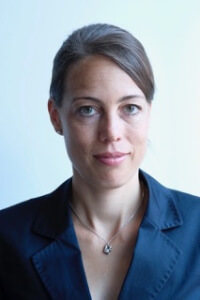
Ursula Ströbele
82. Concepts of liminality in (post-)human nature (Ursula Ströbele)
Ursula Ströbele is in charge of the Study Center for Modern and Contemporary Art at Zentralinstitut für Kunstgeschichte (ZI) in Munich, a freelance curator, and an author. She studied art history, information science and business administration before receiving her PhD at Heinrich Heine University in 2010. Recently, she served as artistic director of Kunstverein Arnsberg (2019), and held a post-doctoral position at the Institute of Art History and Aesthetics (2012-18), in Berlin’s University of the Arts. In her habilitation project she works on the sculptural aesthetics of the living, and focuses on sculptural phenomena at the interface of natural sciences and computer technologies, non-human living sculptures, and digital, time-based sculptures since 1960. Ströbele co-founded Theory of Sculpture (2015-20), a Deutsche Forschungsgemeinschaft-funded scientific network and curated a research exhibition on Hans Haacke‘s early biological systems at ZI and Museum Abteiberg, Mönchengladbach (2019/2020).
Ursula Ströbele
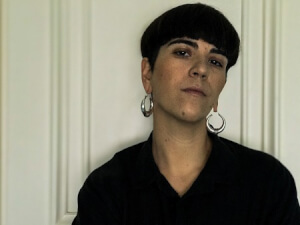
Valeria Di Sabato
14. Agnus Dei A/V Project beyond the faith (Valeria Di Sabato)
Alvax aka Valeria Di Sabato is an international sound designer, sound artist, music designer, music programmer and media installation artist. She is based in Sicily and Milano, her interests were conceiving electronic music and the production of experimental sounds. In Milan she attended a three year course in Sound Design and then a Masters in Sound Art. She worked with many internationally established sound artist and professionals in the audio field like Bill Fontana who gave her new ideas and ways to approach audio recording. Combining her interest for video games and music she discovered how to play using old consoles like gameboys and she became part of the micromusic Italy group playing in Milan (Leoncavallo). At the same time she was playing festivals and clubs with Robinija aka Roberta Busechian. She also performed at Cadorna Triennale in September 2016 and at Errant Sound Project space in Berlin.
Valeria Di Sabato
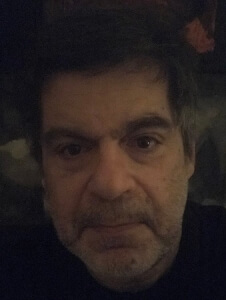
Vasileios Bouzas
152. Contemporary digital activism and its artistic perspectives (Vasileios Bouzas)
Bouzas, Vasileios studied Fine Arts at the Athens School of Fine Arts and got his MFA at the Pratt Institute of New York (aided by a Fulbright Foundation scholarship and a Greek State Foundation grand). He also holds a Degree in Civil Engineering from the National Technical University of Athens. His interests include drawing, painting, photography, audio, video, and interactive media. His work, which consists mainly of audio video installations, interventions in public spaces and explorations on web-art, has been shown in numerous exhibitions. He has participated in symposia, lectures, and events at international venues and is currently an Assistant Professor of the School of Fine Arts at the University of Western Macedonia, Greece [URL: http://vasileiosbouzas.artroom7.com].
Vasileios Bouzas
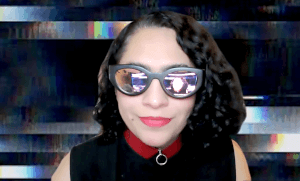
Verónica Mota Galindo
2. The Future of Cyberpunk (Verónica Mota Galindo)
Verónica Mota Galindo is a writer, sound artist, musician, body art performer, activist and teacher based in Berlin. After doing Philosophy studies in Mexico City, she/they worked as journalist and radio producer in Mexico, the US and Germany focusing on socio-political, Gender & cultural themes. Currently, she/they work as part of the AHACk: Sarah Connor Has a Dream zine collective which publishes their/hers written text on technology, transhumanism, cyberpunk, feminism & Capitalist Realism. She operates also under the name Espectra Negra in the dark ambient, ritualistic, techno and post-industrial music scene Berlin's. As activist, she/they work mainly spreading technological, critical and political content online as well as giving community based workshops on music production, collective healing and Techno-shamanism.
Verónica Mota Galindo
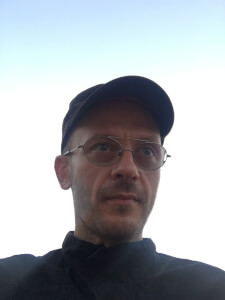
Vladimir Todorovic
128. Rendering Life: Transgressive Affinities Between Bio Art and Generative Art (Dejan Grba, Vladimir Todorovic)
Vladimir Todorovic is an artist and educator working with new technologies for immersive and generative storytelling. He teaches fine arts in the School of Design at University of Western Australia in Perth. His projects have won several awards and have been showcased at various festivals, exhibitions, museums and galleries including HANIFF, Cottbus (28th), Visions du Reel (49th, 46th, 44th), IFFR (42nd, 40th and 39th), Cinema du Reel, Festival du Nouveau Cinéma, BIFF, SGIFF, L’Alternativa, YIDFF, Siggraph, ISEA, Ars Electronica, Transmediale, Centre Pompidou, The Reina Sofia Museum, and Japan Media Art Festival.
Vladimir Todorovic
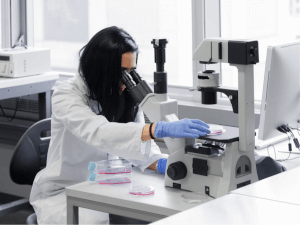
WhiteFeather Hunter
10. Mooncalf Menstrual Meat (MMM) (WhiteFeather Hunter)
182. Body Shopping – challenging convention in the donation and use of bodily materials through art practice (Tarsh Bates, Isabel Burr-Raty, WhiteFeather Hunter, Charlotte Jarvis, Hege Tapio, Adam Zaretsky and Miriam Simum)
182. Body Shopping – challenging convention in the donation and use of bodily materials through art practice (Tarsh Bates, Isabel Burr-Raty, WhiteFeather Hunter, Charlotte Jarvis, Hege Tapio, Adam Zaretsky and Miriam Simum)
WhiteFeather Hunter is a multiple award-winning Canadian artist and scholar. She is currently a PhD candidate in Biological Arts at the University of Western Australia, supported by a SSHRC Doctoral Fellowship, Australian Government International RTP Scholarship and University of Western Australia Postgraduate Scholarship. Before commencing her PhD, WhiteFeather was founding member and Principal Investigator of the Speculative Life BioLab at the Milieux Institute for Arts, Culture and Technology at Concordia University (Montreal) from 2017-2019. WhiteFeather's biotechnological art practice intersects postcolonial ecofeminism, witchcraft, micro- and cellular biology with performance, new media and craft. Recent presentations include at Ars Electronica, KIKK Festival, NZ Centre for Human-Animal Studies, University of the Arts Helsinki, and in numerous North American cities. WhiteFeather has conducted multiple collaborations with scientists, designers and artists: recent collaborative work with artist, Tagny Duff (Wastelands by Tagny Duff) received an Honourable Mention and STARTS prize nomination at Ars Electronica 2019.
WhiteFeather Hunter
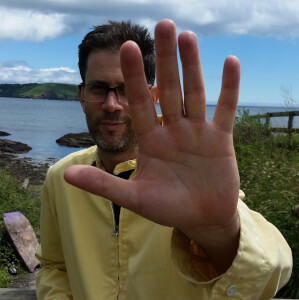
Yanai Toister
86. Renegade Monkies (Yanai Toister)
Dr. Yanai Toister is an artist, curator and educator serving as Director of the Unit for History and Philosophy at Shenkar College of Engineering, Design and Art in Israel. Toister’s artworks have been shown in numerous solo and group exhibitions (including Sandroni.Rey, Los Angeles; Dvir Gallery, Tel Aviv; Kunstahalle Luzern, Switzerland; Bolsky Gallery, Otis College of Art and Design, Los Angeles; Maison Europèenne de la Photographie, Paris; the 11th International Architecture Exhibition at the Venice Biennale; Kunstmuseen Krefeld, Haus Lange, Krefeld, Germany; Israel Museum). Toister’s writing has been published in various catalogues and journals (including Philosophy of Photography; CITAR; Mafte’akh Lexical Review; Ubiquity; Photographies). Toister’s book Photography from the Turin Shroud to the Turing Machine has recently been published in by Intellect/University of Chicago Press.
Yanai Toister
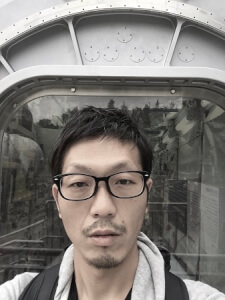
Yosaku Matsutani
51. Aesthetic Techniques Without Technology: Soichiro Mihara’s “[blanc] project” (Yosaku Matsutani)
Yosaku Matsutani is currently Associate Professor of the Faculty of Letters Department of Philosophy at Kokugakuin University, Tokyo in Japan. He specializes in aesthetic, art and media theory, and visual culture studies. He works on problems of art practices since the aesthetic turn, the relationship among science, technology and art, and the sensibilities in common among various organisms. His published works include papers on art practices in Japan since the 2010's, on a relationship between art and computation in the 21st century, on the aesthetic experience of the insect, and on image practices in outer space. His translations from the English include Rosi Braidotti’s The Posthuman (2013).
Yosaku Matsutani
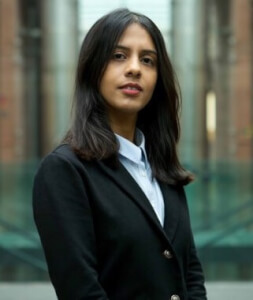
Zahra Mirza
Zahra Mirza is a lifelong learner from Pakistan, now living in Austria. She has an educational background in Sculpture and her professional experience extends into public service content and art direction for print and television media. She is also former director of RetroArts; artists platform in Pakistan. She has conducted design seminar and fiber arts studio courses at Beaconhouse National University, Lahore and sculpture workshops for Community College, Kunsthalle Wien and Academy of Fine Arts, Vienna. Currently, she is a student at the department of Cross Disciplinary Strategies and works as a tutor at the department of Media Theory at University of Applied Arts, Vienna.
Zahra Mirza
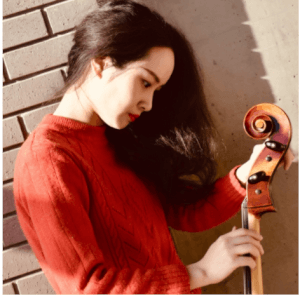
Ziwei Yan
Ziwei Yan is a Ph.D. candidate at Simon Fraser University, Canada. Areas of Study: Psychoanalysis (Lacan), Posthumanism, theories of consciousness, art theory.
Ziwei Yan
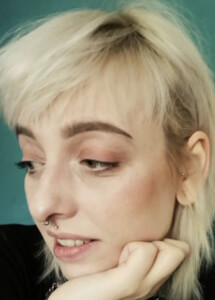
Zosia Hołubowska
96. All You Have to Lose is Ecstasy: The Intuitive, Occult and Somatic as Methods of Inquiry (Monica C. Locascio, Pêdra Costa, Zosia Hołubowska, Florentina Holzinger, Daniela Brill Estrada and Elisabeth von Samsonow)
Zosia Hołubowska (born in 1988 in Poland) is a queer sound artist, musician, and music curator, working and living in Vienna since 2016. They explore archives of folk Eastern European music, as well as traditions of magic, herbalism, and demonology, and experiment with archaic ways of singing to create queer soundscapes, installations, performances, and audio essays. They also create sound designs for performances. Most recently they have been curating and coordinating a queer synth laboratory Sounds Queer? where they organize, facilitate, and run workshops on electronic and synthesizer music for women, queer and non-binary people. Currently, they are Ph.D. Fellow at the Academy of Fine Arts. Their research deals with experimental queer methodologies in sound art and singing as a knowledge creation process. Hołubowska has performed in Mumok (Austria), Guggenheim Museum (Bilbao, Basque Country), La Gaite Lyrique (Paris, France), AMOQA (Athens, Greece), Sluice Gallery (London, UK); their last sound installation was shown at the Research Pavilion in Venice (Italy).
Zosia Hołubowska
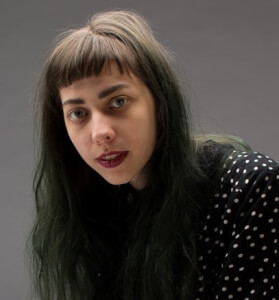
Zsofia Jakab
99. Touching the Posthuman (Zsofia Jakab)
Zsófia Jakab is an interdisciplinary artist and early career researcher from Hungary, who is currently based in Scotland. She has a BA in English Literature from Eötvös Loránd University, Faculty of Humanities and a MFA in Art and Humanities from Duncan of Jordanstone College of Art and Design. In her research and art practise she is primarily interested in the process of metamorphosis; the in-between existence. Through using Surrealist aesthetics and research on Posthumanism, she’s interested in the experience of being inside one’s body; the way transformation is enacted through physical objects, forms, textures, materials. szvphia@gmail.com www.zsofiajakab.co.uk
Zsofia Jakab
Department of Audio and Visual Arts
Ionian University
Secretariat - Conference TTT Webteam
Tsirigoti Square 7, 49100 Corfu
Ionian Islands Region, Greece
av-ttt@ionio.gr
Ionian University
Secretariat - Conference TTT Webteam
Tsirigoti Square 7, 49100 Corfu
Ionian Islands Region, Greece
av-ttt@ionio.gr





